




The Series 78 all analog consoles are all Trident through and through. The 78’s are Split/lnline consoles with individual channels in 4-way panels. Using an 8 subgroup configuration and incorporating 6 Aux sends, its routing options are vast and simple to use. Connections are fast and easy with DB-25’s throughout the board and XLR’s for Master and Main outputs. With the 80B EQ at its core, including selectable channel inserts and discrete preamps driving the inputs, the Series 78 consoles offer a wide array of summing and mixing options. The uncompromised sonic quality and compact footprint of the 78’s are able to meet any demand.



Input Impedance
Microphone: >2K0 electronically balanced
Line: >10K0 electronically balanced
Output Impedance

Left/Right, Monitor O/P, Group & Auxes <600 (Outsmarts® Drive) All other Outputs <1000
Crosstalk
Adjacent Channel: <-100dB (@20KHz) <-110dB (@1KHz)
Channel Fader Mute <-95dB (20Hz to 20KHz)


Monitor/Tape Return Mute <-85dB (20Hz to 20KHz)
Mix/Bus Assign <-80dB (20Hz to 20KHz)
Aux to Aux <-80dB (20Hz to 20KHz)
Maximum Input
Mic (XLR) Input (at min gain) +17dBu
Distortion/Noise (T.H.D +Noise) at +15dBu Output
Mic XLR Input to any Output (-20dBu input) <0.003% Line Input to any Output <0.003%

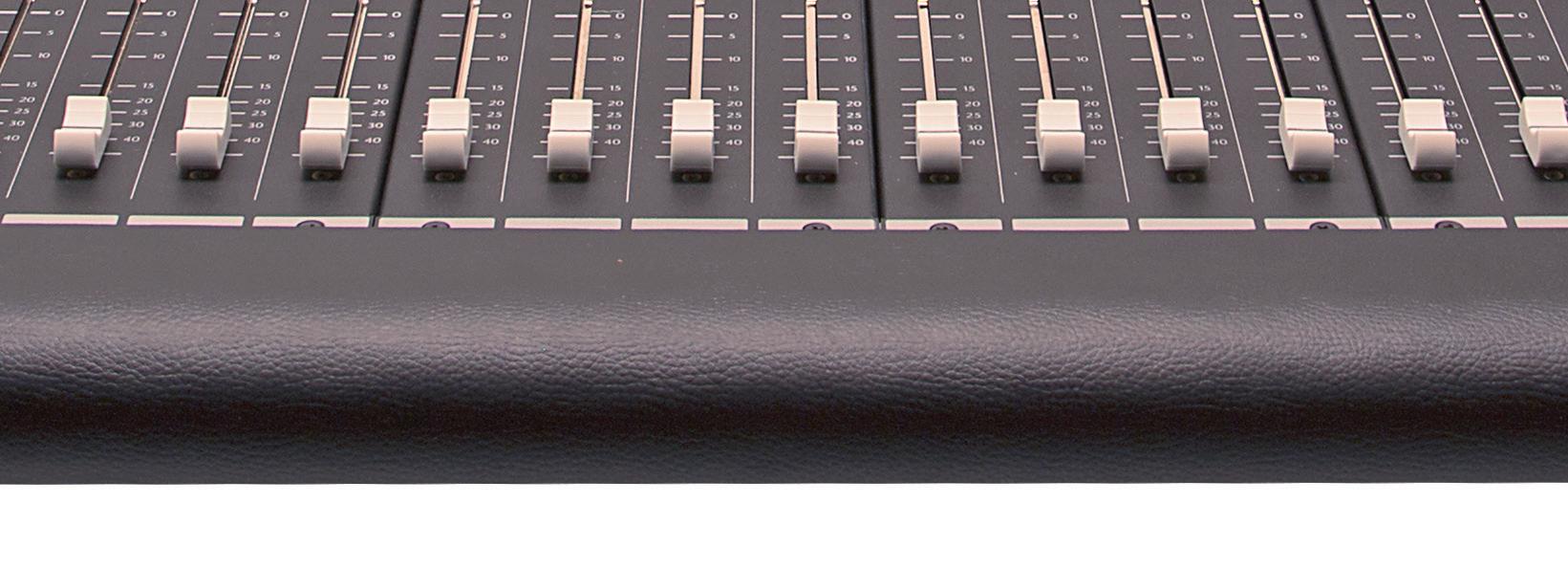

Monitor/Tape Return Input to any Output <0.003%
Noise
Mic EIN (20-20KHz, 1500 source, 60dB gain) <-128.5 dBu
Residual Bus Noise (Output fader at min) <-95 dBu
Stereo Bus Noise (40 inputs continually assigned) <-83 dBu (24 Input Mon/Tape Returns, 8 EFX Returns and 8 Master Tape Returns)
Bus Noise (24 inputs routed equiv. to 64 Inputs) <-77 dBu
Line (at min gain) +42dBu Channel Insert Return +22dBu All Output Insert Returns +28dBu
Maximum Output
Mix, Group, Aux, Monitor Outputs +26.5dBu (Into 6000) Insert Send, Alt Outputs +22dBu (Into 2K0)
The TRIDENT 78 Input module, just like it’s larger sibling the TRIDENT 88, is also a very flexible channel that can be used for recording, mixing and monitoring multi-track recordings. The module comprises 4 equal channels housed in a single metal front panel allowing it to be easily serviced.
The input is designed to accept both mic level and line level signals. It provides the user with the state of the art fully discrete Class A design microphone preamp. A four band Trident EQ is at the core of this console comprising fixed high/low shelving and variable mids. Monitor Inputs on every channel with the ability to swap the full EQ from the Input path to the Monitor path.
Access to the channel path is available through the means of a switchable post Mic preamp and post equalizer point allowing the user to insert an effects device via the standard channel insert and to switch it in and out via a top panel switch.
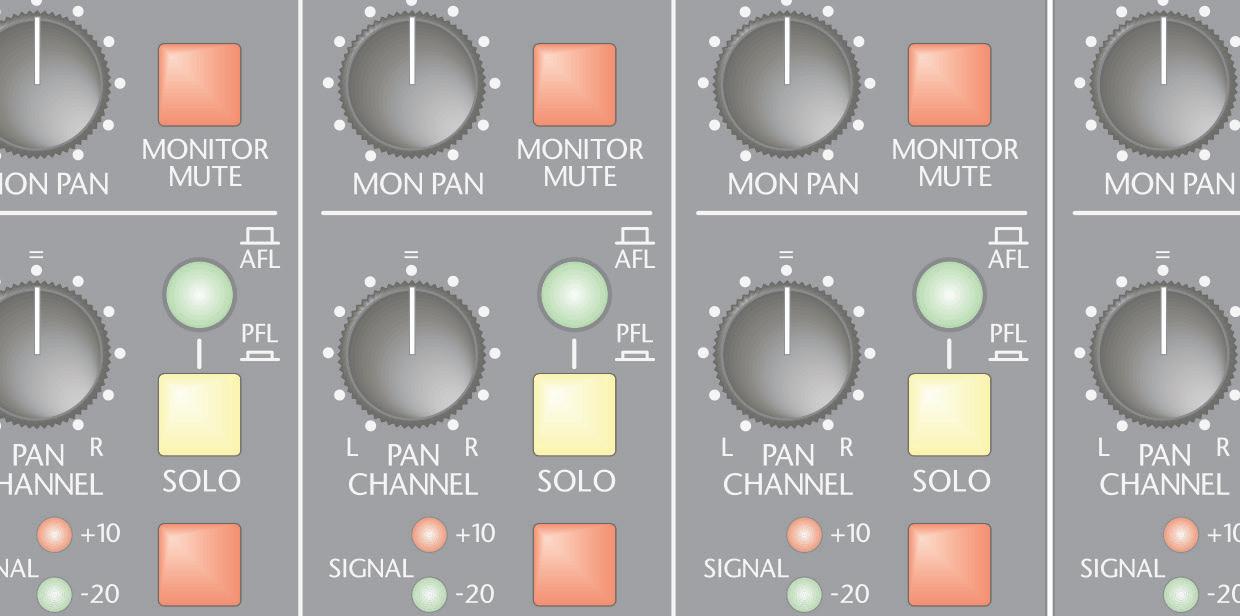

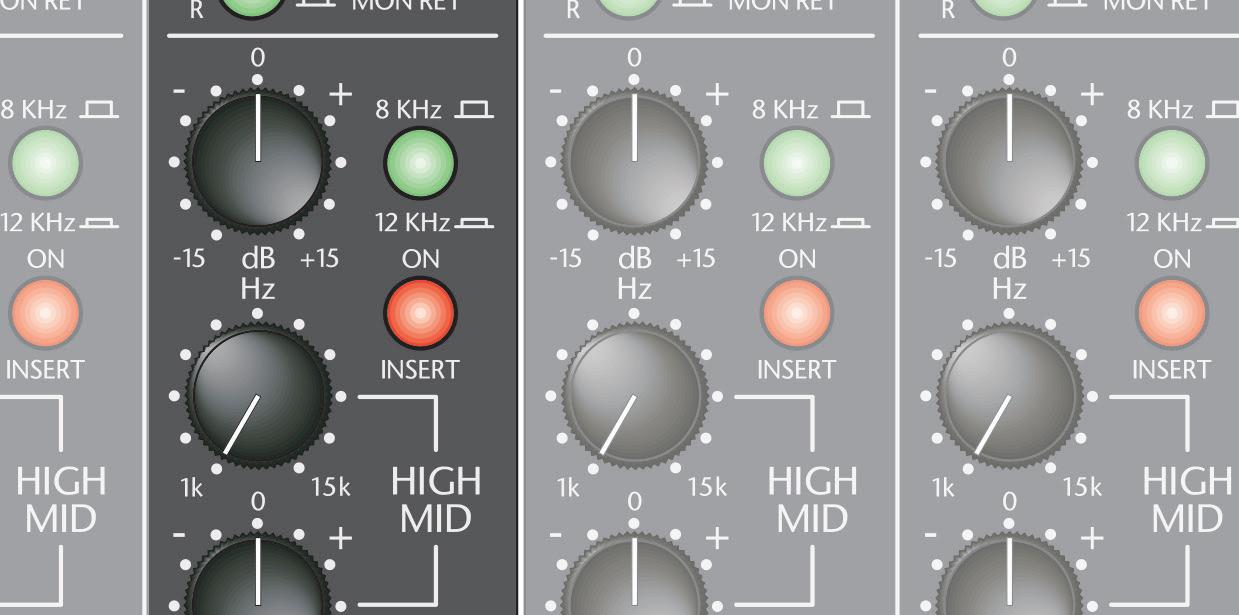
Six Auxiliary sends are provided, four mono and one stereo, each can be switched pre or post the channel fader. Aux 5/6 can also be selected between the channel and monitor path, greatly adding to the flexibility of the module.
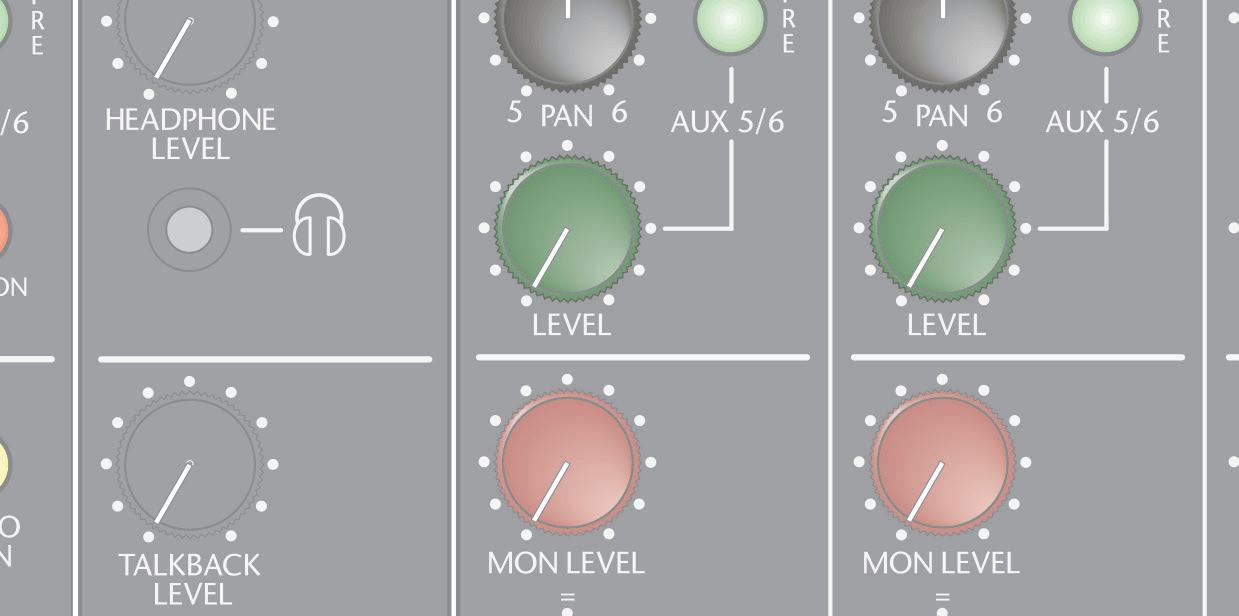


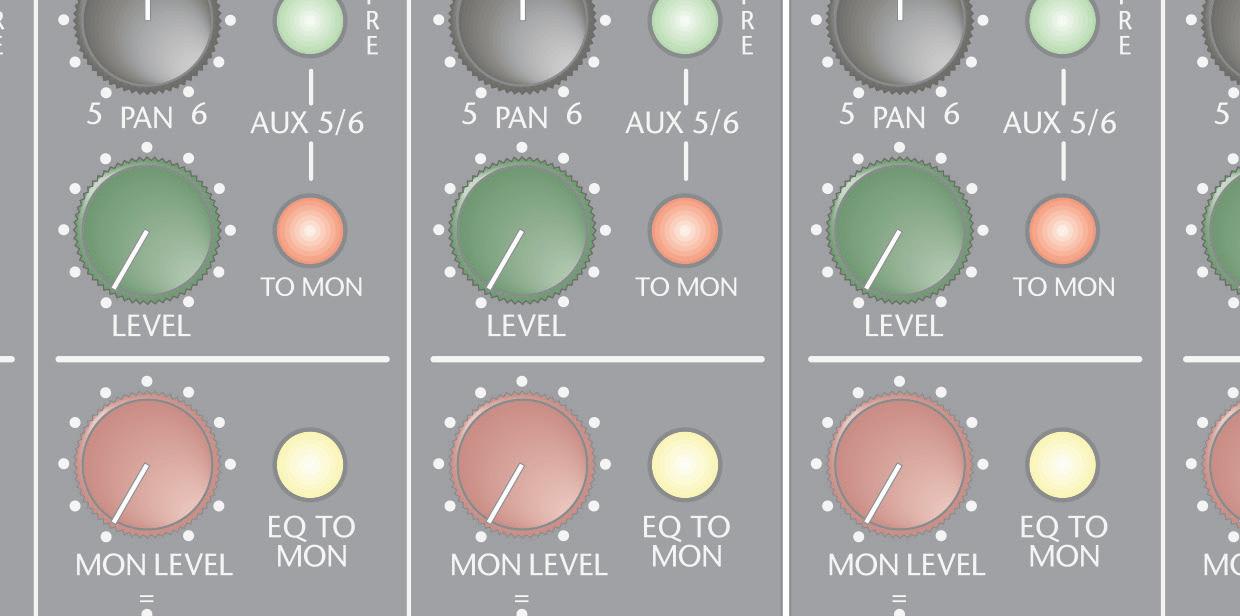


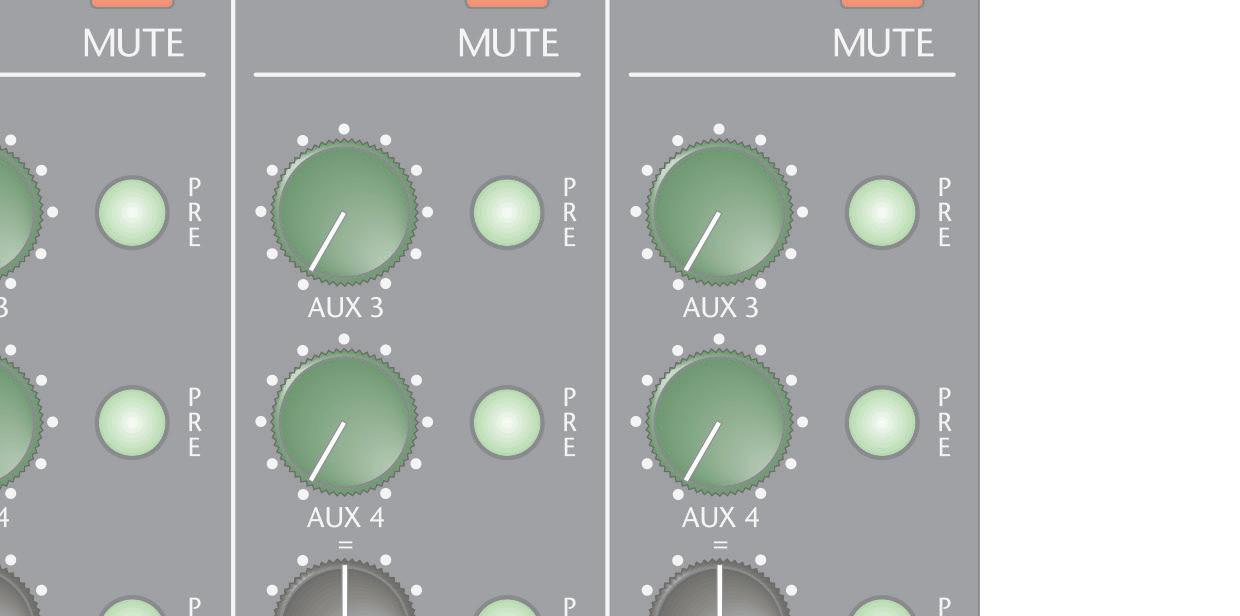

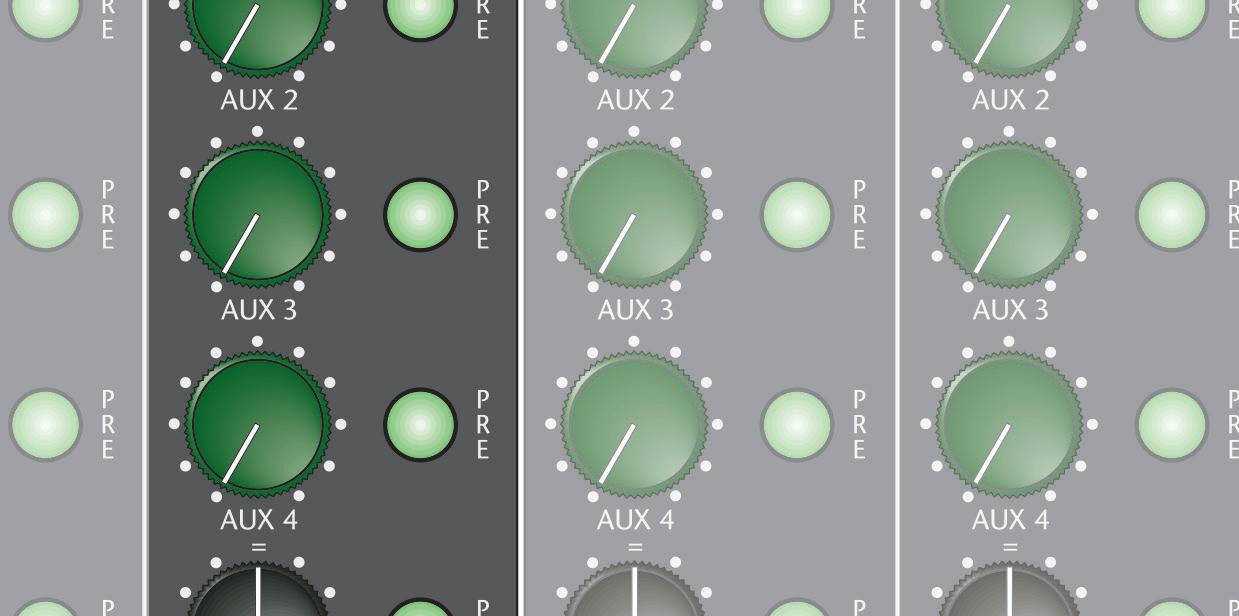
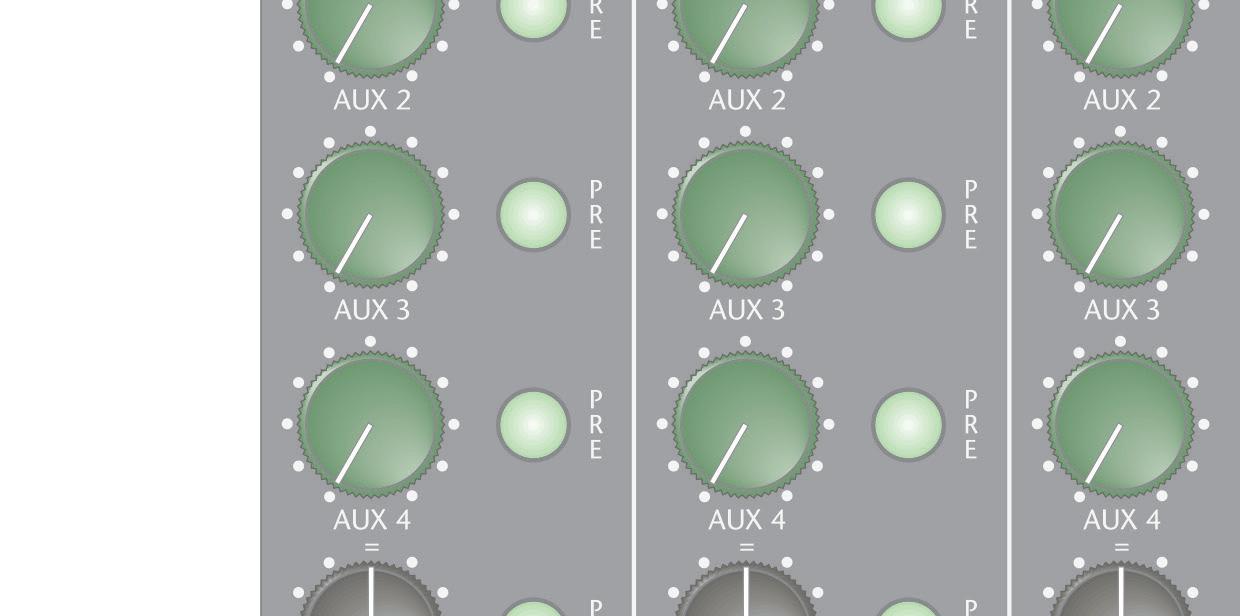
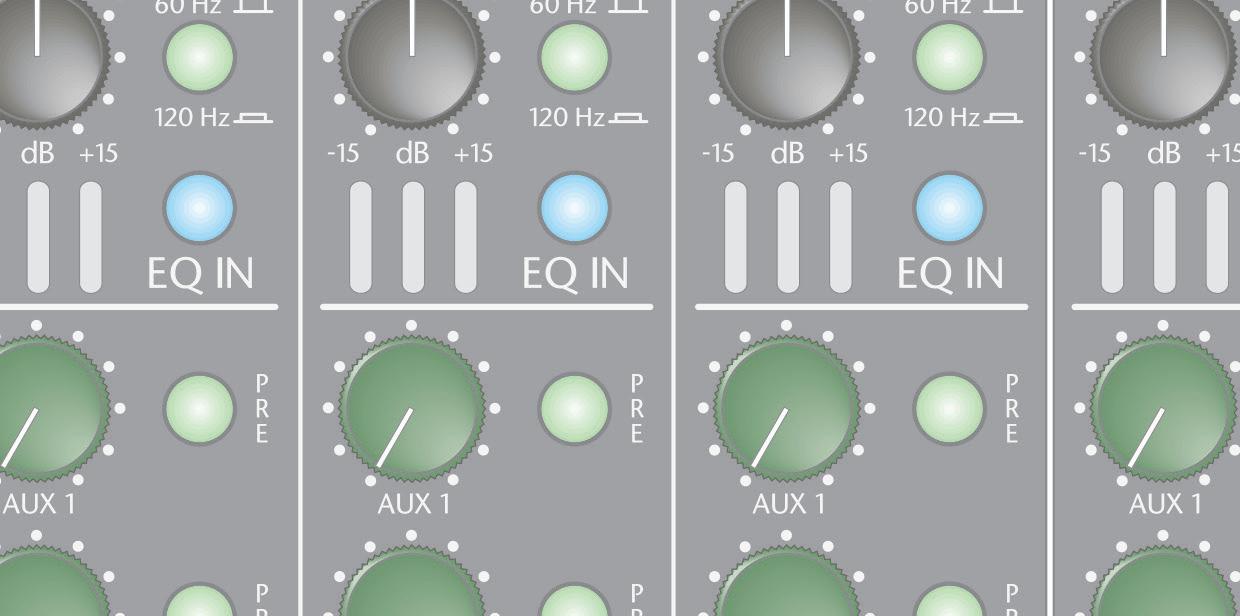
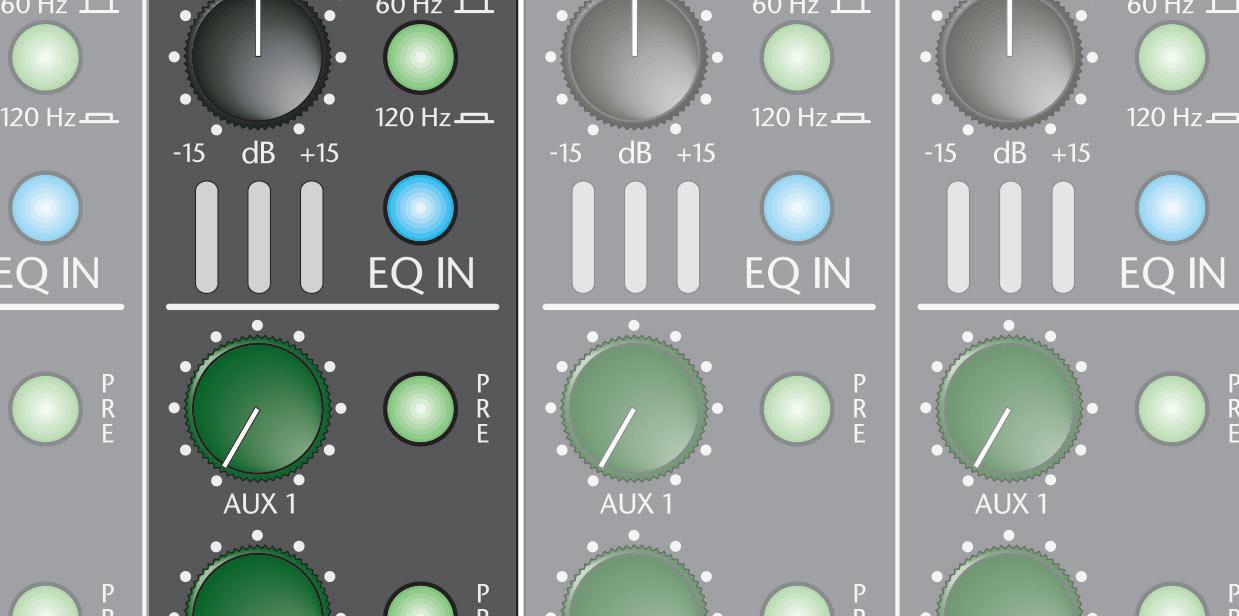
Each module incorporates a monitor section which is used to monitor a replay channel from a multi-track recording device. This
is in effect a separate signal path which ultimately feeds the master Left/Right outputs. By making the channel EQ and Auxiliary sends 5/6 to this path , this becomes an extremely versatile feature of the console. When monitoring the output of a multi-track recording device, it is possible to create a monitor mix with equalisation and reverb effects completely independently from the channel. These effects would also remain when the recording is played back thru the same monitor section.
When the module is used for mixing purposes the monitor section functions as an additional line input return to the main Left/Right mix, this input has access to a stereo pair of auxiliary sends. This effectively doubles the number of inputs per input module that are available on mix down mode. This with additional inputs on the master section greatly increases the inputs available, even on the smallest console.



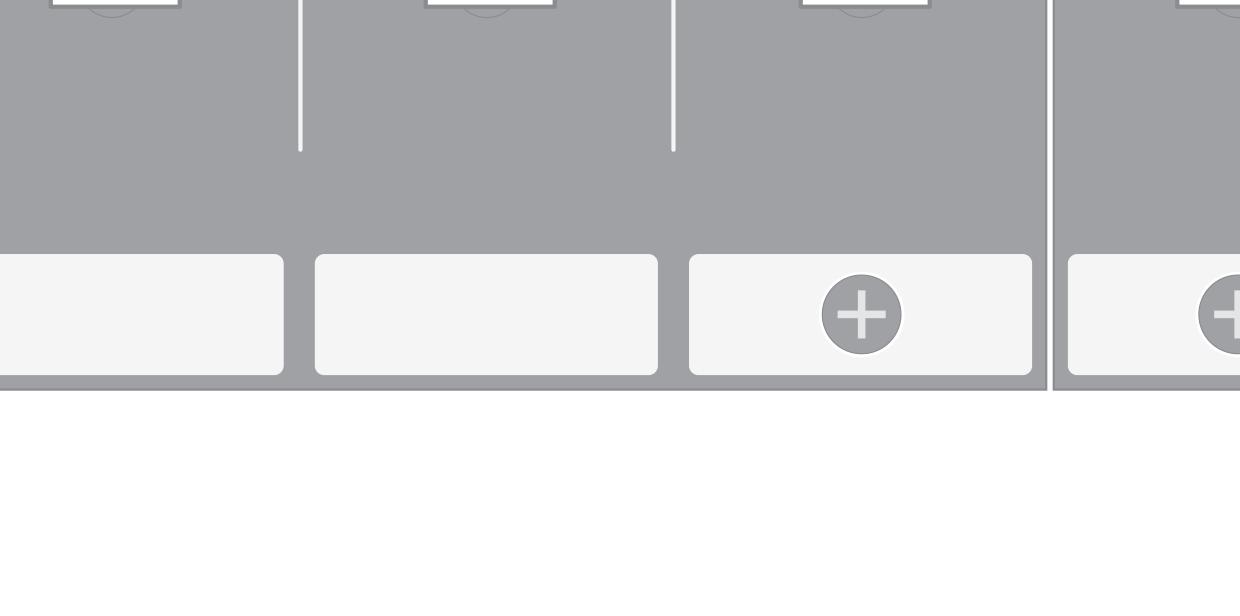

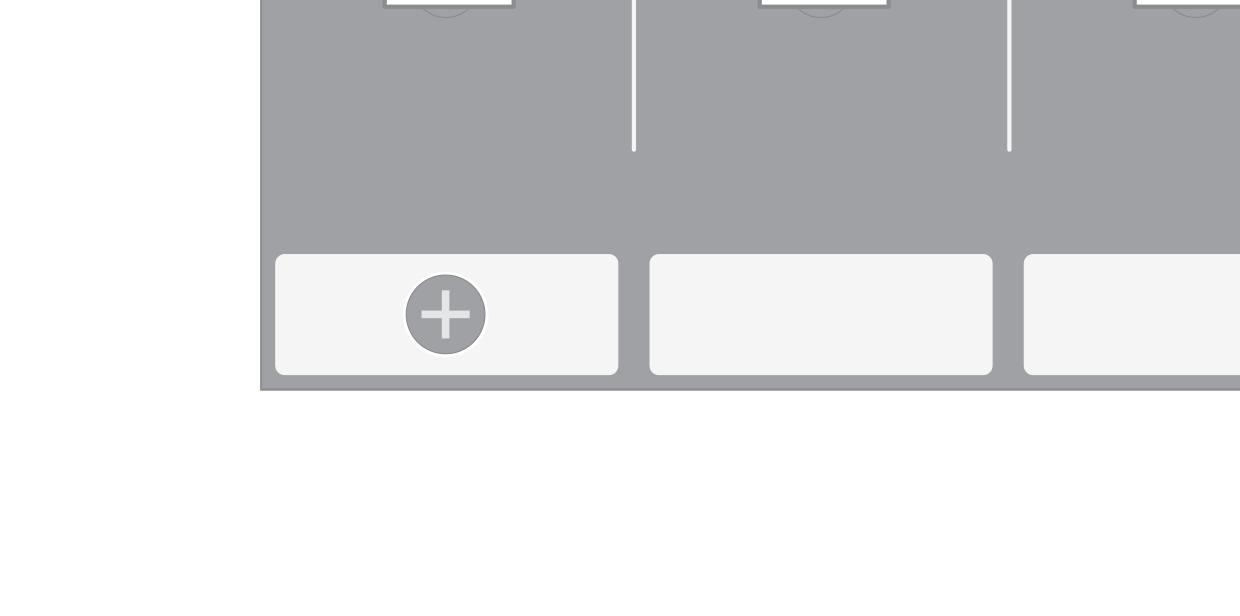
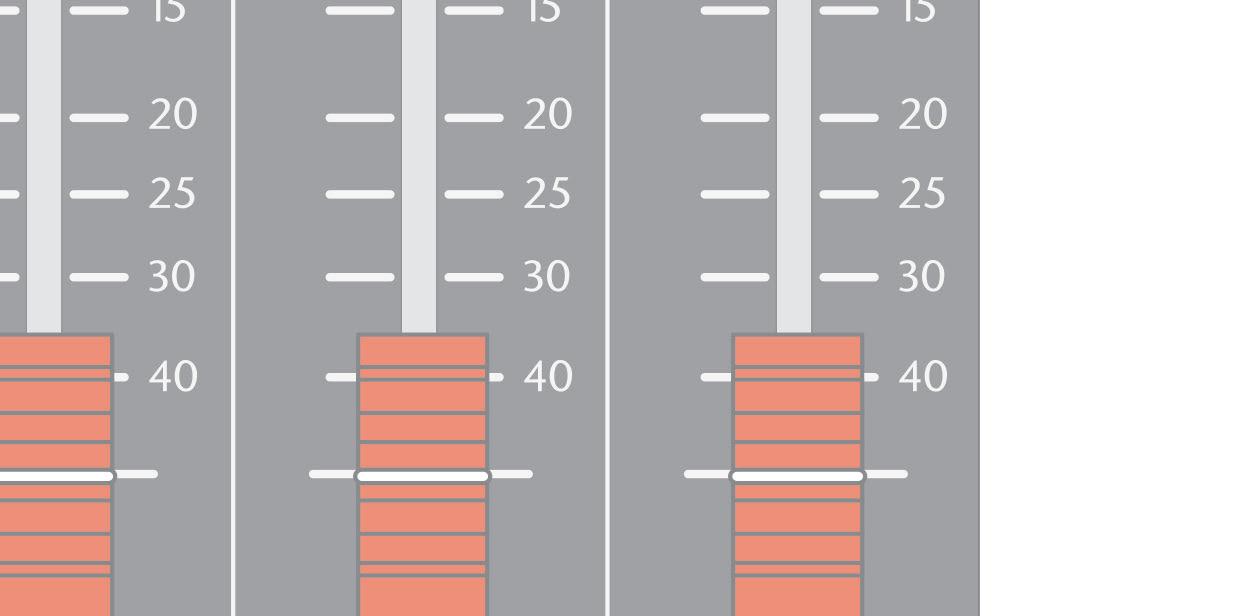
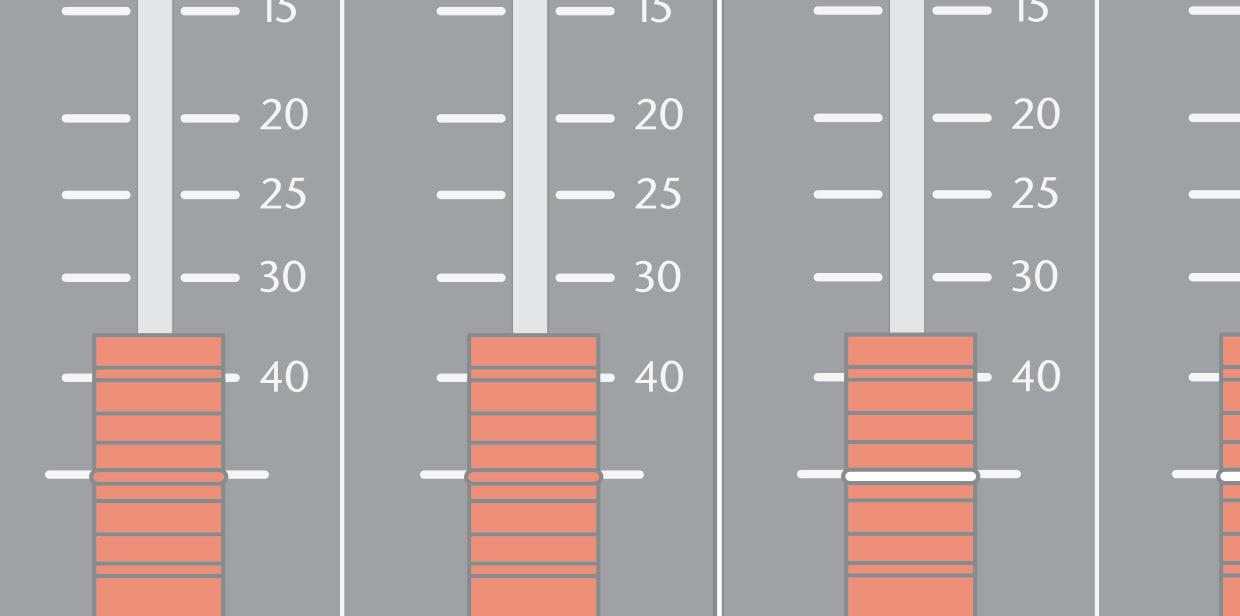
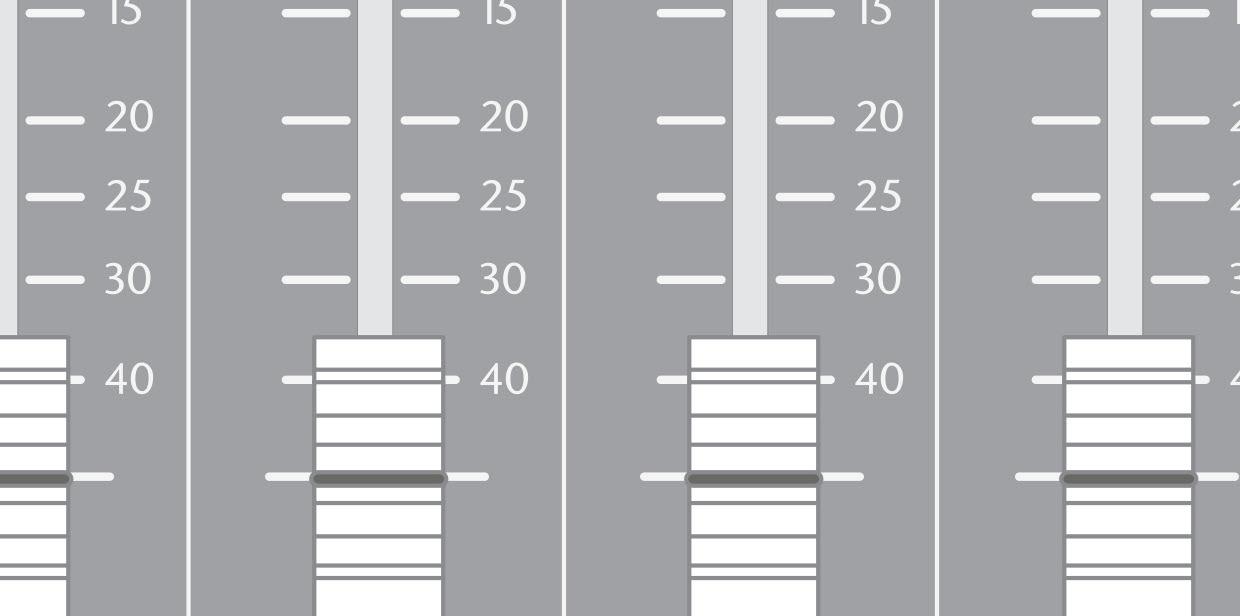

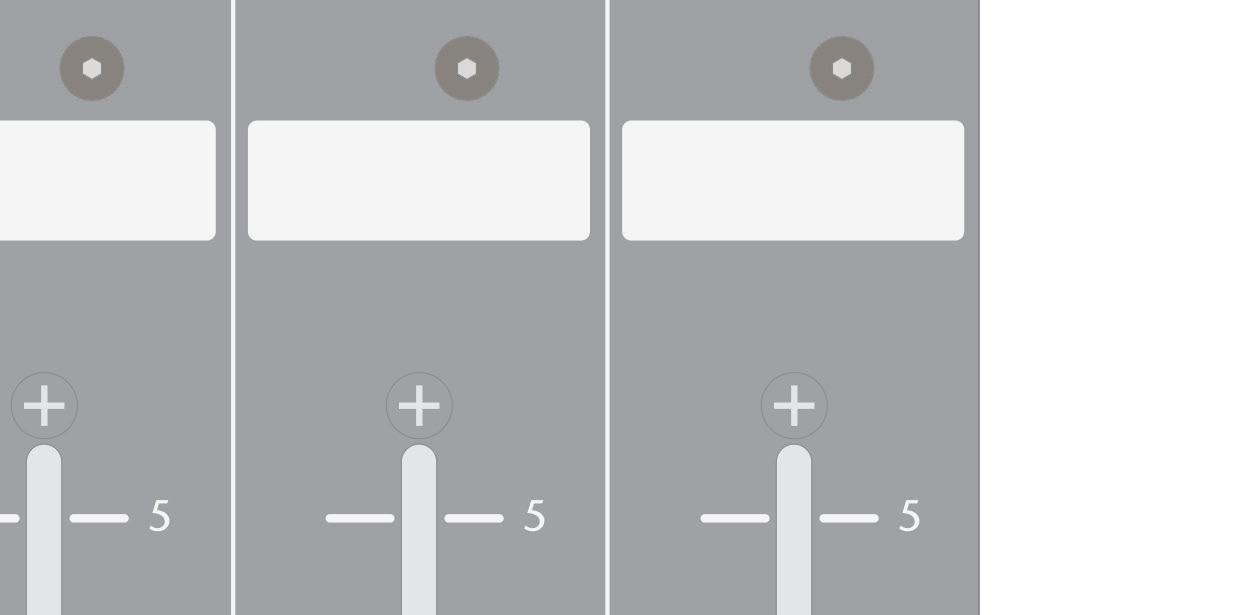

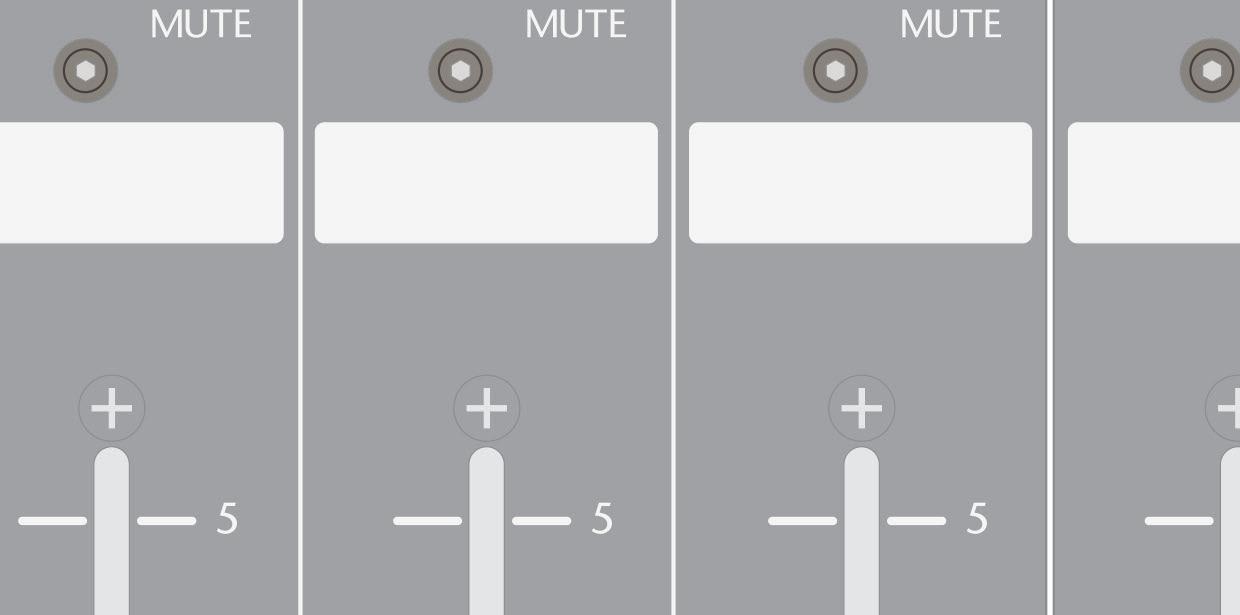

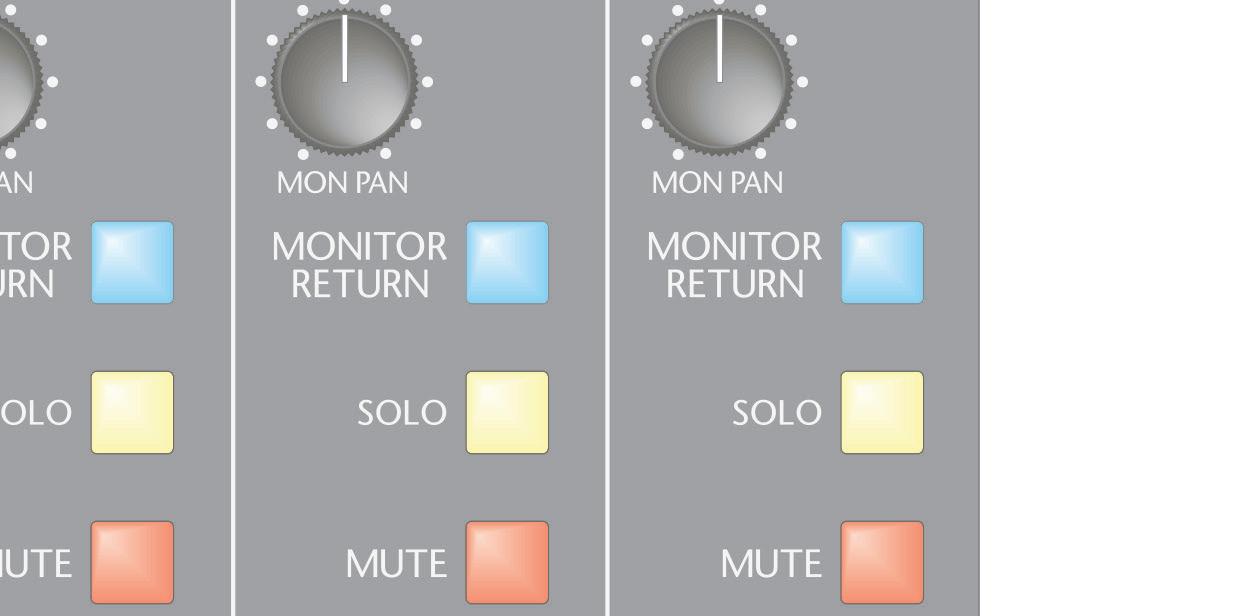


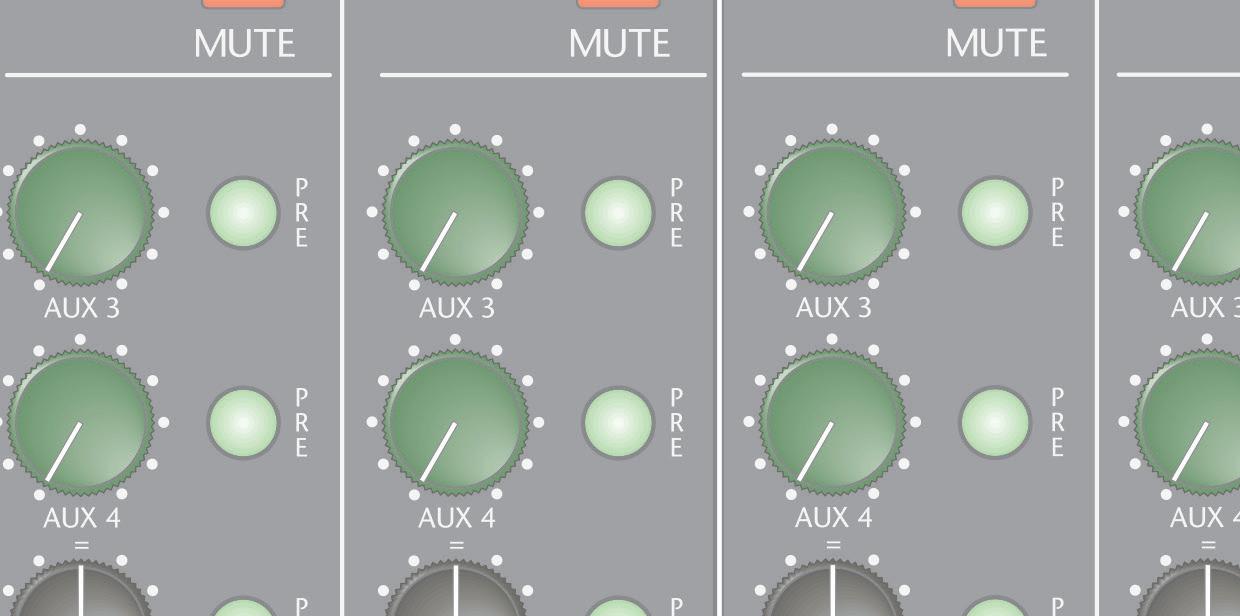
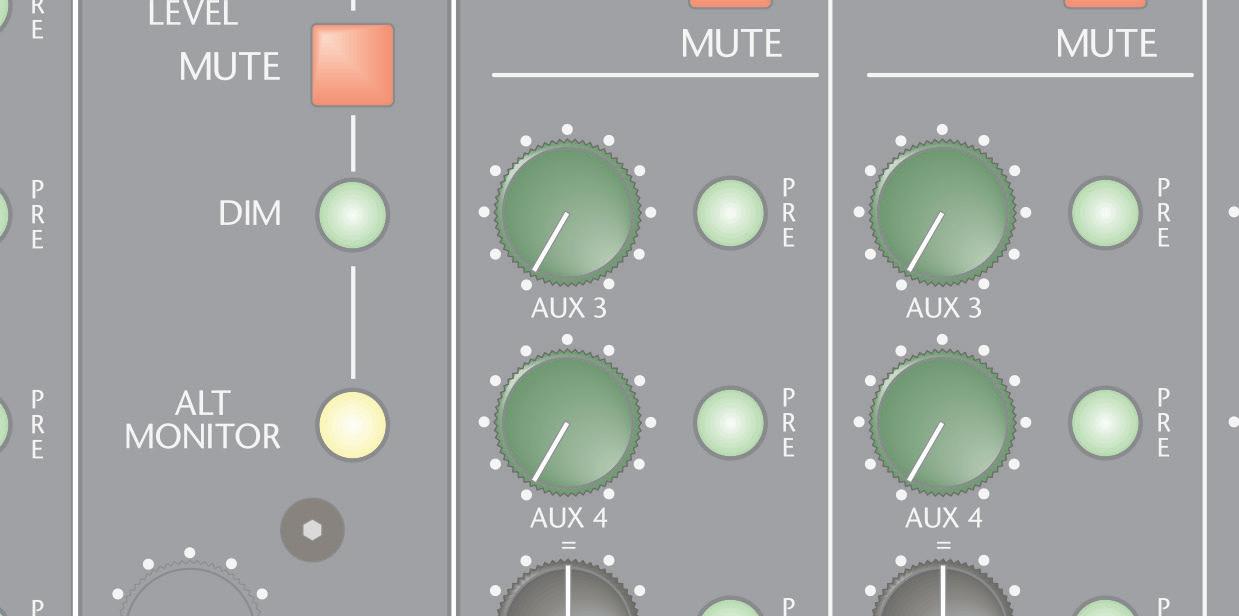

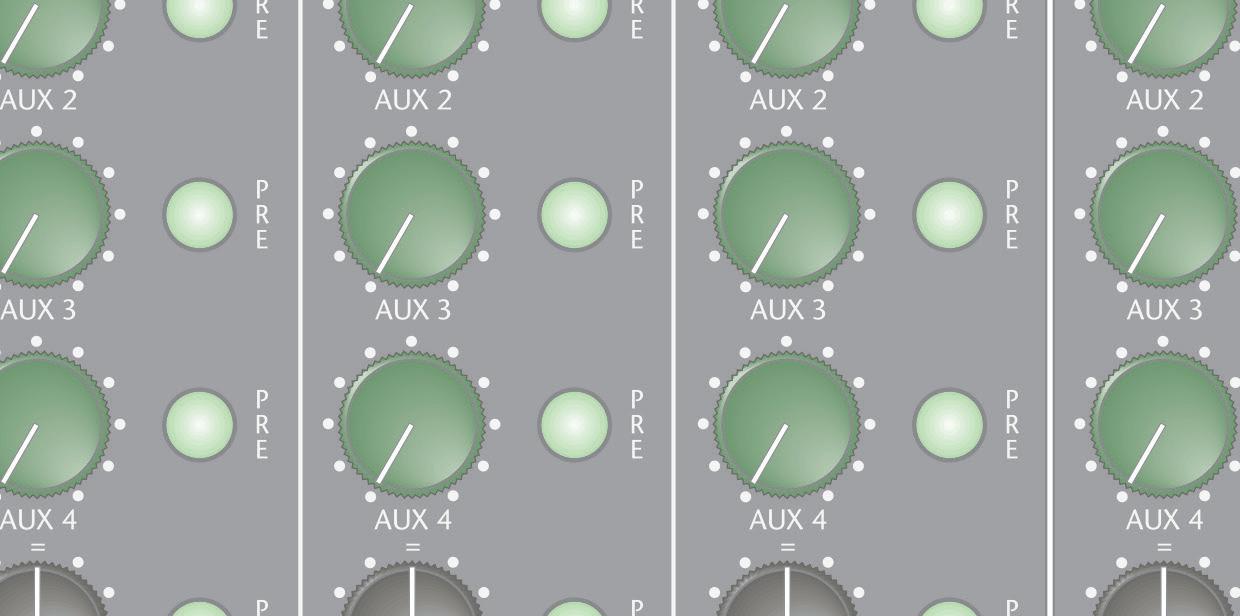






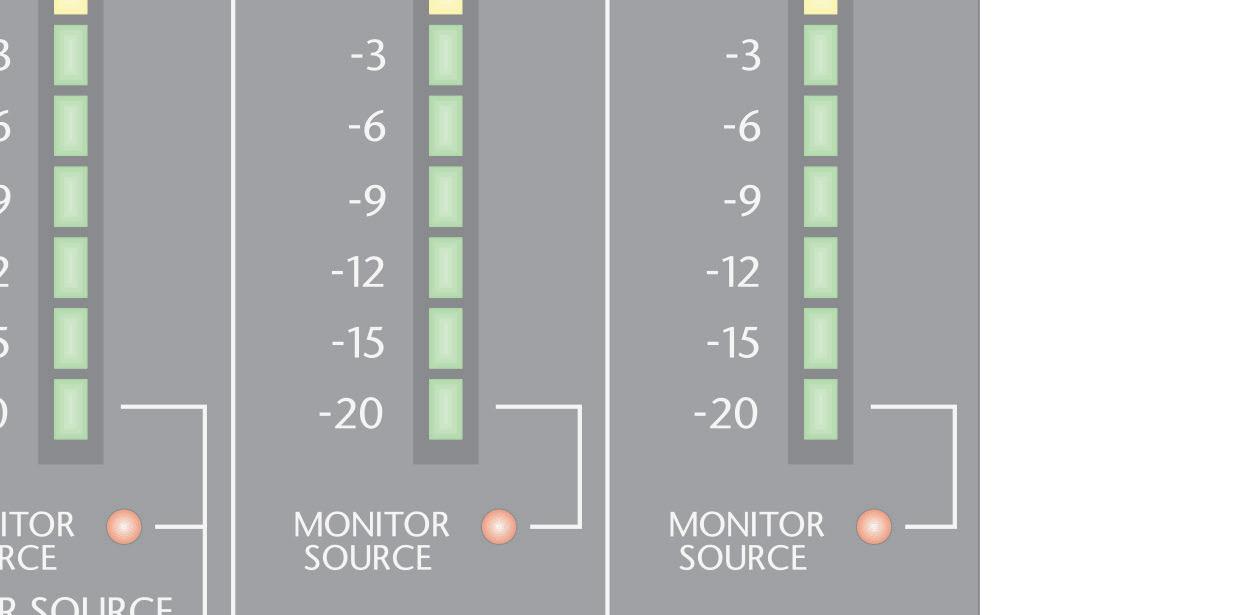


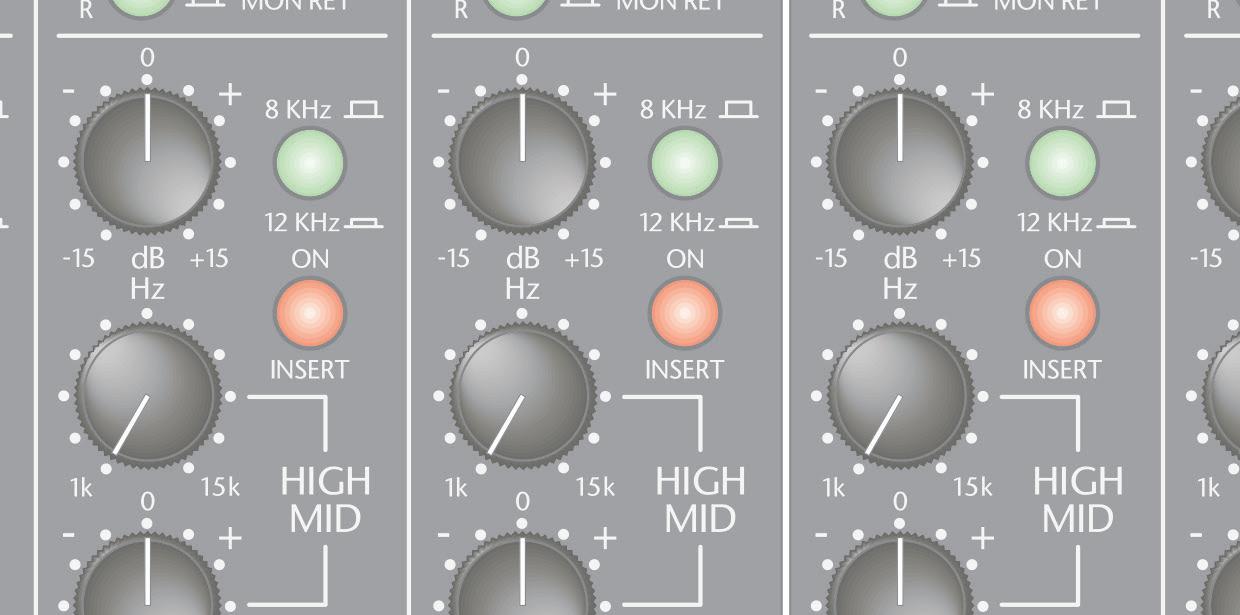
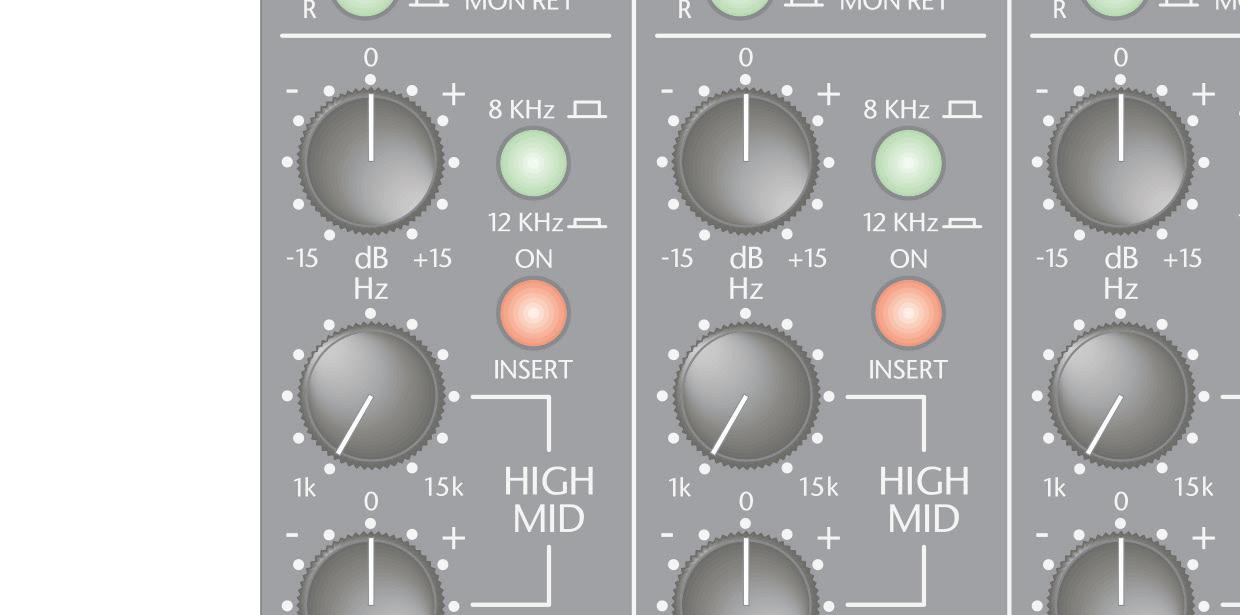





The input channel is provided with a switchable non destructive mono pre fader listen (PFL) and stereo after fader listen (AFL) SOLO system. It is possible then to hear the selected signal in isolation (or mixed with other “soloed” sources) separately in the main monitors, without effecting the main Left/Right mix.

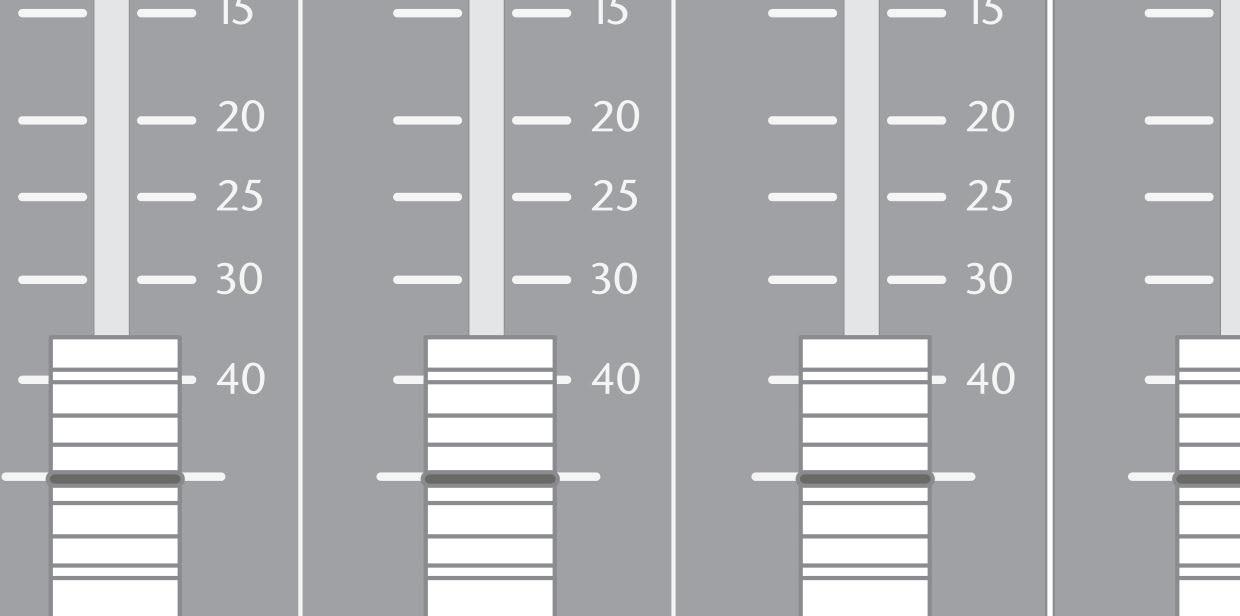
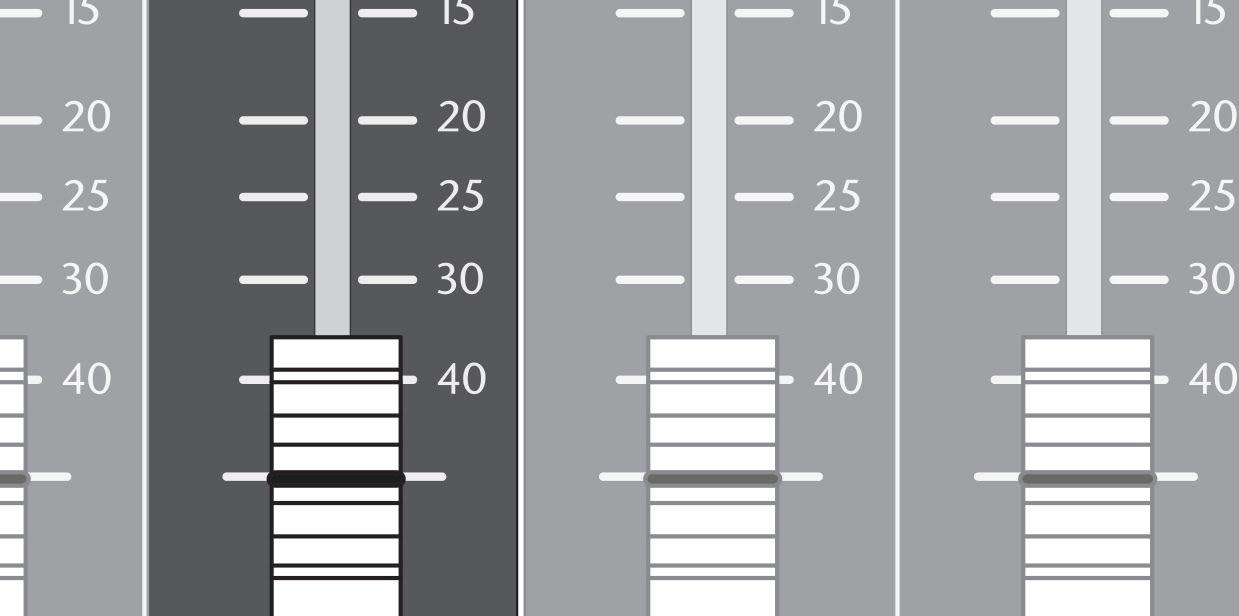

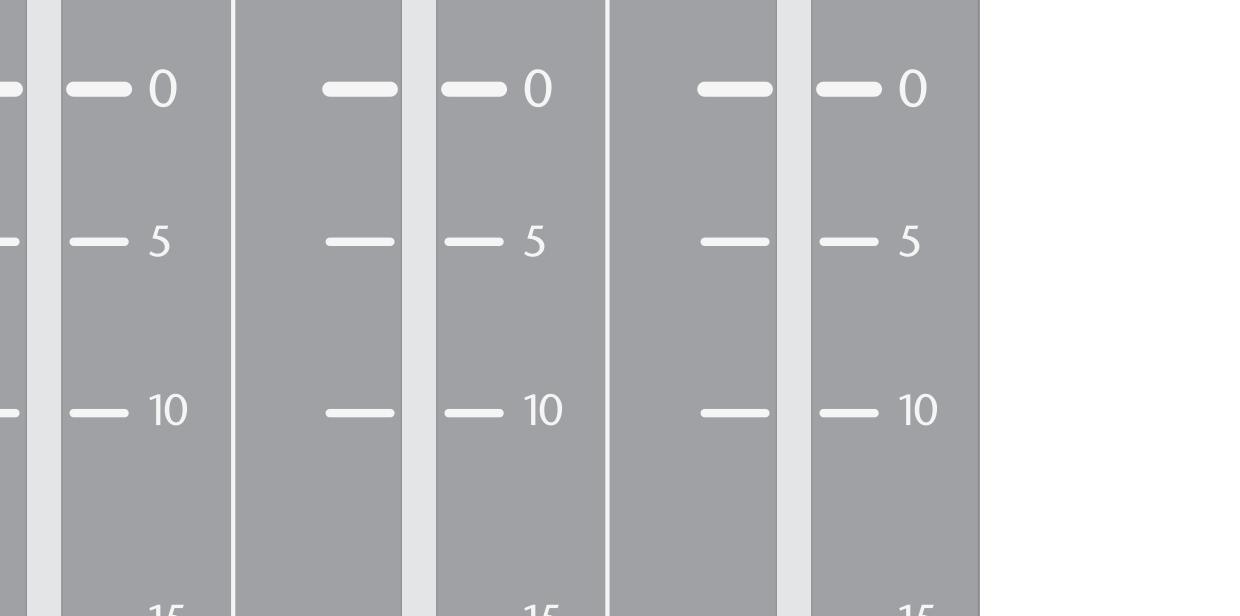
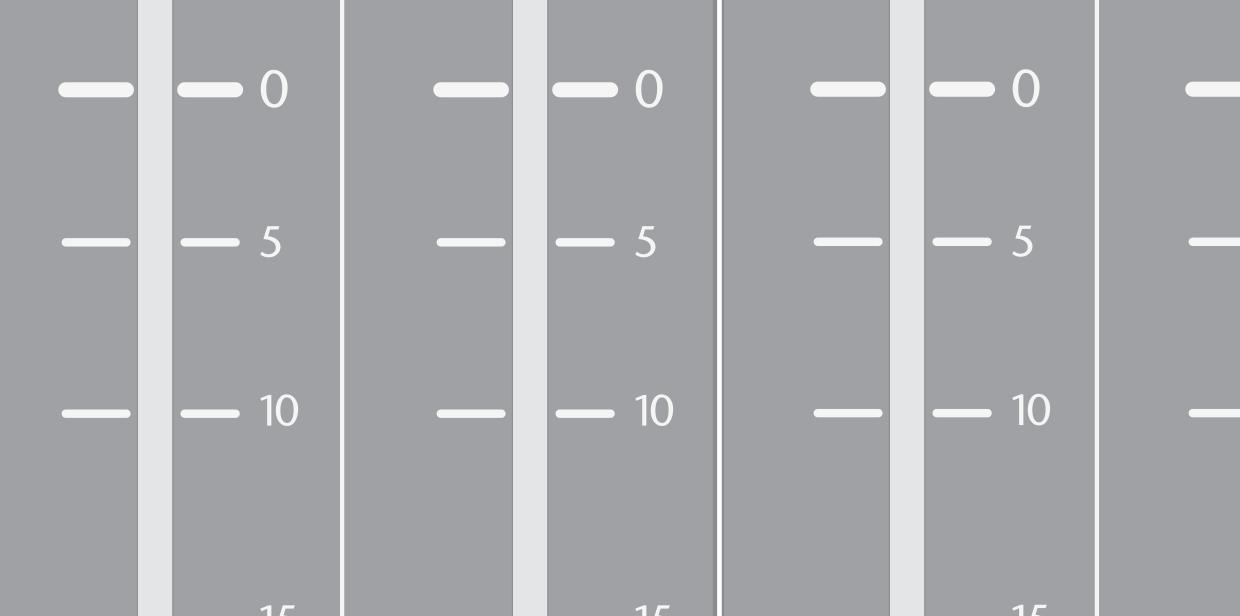

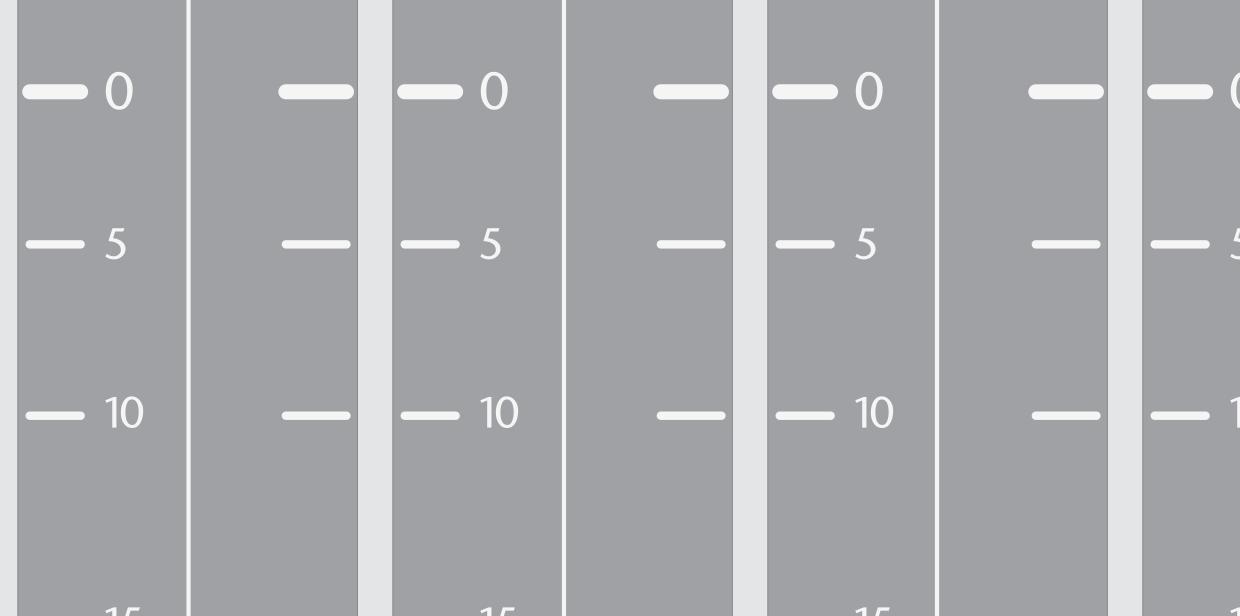



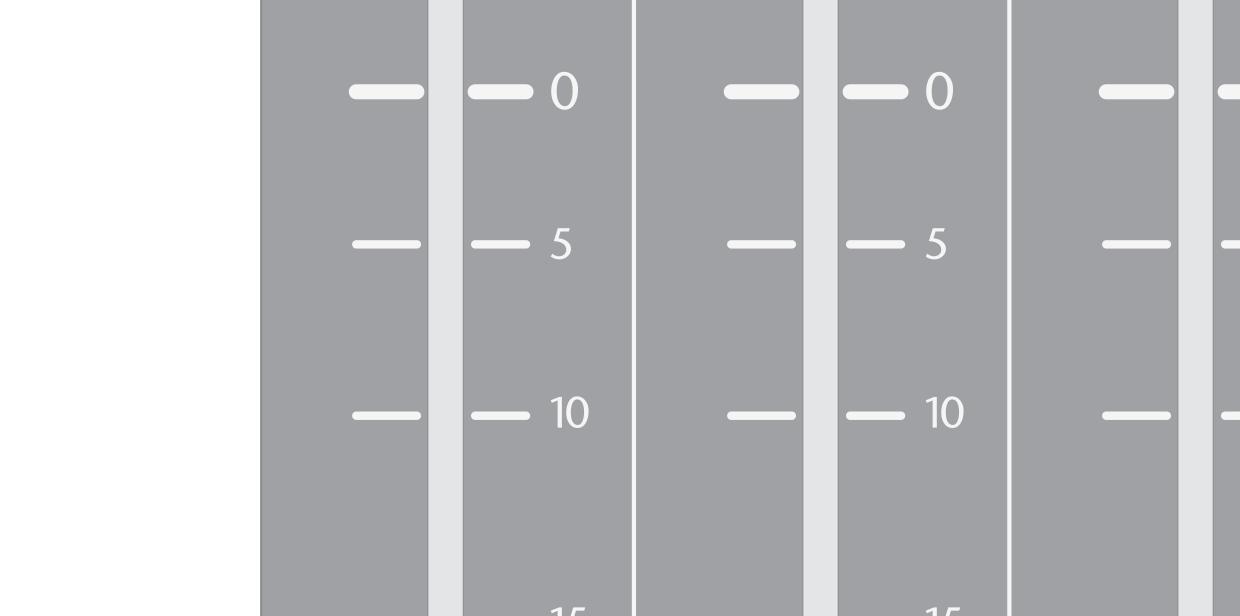

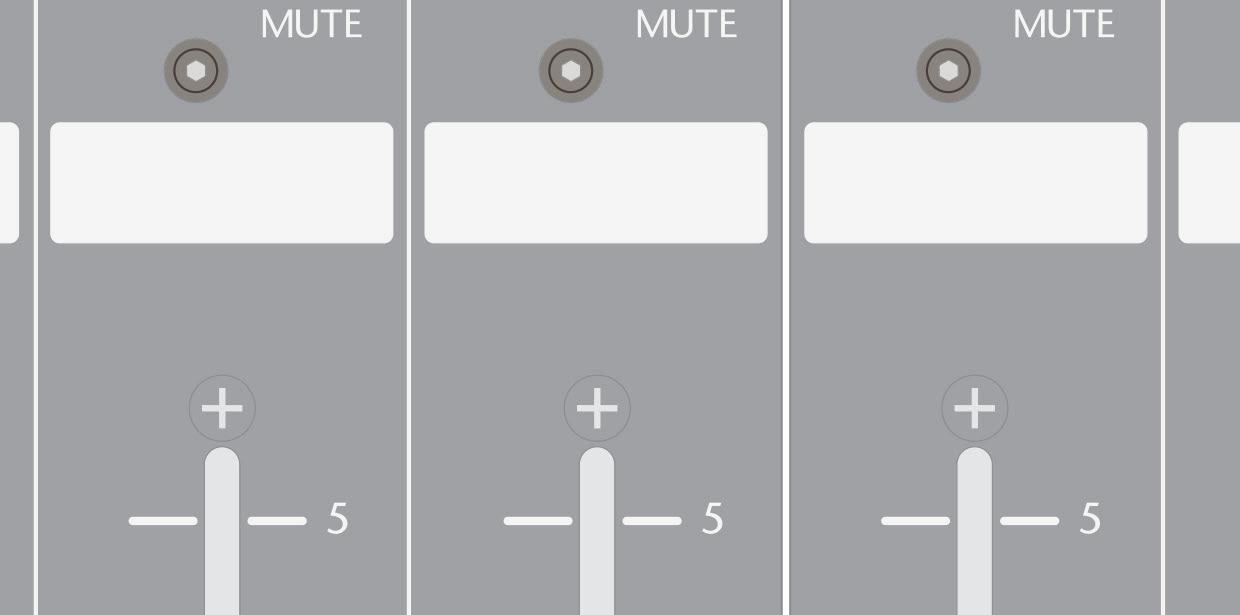






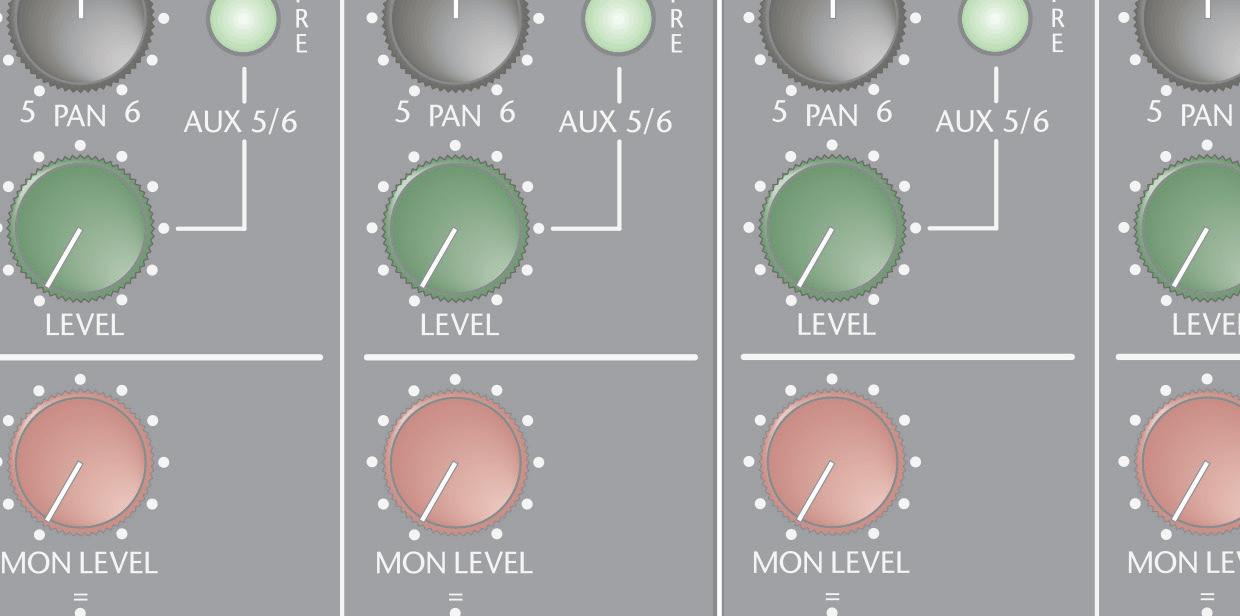


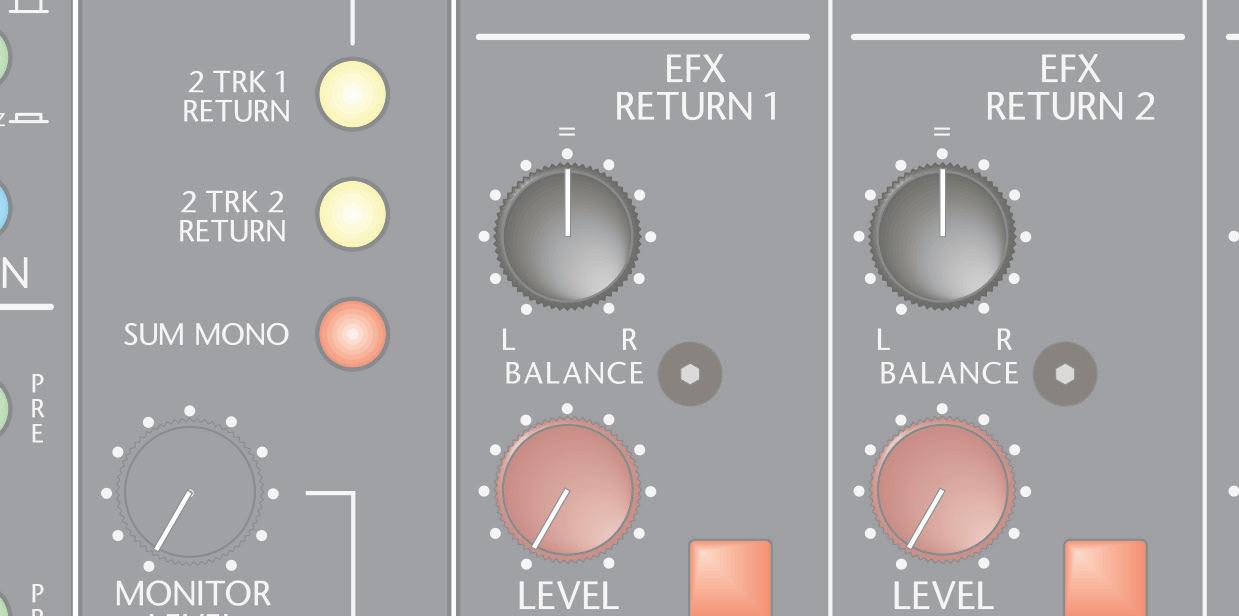
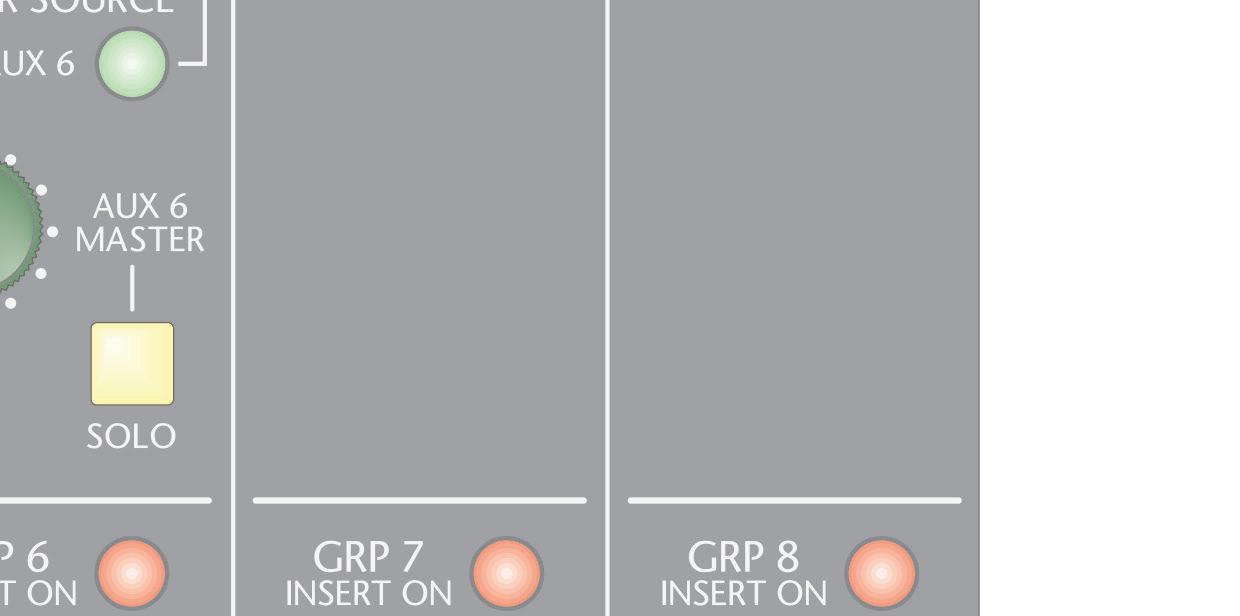
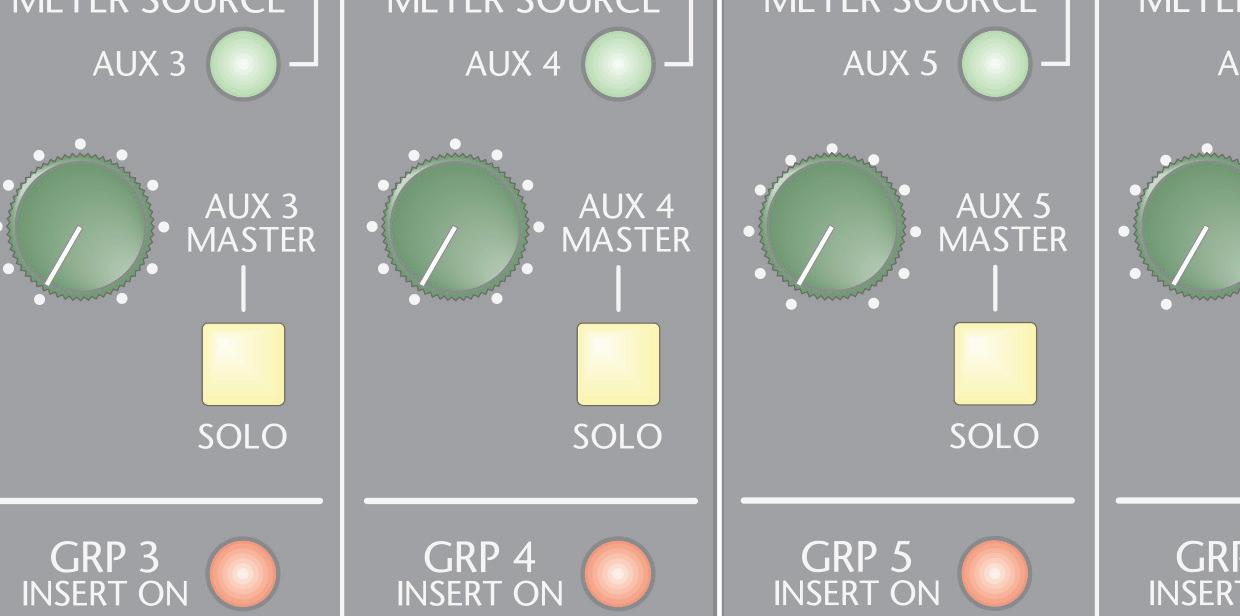

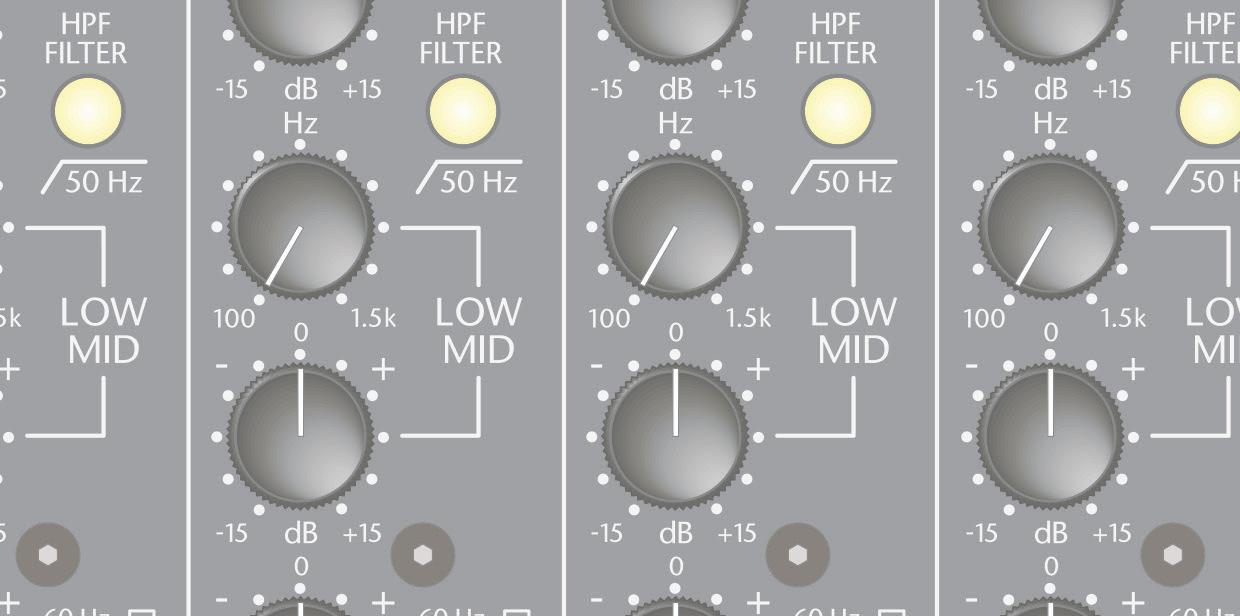



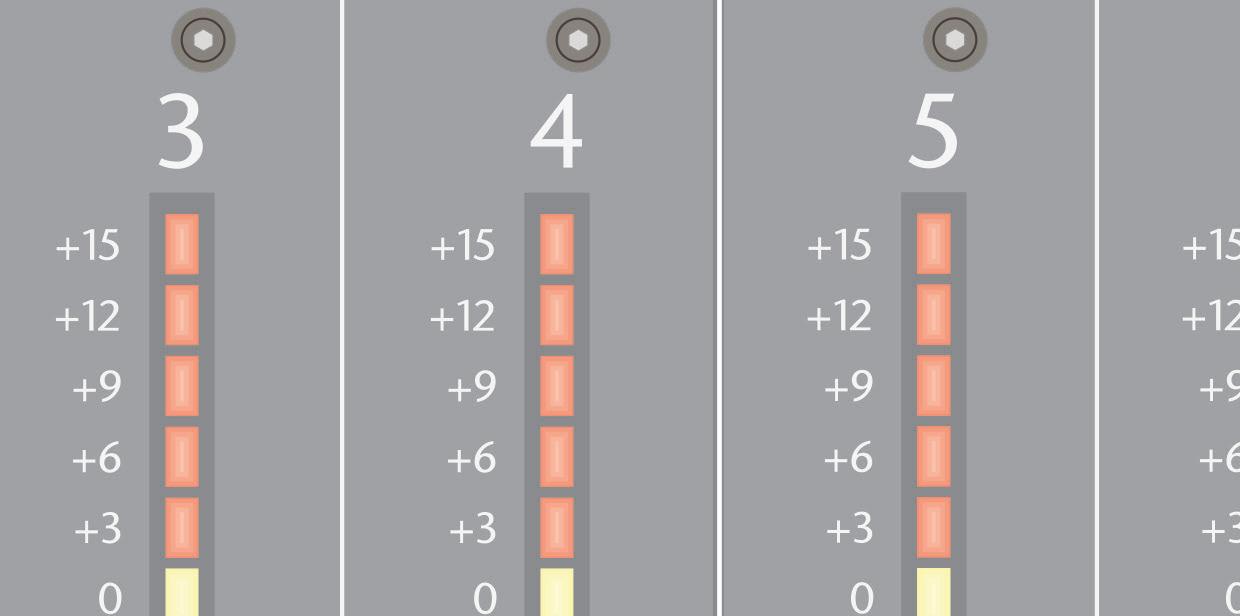


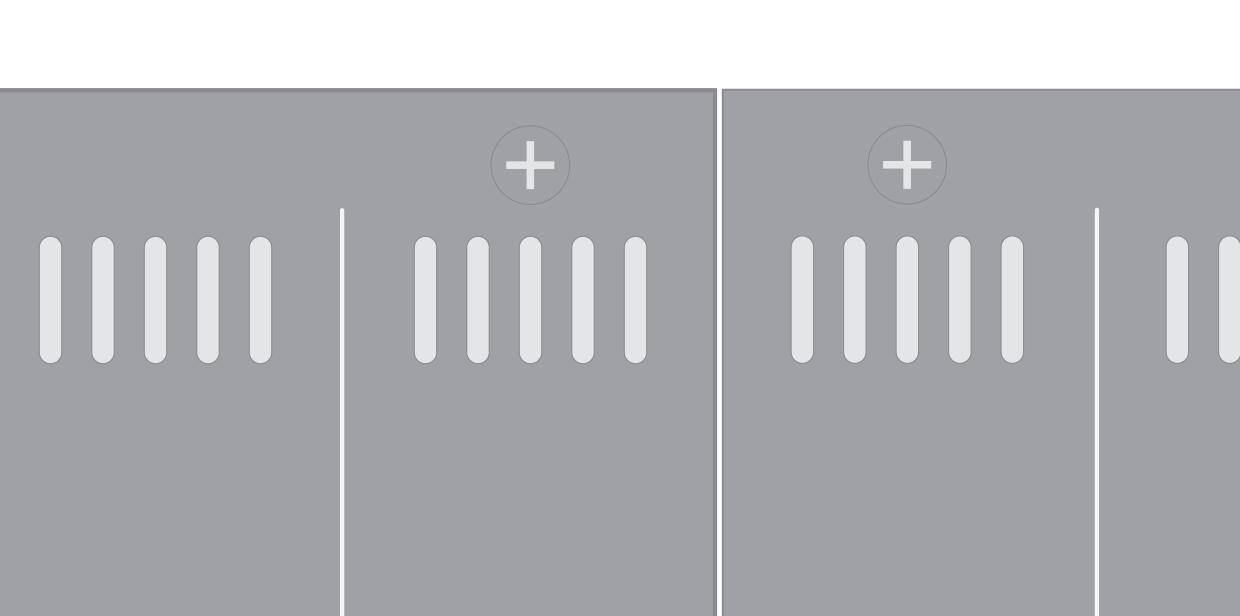
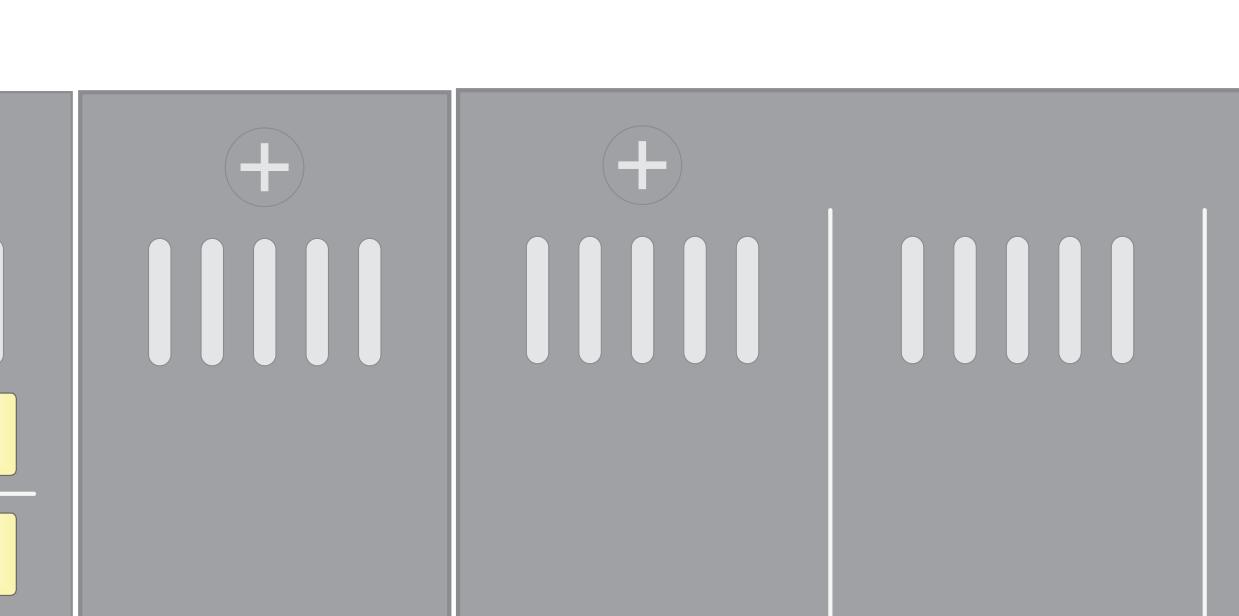

The following gives a brief description of the controls on the Input module.
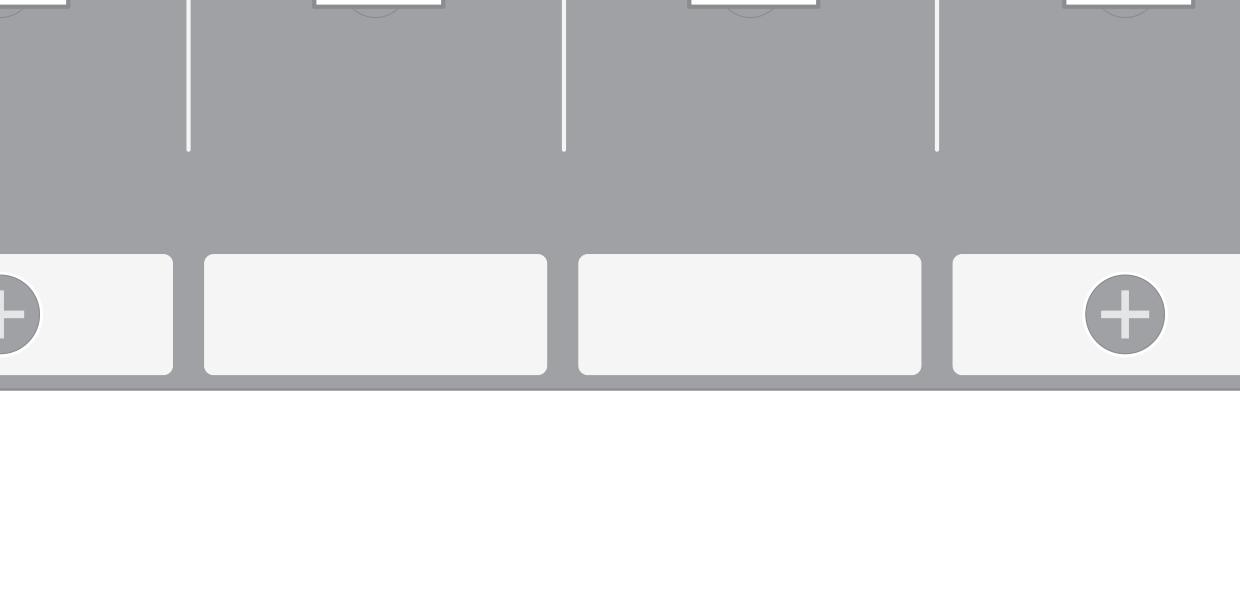


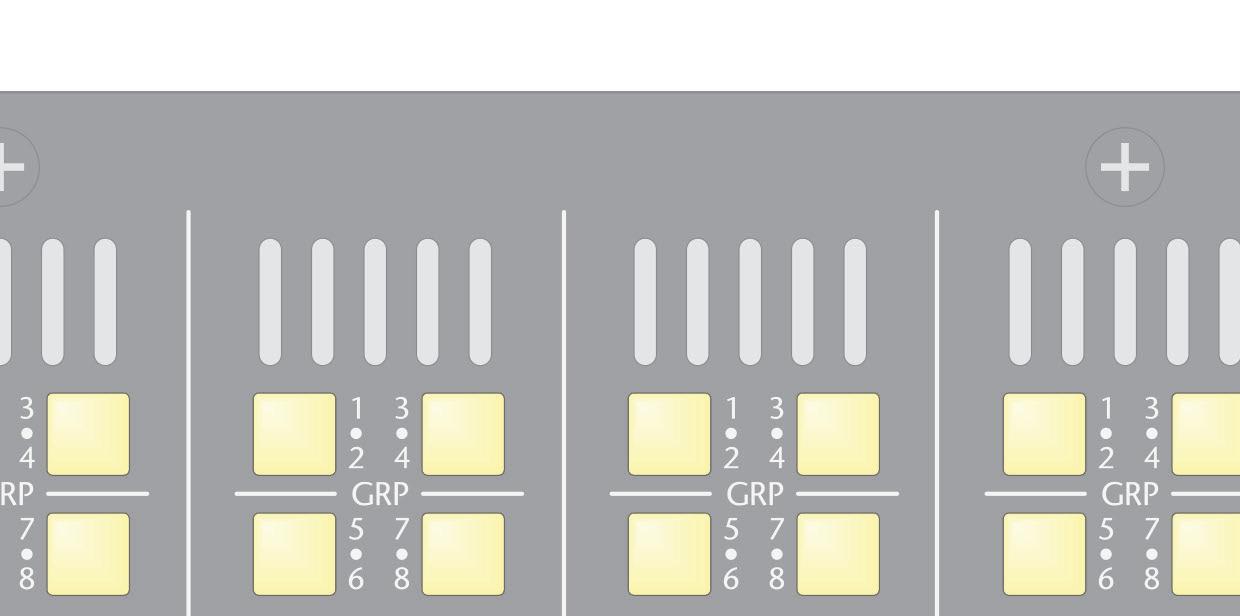


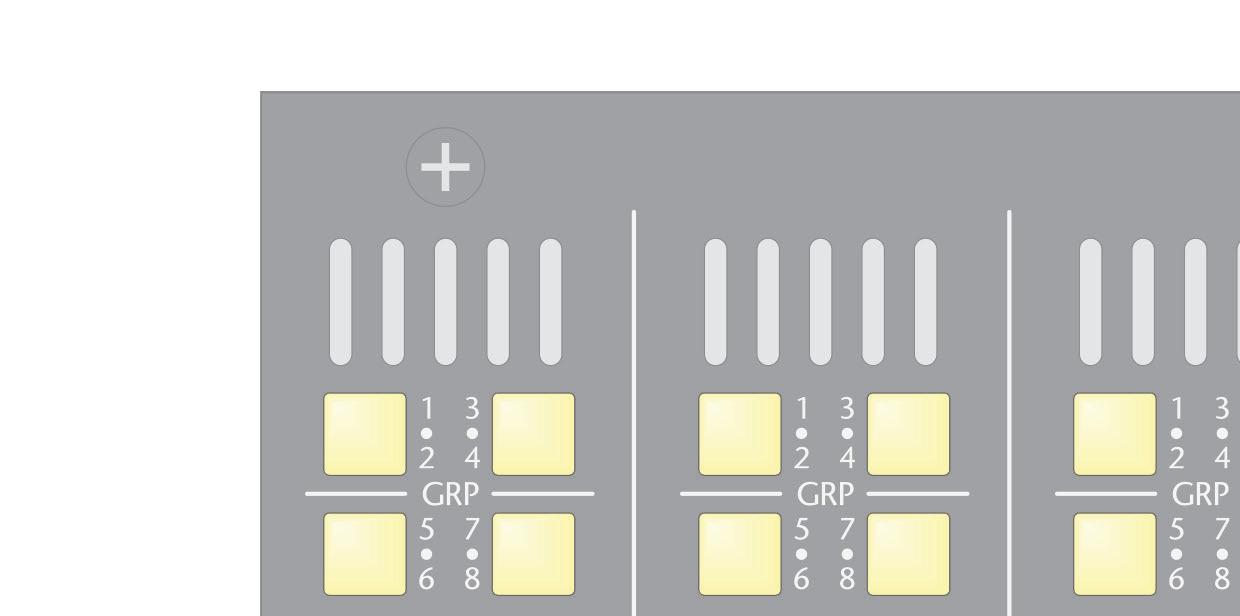
Assigns the Channel post-fader signal to the Group 1 and 2 mix buses through the Channel Pan Control. With the Channel Pan control in mid position, the signal will be fed to Group 1 and 2 in equal amounts. If the Channel Pan Control is positioned fully anti-clockwise (left) the channel signal will only feed Group 1 and when positioned fully clockwise (right), the signal will only feed Group 2.
Assigns the Channel post-fader signal to Group 5 and 6 mix buses through the Channel Pan Control. Operation is the same as the 1-2 Group assignment.
Assigns the Channel post-fader signal to the Left and Right mix buses through the Channel Pan Control. Operation is the same as the 1-2 Group assignment.
Sometimes referenced as the Main mix or Remix bus assignment. In a multi-track studio environment, this L-R Mix assignment and the Channel Monitor Input allow the user to have two separate external inputs (Channel Mic/Line and Monitor return) that can be sent to the Left and Right mix busses, effectively doubling your inputs on mixdown (Remix)
Assigns the Channel post-fader signal to Group 3 and 4 mix buses through the Channel Pan Control. Operation is the same as the 1-2 Group assignment.
Assigns the Channel post-fader signal to Group 7 and 8 mix buses through the Channel Pan Control. Operation is the same as the 1-2 Group assignment.
When depressed , provides +48 Volt phantom power to the balanced MIC inputs on the associated pins on the DSUB connector. Phantom power is required for operation of many condenser microphones. See your microphone instructions to see if phantom power is required or is to be defeated (some - though few – microphones require phantom power NOT to be activated or they may be damaged).
This control adjusts the amount of gain of the signal connected to the associated MIC input on the DSUB connector. For low impedance balanced microphone plugged into the Channel the gain varies from +5dB min to approximately +60dB. With the Line switch depressed, this then controls the gain of the signal appearing on the associated line inputs of the DSUB connector, this gain varies between -20dB and +35dB.
This button selects the signal that is fed to the relevant channel meter situated on the meter bridge. In the up position the Channel Direct Output feed is displayed.
[The Channel Direct Output can be user defined by a selectable option on the Input module, it can be selected either Channel post fader or Channel Insert Return (signal appearing on associated Channel Insert Return.
When this button is depressed the channel meter is fed from the signal on the associated Channel MONITOR Input.
In a multi-track studio environment where the Channel Direct Output is fed to the recording device and the output of this device is connected to the MONITOR I/P, it is possible to see on the Channel meter what is sent to or received from the recording device.
Selects between the Channel Mic preamp signal (UP) or the signal appearing on the DSUB (Down).
When depressed, reverses the electrical input polarity of any microphone or line level input signal selected as the channel source. Use of this control may alter the sound quality of a input relative to other channels when multiple microphones are picking up the same sound.
The Input Reverse switch when depressed flips the Line Input signal and the Monitor Input signals. In effect this switch determines the Line input source that is available to the channel. Combining this with the Line Switch above allows the user to source the channel signal from the associated channel Monitor Return pins of the DSUB connector and to use the full channel strip resources for the Monitor return signal. Alternatively depressing this switch selects the associated Line Input source for the channel Monitor section.
A four band Trident EQ with overlapping ranges is provided with a switchable high pass filter. The HIGH and LOW sections of the equaliser have a shelving response (switchable between two frequencies) and the mids have a peaking (bell) response.
Adjusts the high frequency shelving EQ response. The Level control adjusts the cut/boost between +/- 15dB of the selected “knee” frequency, this frequency is selectable between 8KHz or 12KHz. The centre “0” position of the Level control has a detent to indicate that it is having no effect on the associated channel signal. Cut or boost of the high frequency level control is usually used for minor tonal adjustments.
Adjusts the low-mid frequency EQ response. The Frequency control selects the centre frequency of the filter (between 100Hz and 1.5kHz) and the Level control adjusts the cut/ boost between +/- 15dB. The centre “0” position of the Level control has a detent to indicate that it is having no effect on this frequency band. The bandwidth of this filter is approximately one octave. The high-mid frequency controls are used for minor tonal adjustment or repair of a specific band of frequencies.
Adjusts the low frequency shelving EQ response. The Level control adjusts the cut/boost between +/- 15dB of the selected “knee” frequency, this frequency is selectable between 60Hz or 120Hz. The centre “0” position of the Level control has a detent to indicate that it is having no effect on the associated channel signal. Cut or boost of the low frequency level control is usually used for minor tonal adjustments.
When depressed, this switch places the rear panel channel insert path to the Insert Send and back from the Insert Return in line with the signal path. This insert point by default is after the channel EQ. By routing the signal through this connector, the insert may be used for applications such as an effect that can be switched in/out. In the event the user wants to patch in his/her favourite external EQ, it can be connected with its input fed from the Insert Send and its output feeding the Insert Return, this path being activated with this switch, it could be used in conjunction with/without the Trident EQ.
Adjusts the high-mid frequency EQ response. The Frequency control selects the centre frequency of the filter (between 1KHz and 15kHz) and the Level control adjusts the cut/ boost between +/- 15dB. The centre “0” position of the Level control has a detent to indicate that it is having no effect on this frequency band. The bandwidth of this filter is approximately one octave. The high-mid frequency controls are used for minor tonal adjustment or repair of a specific band of frequencies.
When selected inserts a high-pass (or Low- Cut) filter with a corner frequency 50Hz and a roll off rate of 18dB per octave into the signal path. This control is used to remove unwanted signal content below 50Hz. The result is usually improved signal quality of the associated input signal while decreasing the low frequency amplification demand of the audio systems amplifier and speaker combination. Mainly for use with microphones, this helps remove low frequency rumble and handling noise.
This switch inserts the 4-band EQ and High Pass Filter into the channel/ monitor (see EQ TO MON switch description below) signal path. When not in use, it is suggested that the EQ be kept in the OUT position for best phase performance.
Adjusts the mix level of Channel into the Aux 1 bus.
Adjusts the mix level of Channel into the Aux 2 bus.
Adjusts the mix level of Channel into the Aux 3 bus.
Adjusts the mix level of Channel into the Aux 4 bus.
Adjusts the balance of the channel signal being fed to Aux 5 bus (CCW) and Aux 6 bus (CW). In the centre (=) position equal signal level is sent to both Aux 5 and Aux 6 buses.
Adjusts the stereo mix level of Channel into the Aux 5 and Aux 6 buses.
This switch determines the signal source for Aux 1 bus, between Post (Up) or Pre (Down) Channel fader.
This switch determines the signal source for Aux 2 bus, between Post (Up) or Pre (Down) Channel fader.
This switch determines the signal source for Aux 3 bus, between Post (Up) or Pre (Down) Channel fader.
This switch determines the signal source for Aux 4 bus, between Post (Up) or Pre (Down) Channel fader.
This switch determines the signal source for Aux 5 and Aux 6 buses, between Post (Up) or Pre (Down) channel fader.
When depressed selects the channel monitor input as the source to the Aux 5 - 6 Level control. In the up position sources the channel signal.
Adjusts the monitor signal level to the Left/Right bus.
This control blends the post monitor level signal between the Left and Right buses. When at the centre, detented position, both Left and Right buses are fed equal amounts of signal (each down by 3dB).
This control blends the channel postfader/post mute signal between any of the assigned bus pairs (L-R Mix, Group 1-2, Group 3-4, Group 5-6 and Group 7-8) located at the top of the module. When at the centre, detented position, both sides are fed equal amounts of signal (each down by 3dB).
+10 – Indicates RED when the channel signal level has reached +14dBu (+10 VU) -20 – Indicates GREEN when the channel signal level has reached -16dBu (-20 VU) The channel indicator signal source can be selected pre or post the channel fader through an option available on the input module circuit board. (Note: Signal headroom available on the input module is +22dBu and when the +10 indicator illuminates the signal level is approaching 6 to 8 dB before clipping when just flashing red with signal peaks). These are extremely useful features and provide a constant indication that a signal is present in the module (green LED) and that the signal peak is being reached (red LED).
The Monitor section of the channel module allows the user to feed the signal on the associated Monitor Return pins of the DSUB connector to the Left and Right buses with level pan and if selected with EQ control.
Assigns the 4 band channel EQ to the Monitor Section, removing it from the channel path.
When pressed will Mute the monitor signal to the Left/Right bus. It is recommended when the monitor section is not being used that it be muted.
Selects the channel source feed that will be fed to solo bus when the Channel SOLO is pressed. UP - solo system is fed from the channel post fader/post pan pot point and is a stereo signal that follows the pan pot. This allows the user to monitor the channel in the solo system and to see its contribution to the mix. Down - solo system is fed from the channel pre fader point and is a mono source. This allows the user to monitor the signal in the solo system before the channel fader/mute, allowing the user to check the signal in the channel without being routed to any output buses.
When pressed will mute the assigned outputs of the channel (Group 1 - 8, L-R Mix and all post Aux sends). The Mute does not affect the channel’s solo PFL feed, but WILL affect the channel metering in the Meter Bridge, the Direct Output of the channel (if selected as post fader by option on module) and the channel’s solo AFL feed (which is post fader and post this mute).
When pressed, routes the channel AFL or PFL (see AFL/PFL Select above) signal to the Solo bus. Additionally this switches the Main Monitor Output (normally fed the Left/Right Mix) to source the signal from the AFL/PFL Master Level in the Master section as well as to trigger LED indicators in the Master section and Meter-Bridge stating a solo has been pressed.
The Group section of the console greatly enhances the flexibility of the TRIDENT 78 console and provides a number of different functions. There are 8 Group modules provided on the console, these are divided into two sets of 4 Groups in separate panels and each Group strip controlling the associated group mix bus outputs. The groups can be used as audio subgroups for combining and processing a collection of input channels. Each group bus has its own balanced Insert Send/Return and Outputs that feed the associated DSUB connector on the rear Master Connector panel.
The Group module also provides a method of monitoring and panning the group output on the control room speakers. By using these controls it is possible to build up a monitor mix of the recorded tracks and any that are about to be recorded. To enhance this monitor facility Auxiliary sends (3 to 6) are available making it possible to send a headphone mix from the groups together with reverb and effects and since all Auxiliary sends are switchable to Pre the monitor level control, they can be used to create a separate auxiliary mix independent of the monitor level.
Individual monitor source switches (MONITOR RETURN) make it possible to select either the group output or the associated balanced line (Group Monitor Input) into the monitoring system. The bargraph metering and Auxiliary sends follow this switch so that they automatically switch according to the position of the MONITOR RETURN switch.

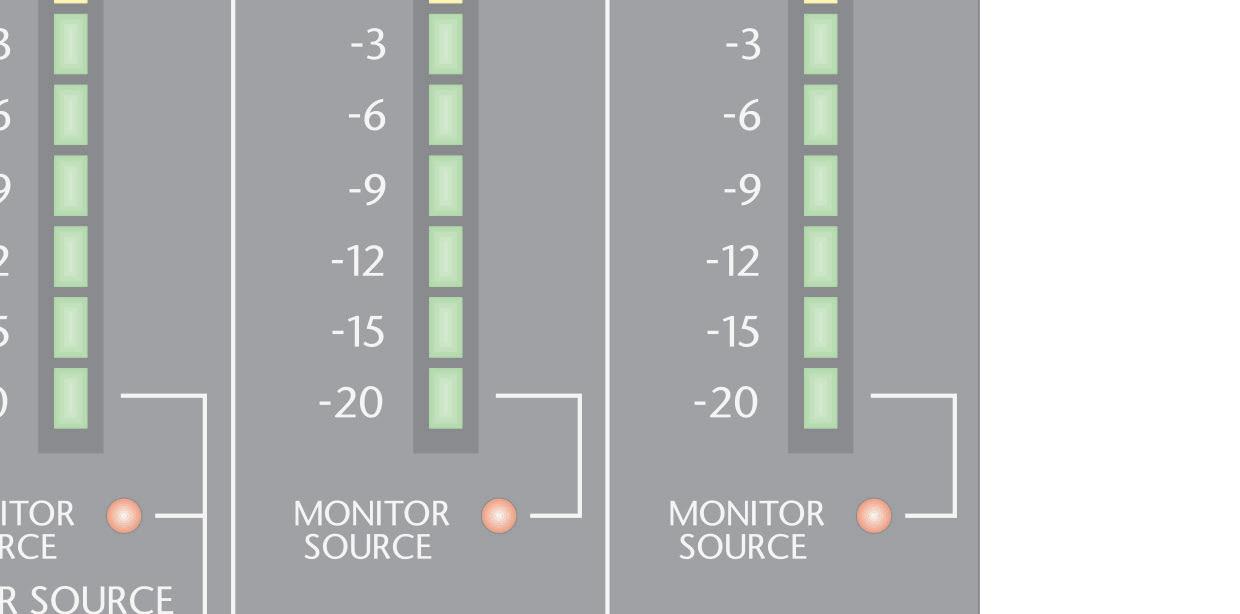
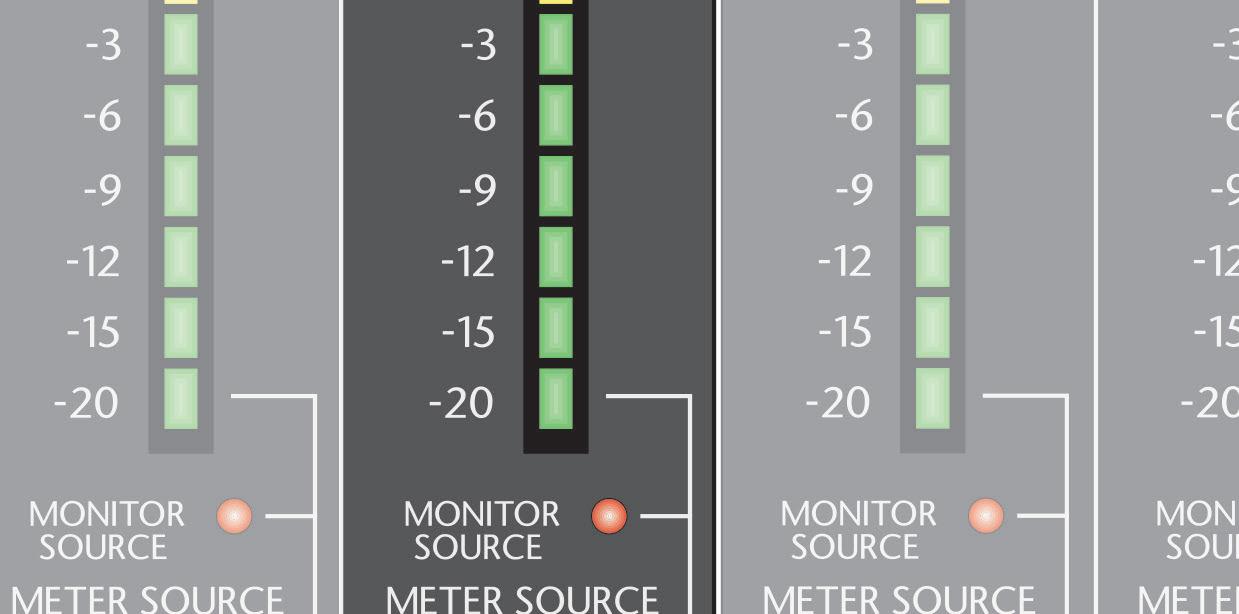
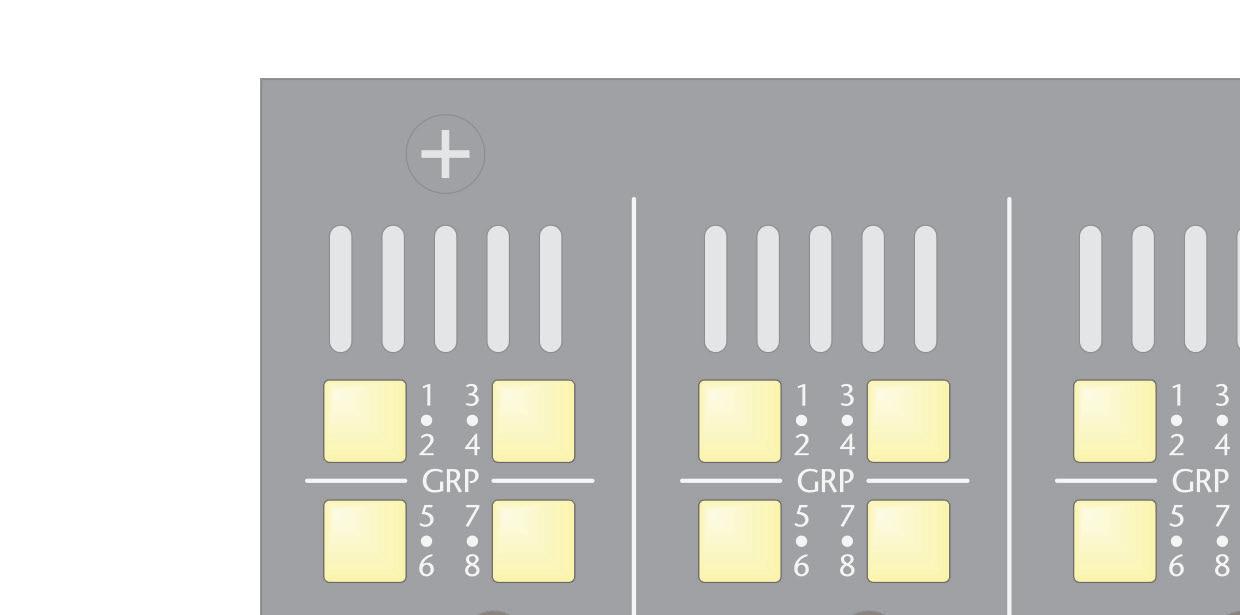
Note: the bargraph meters additionally can be assigned to monitor the console Auxiliary outputs with the AUX to MTR control allowing the user to check the associated number Auxiliary output level if needed.

Each of the 8 Group channels is also provided with a SOLO pushbutton. This makes it possible to listen to the signal on any selected Group in isolation and in stereo through the consoles SOLO system. Since the SOLO function is post the Group MONITOR LEVEL control, this makes it possible to solo a number of Group channels and create a balanced mix of the soloed signals.
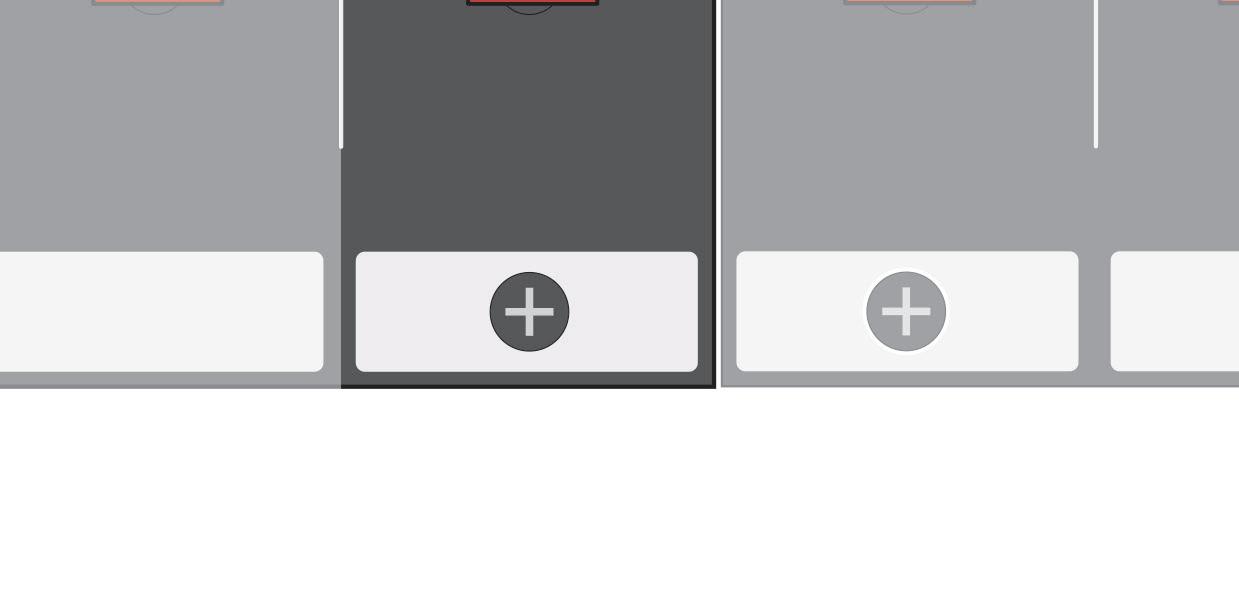

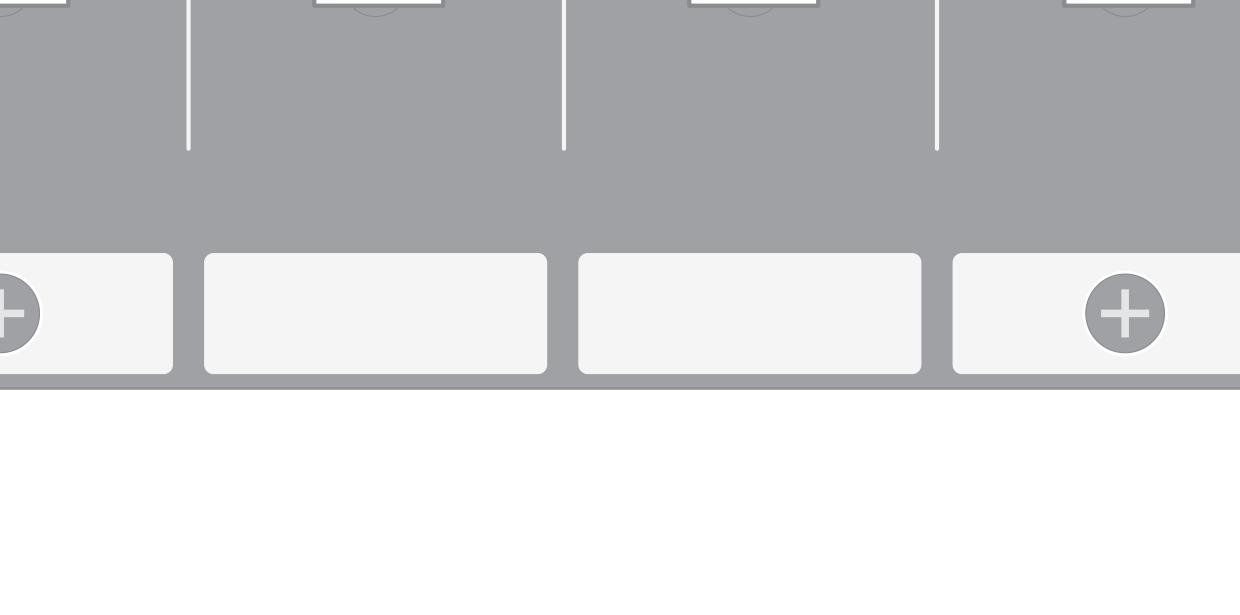




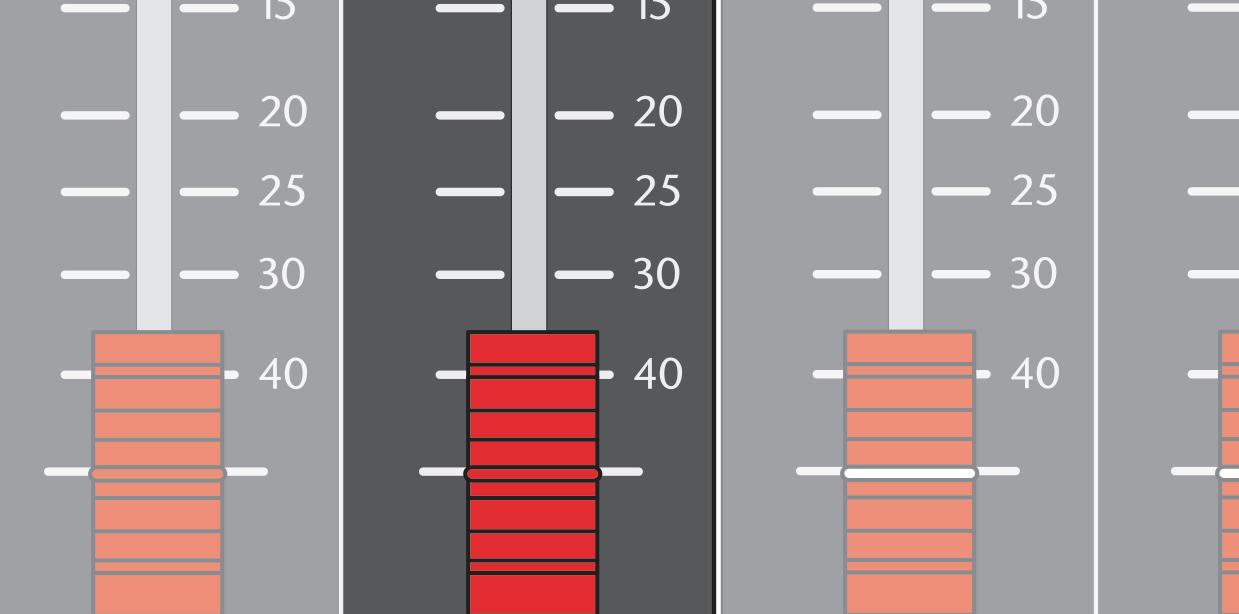






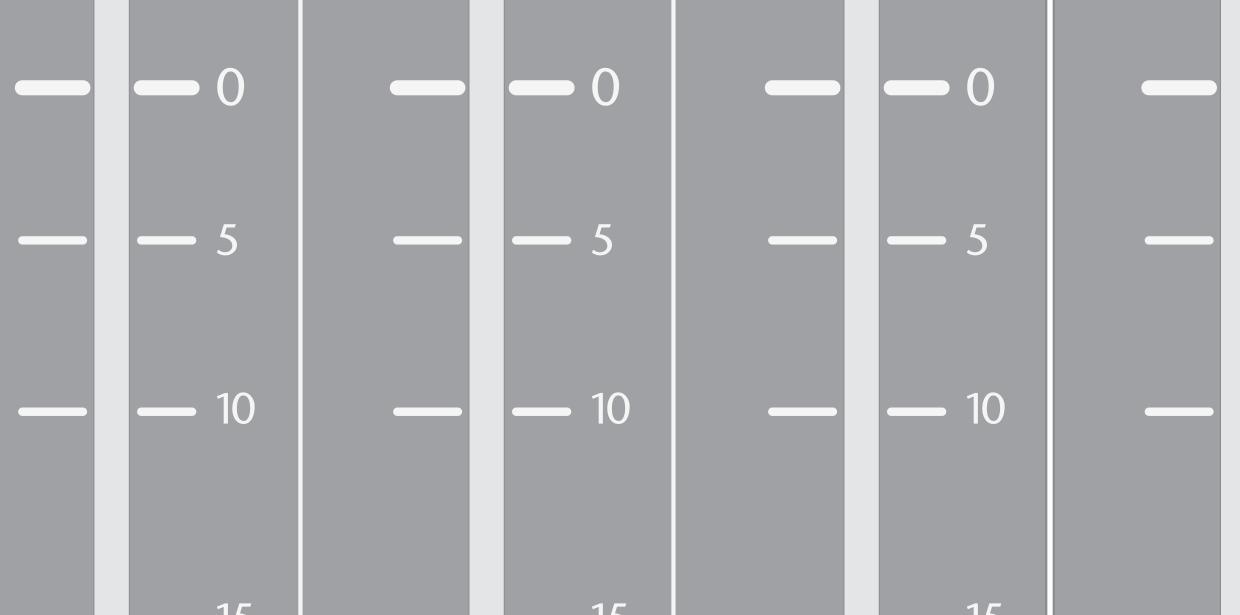

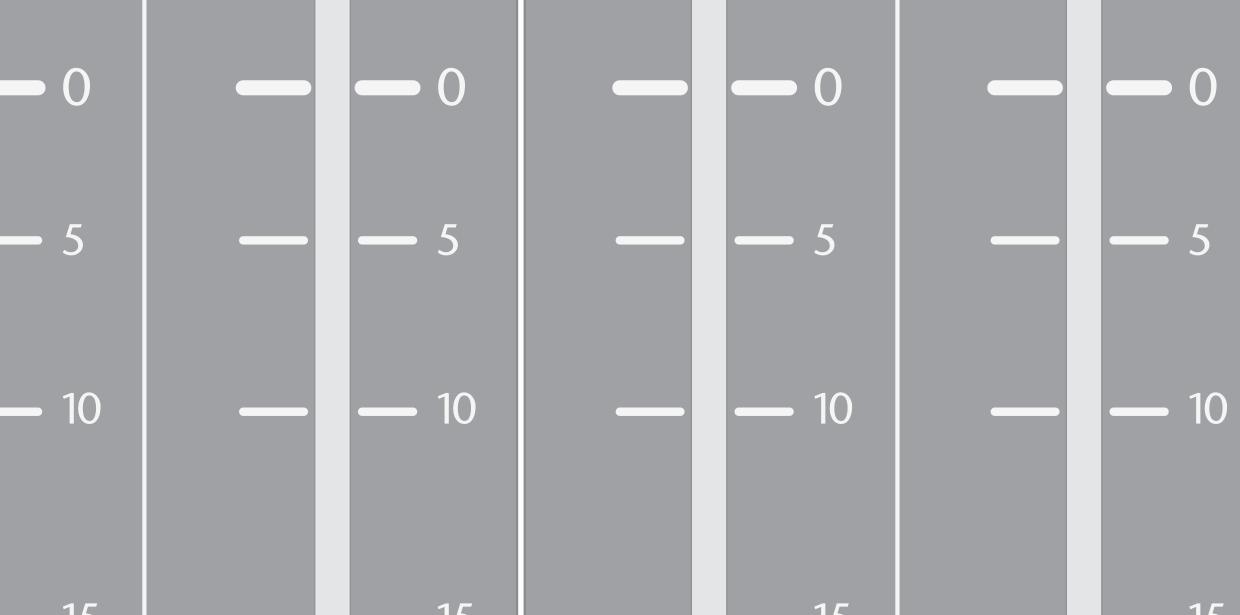
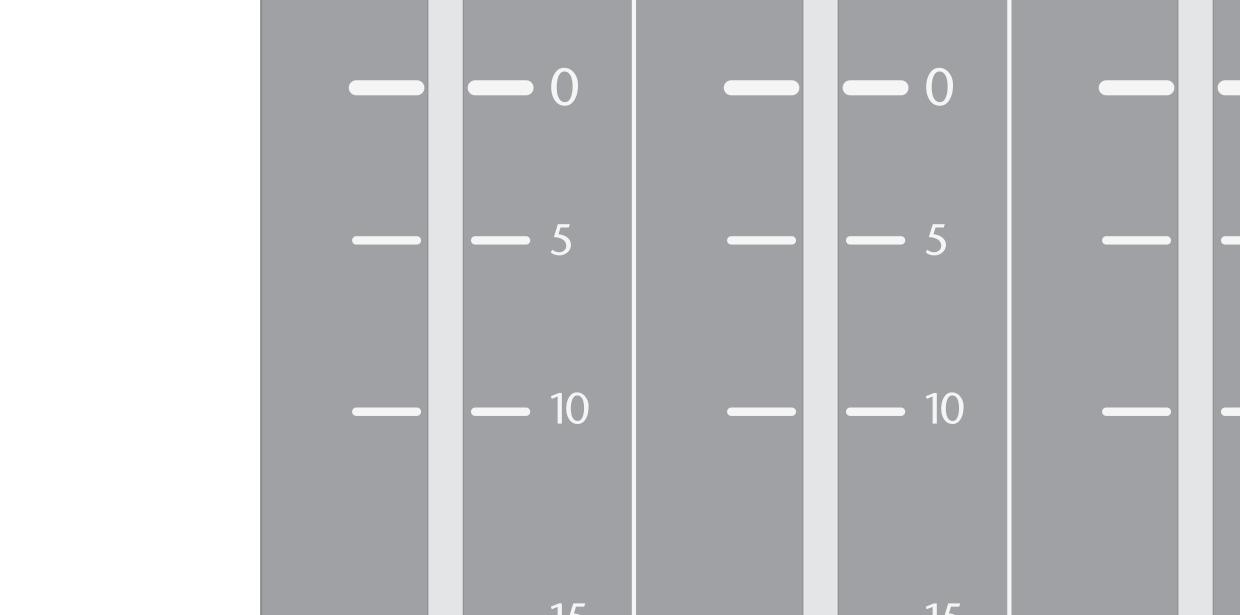
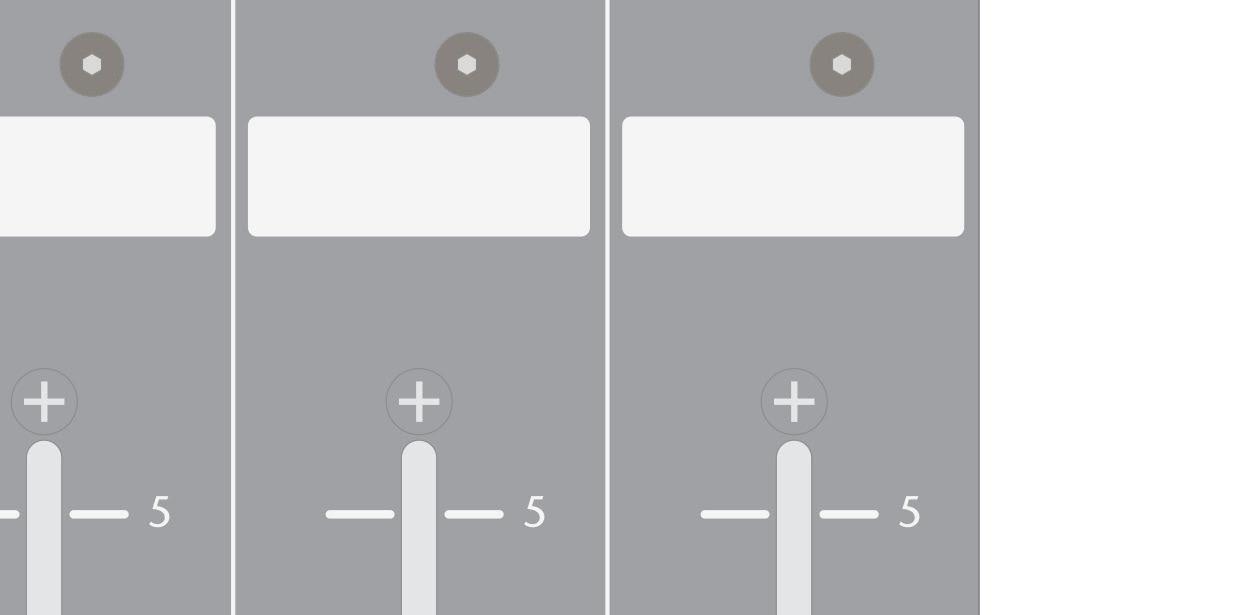

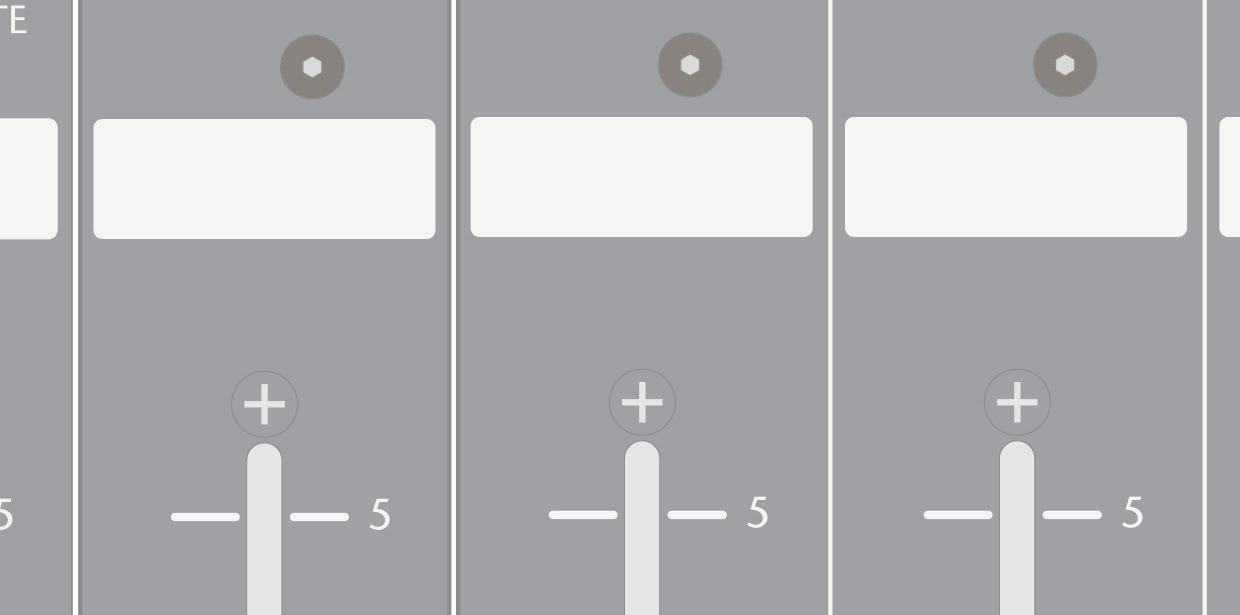
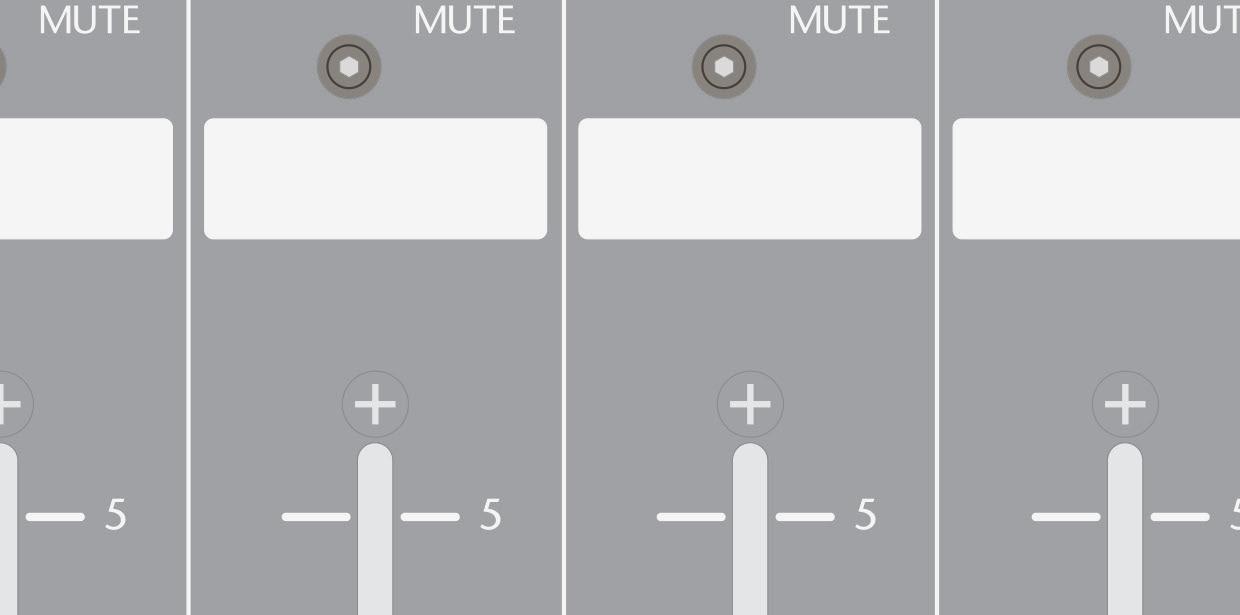

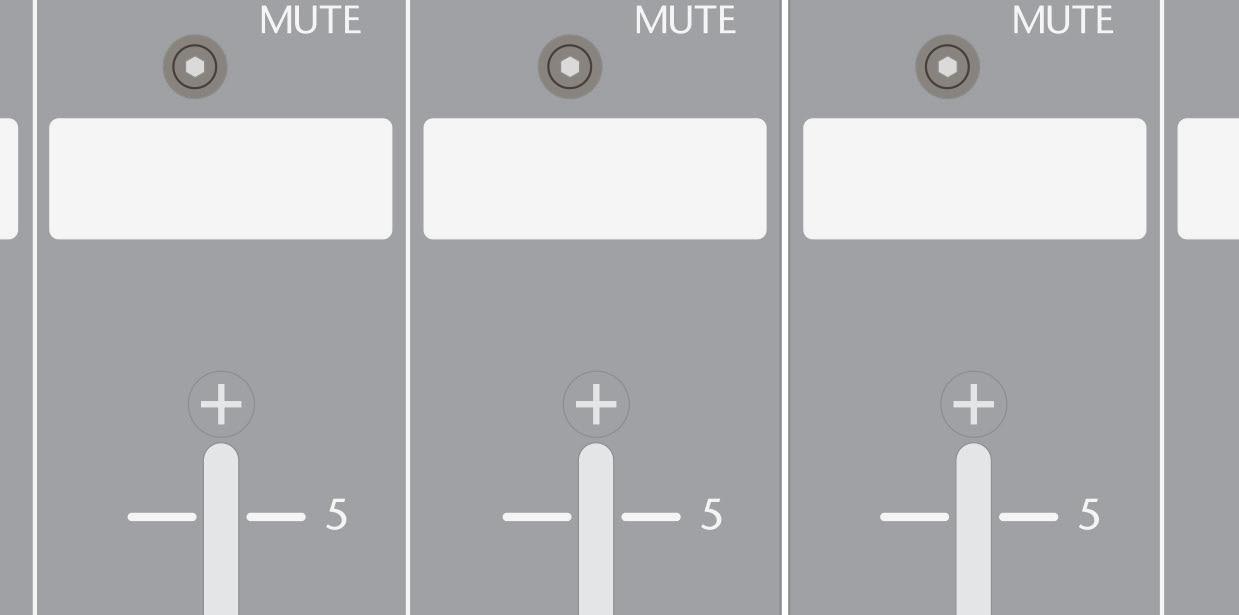


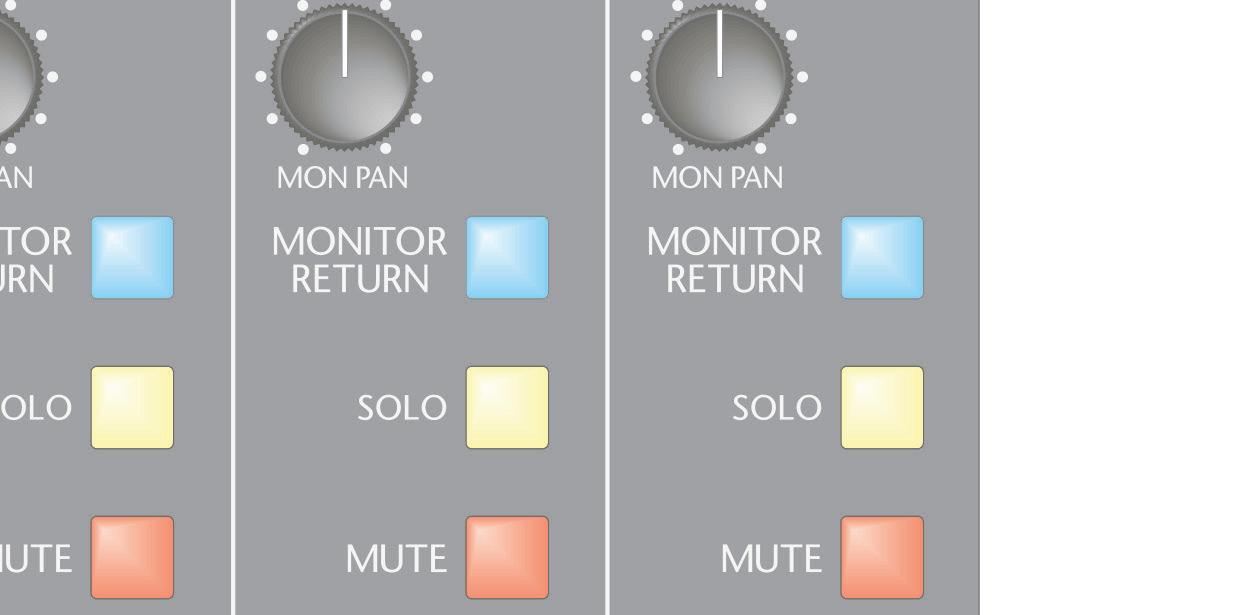




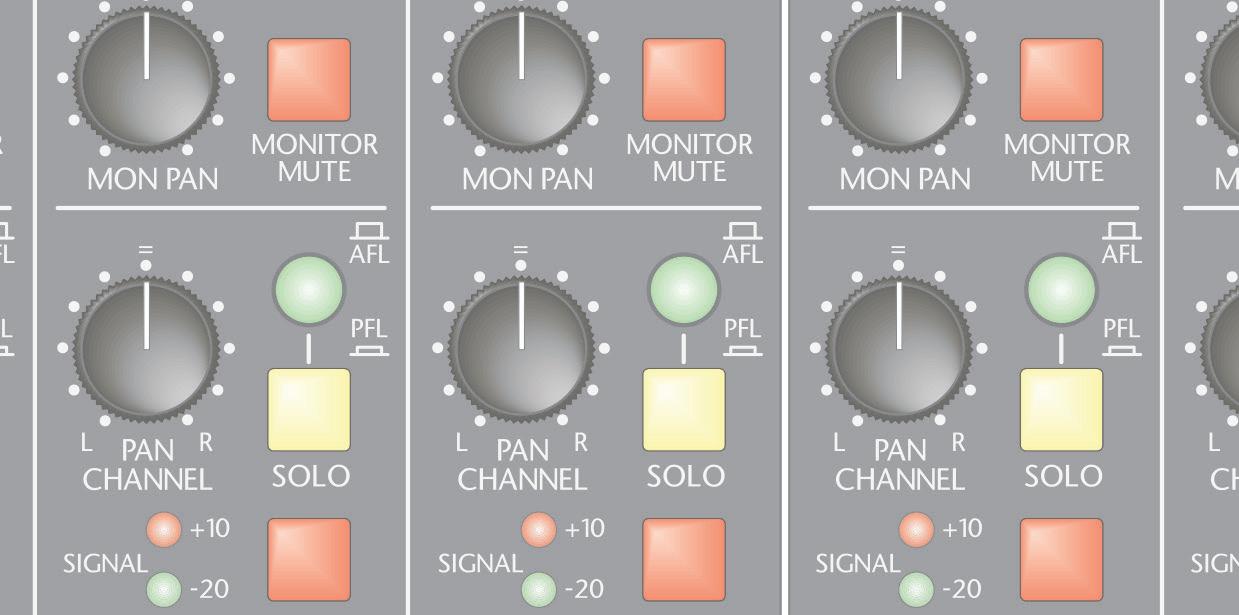






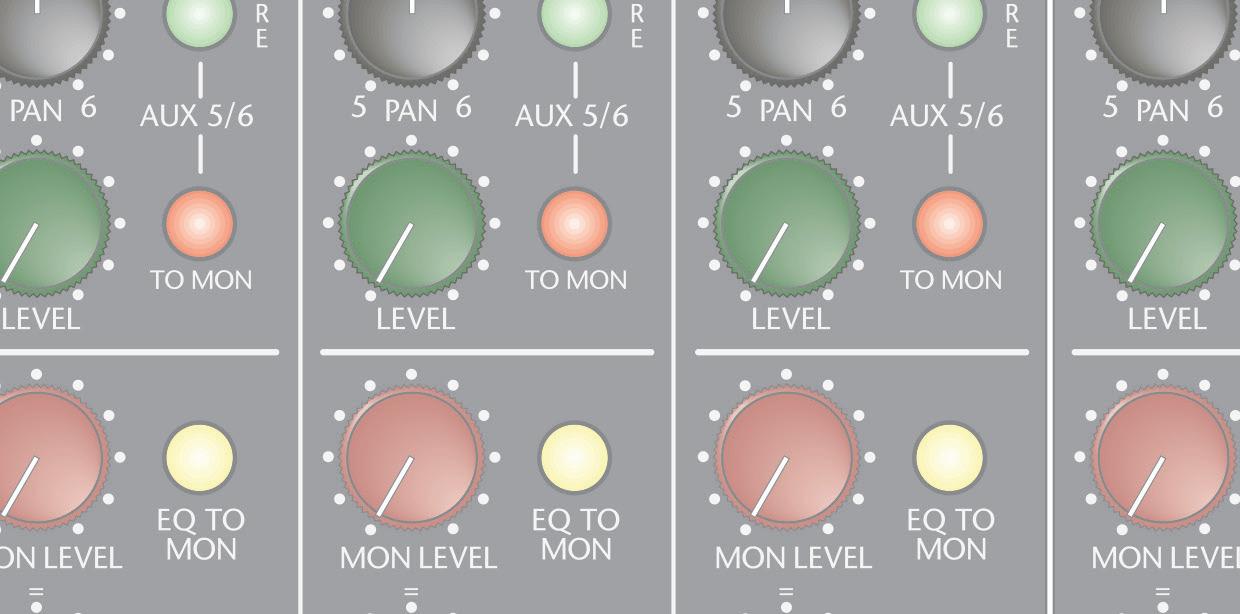



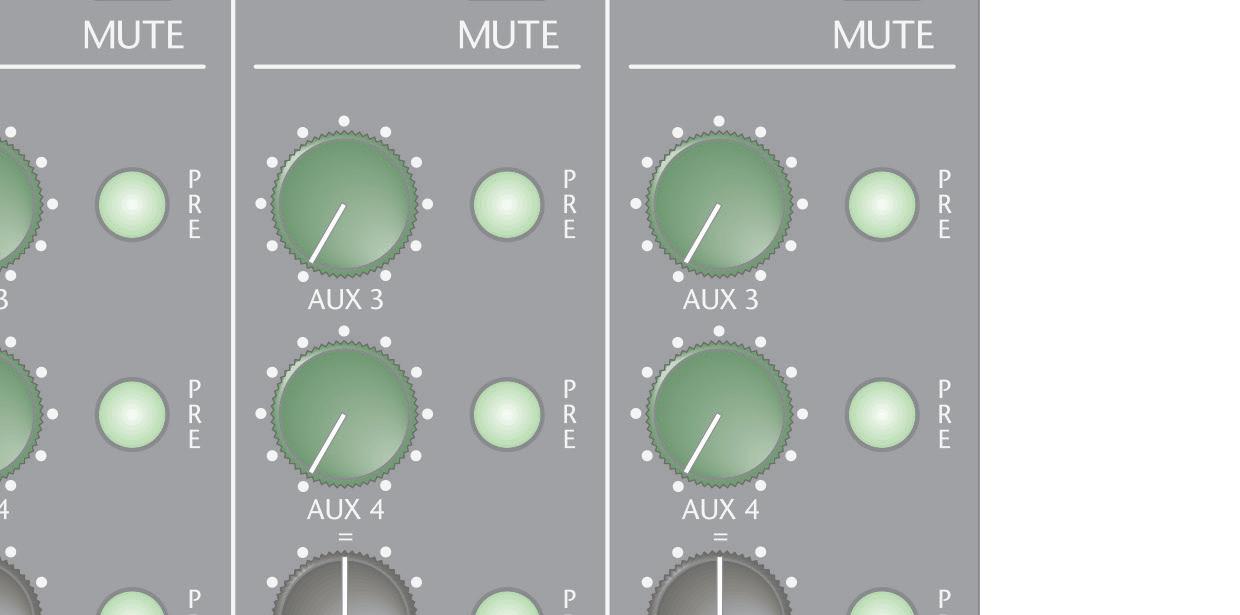



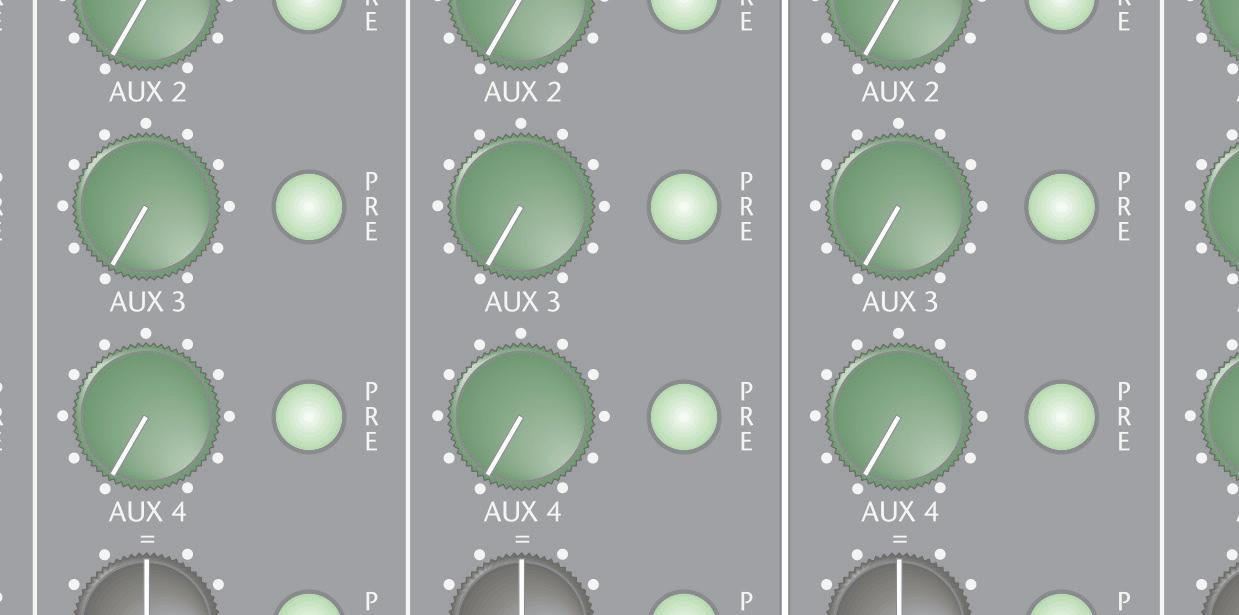
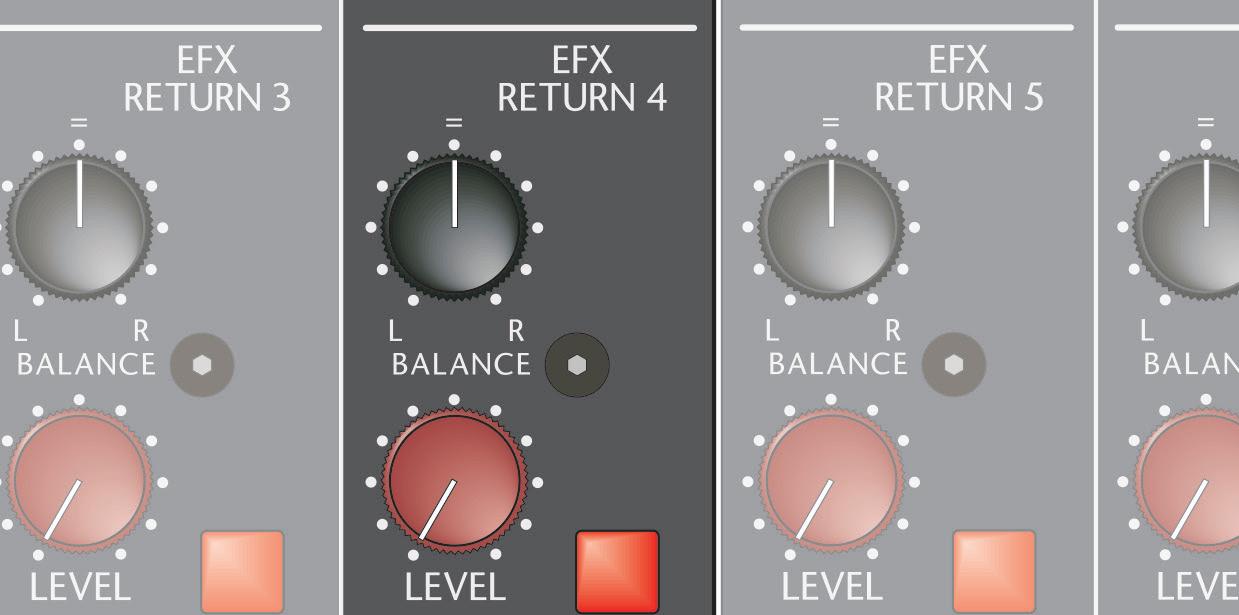


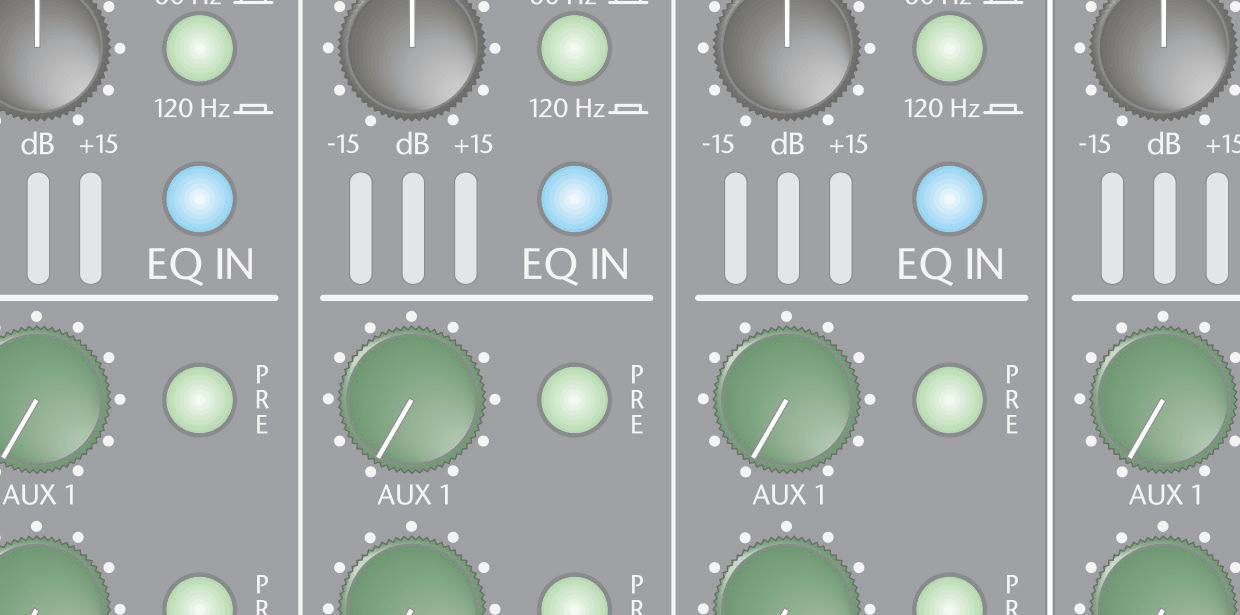
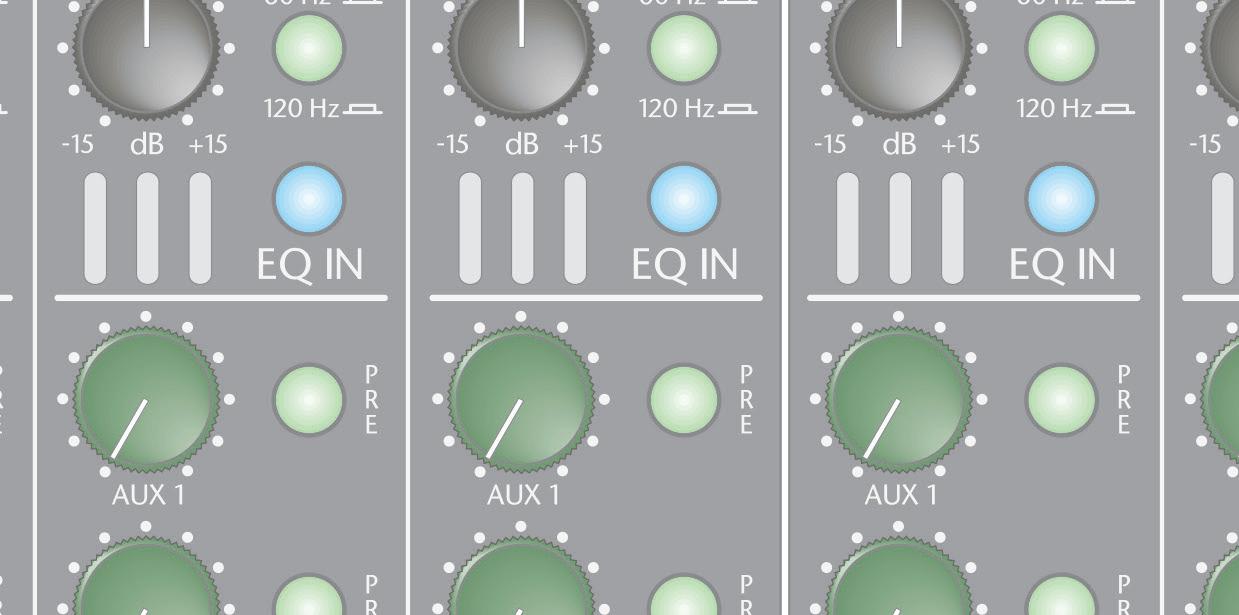

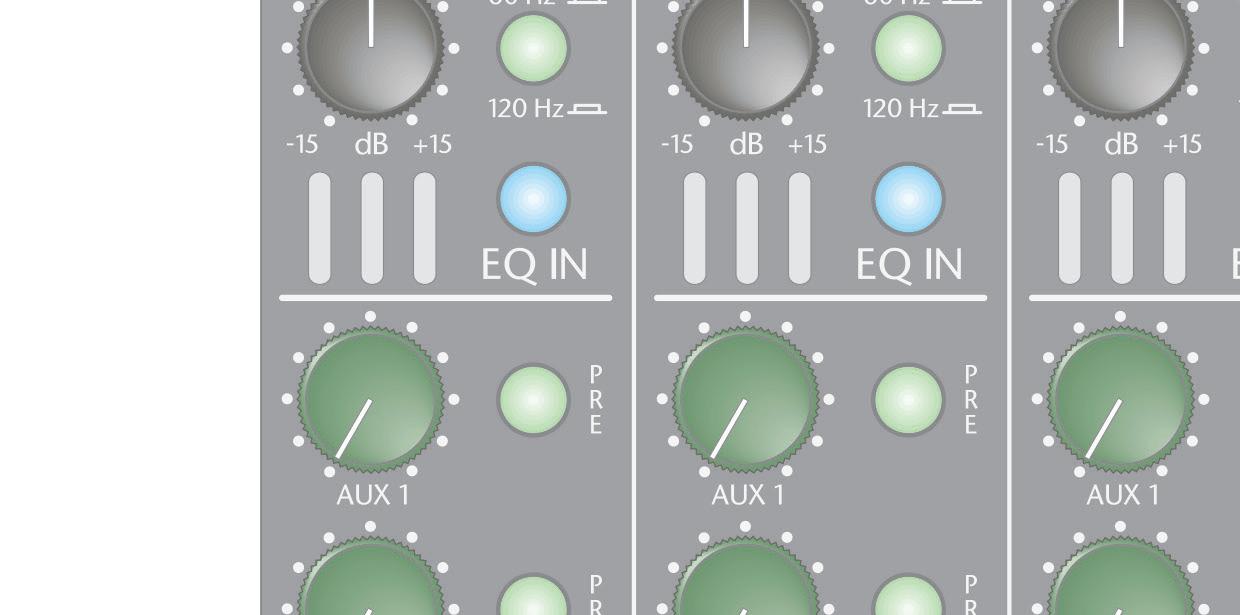

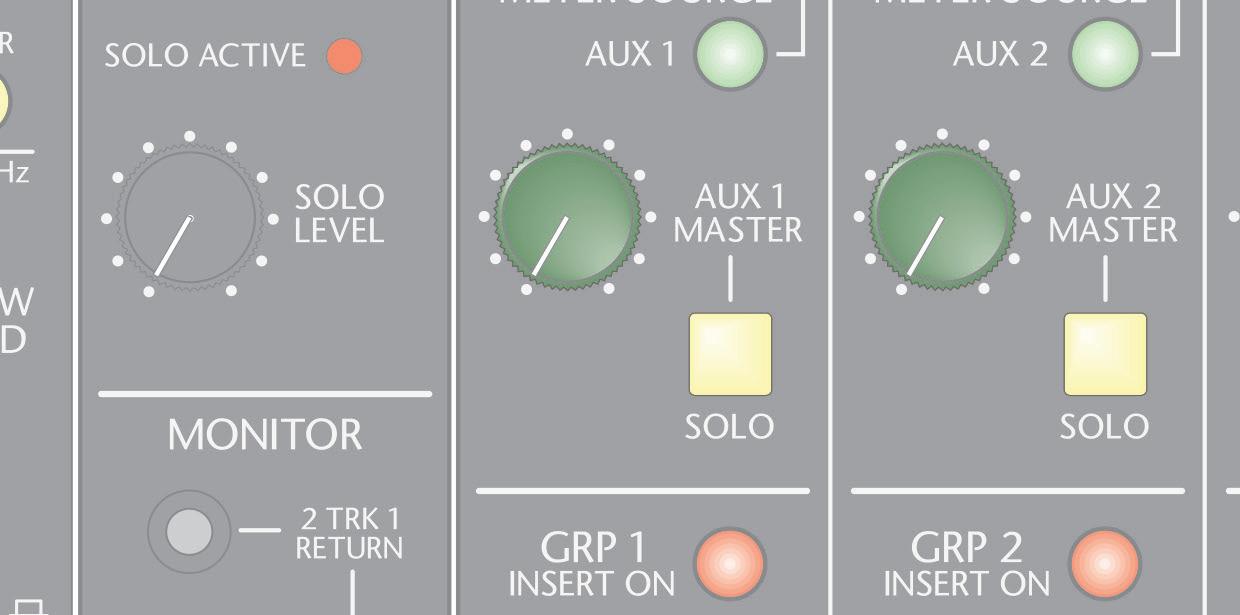

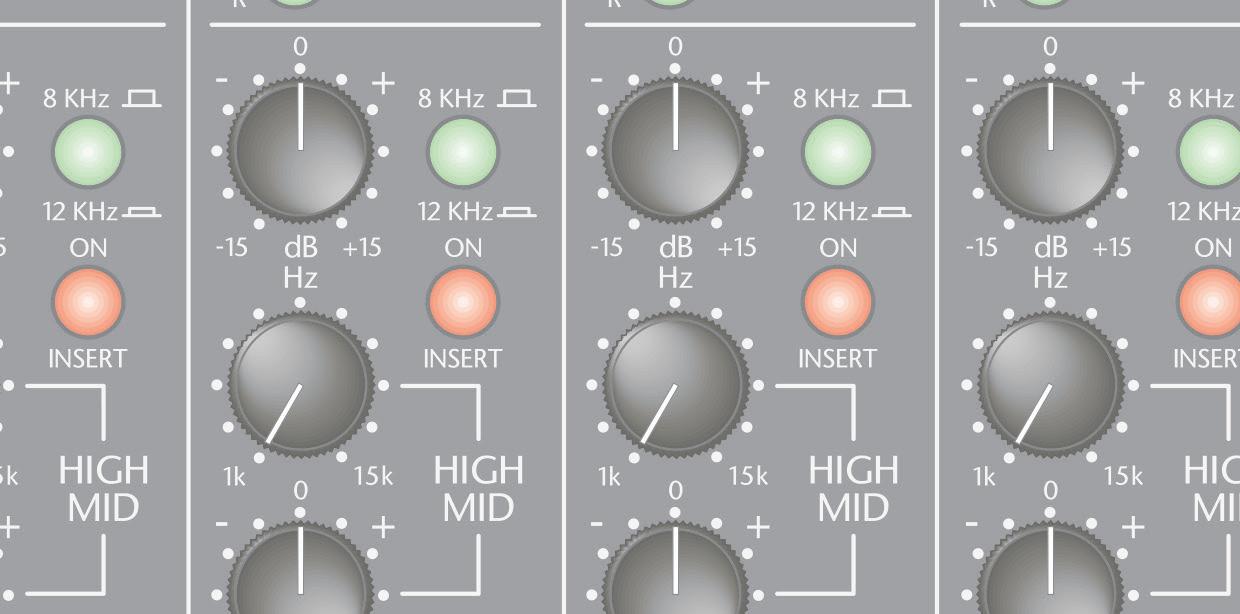

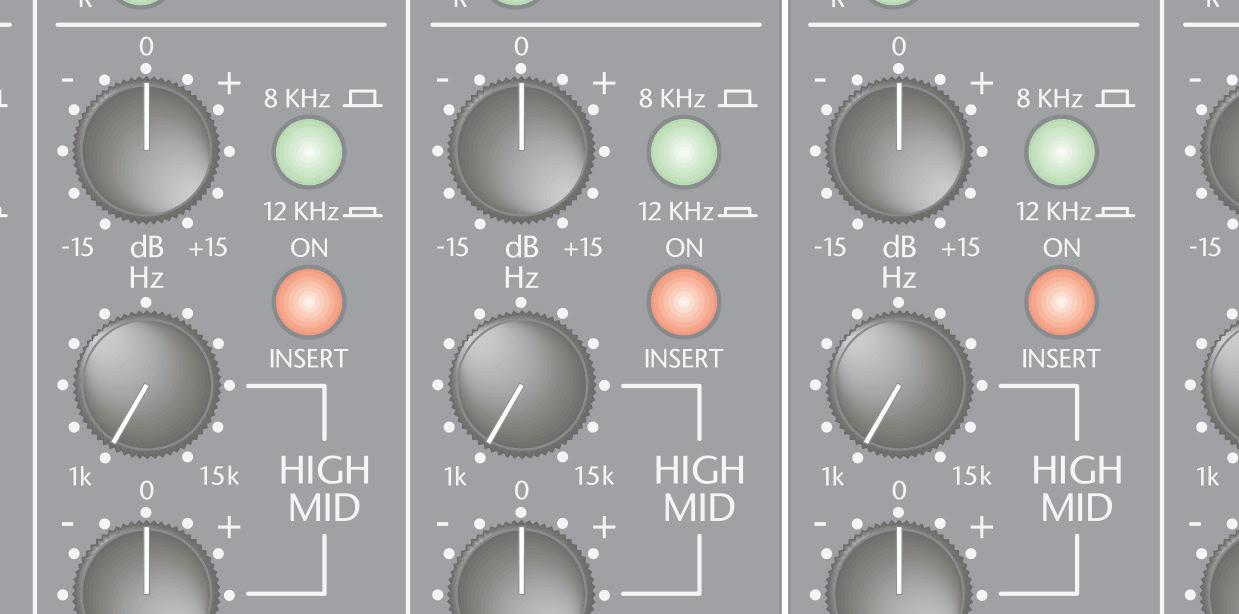

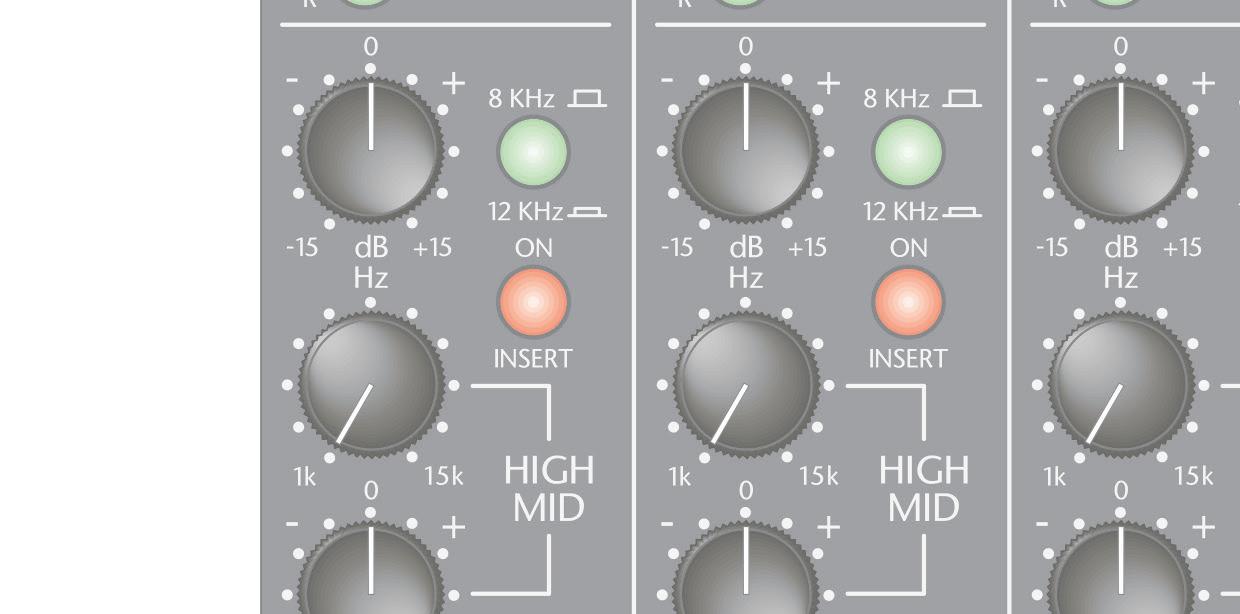
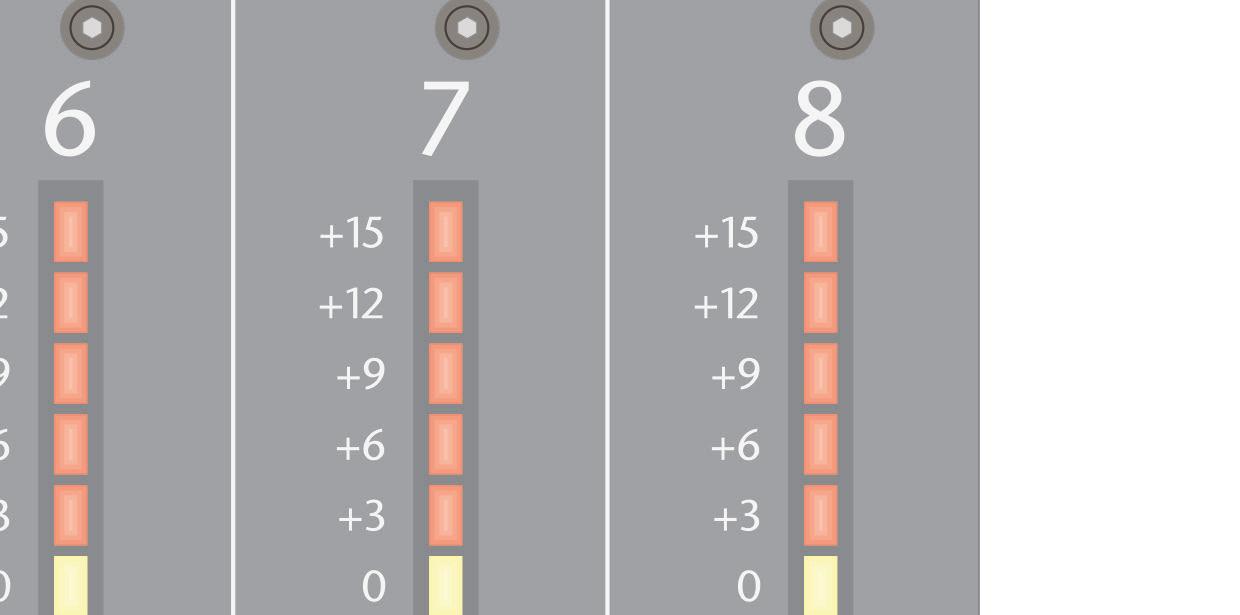
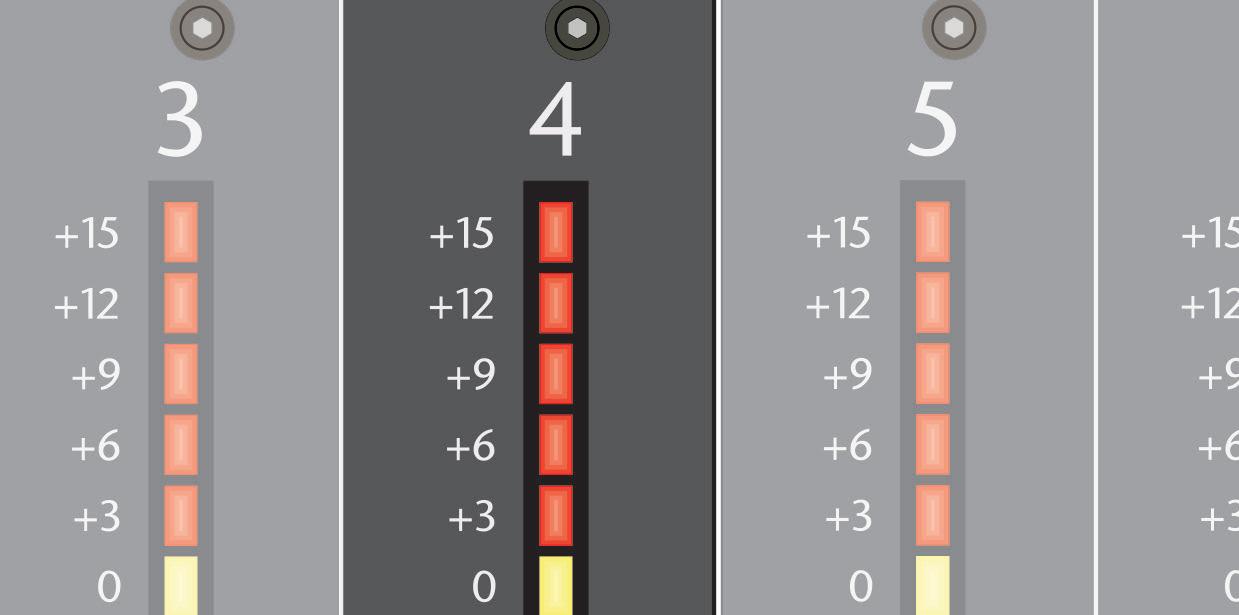


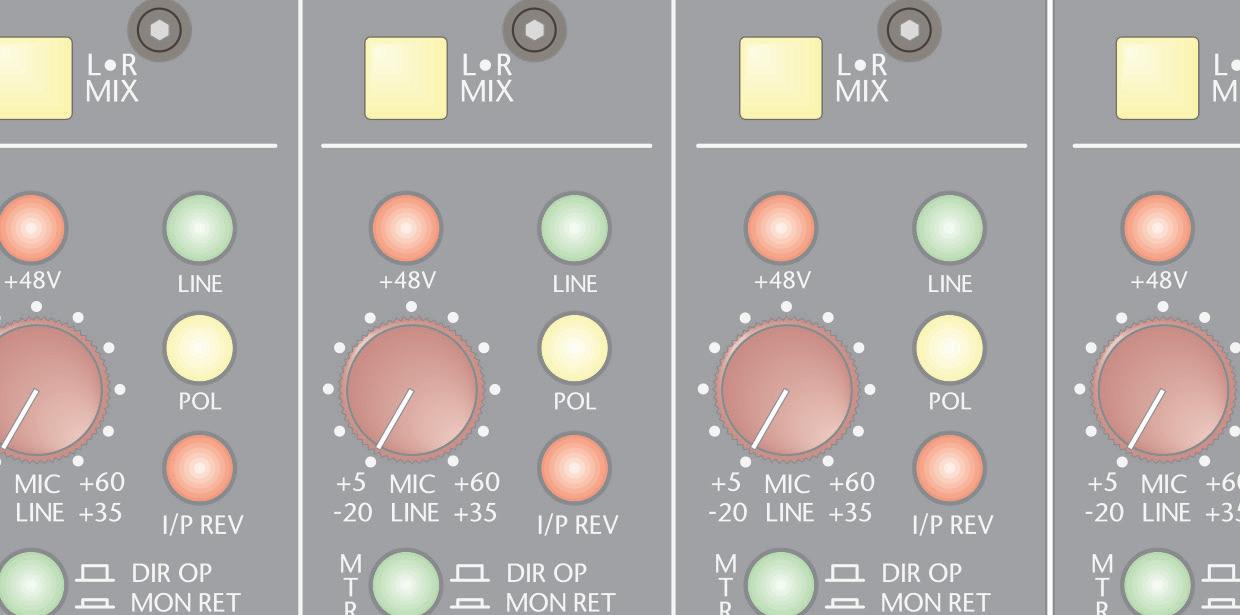

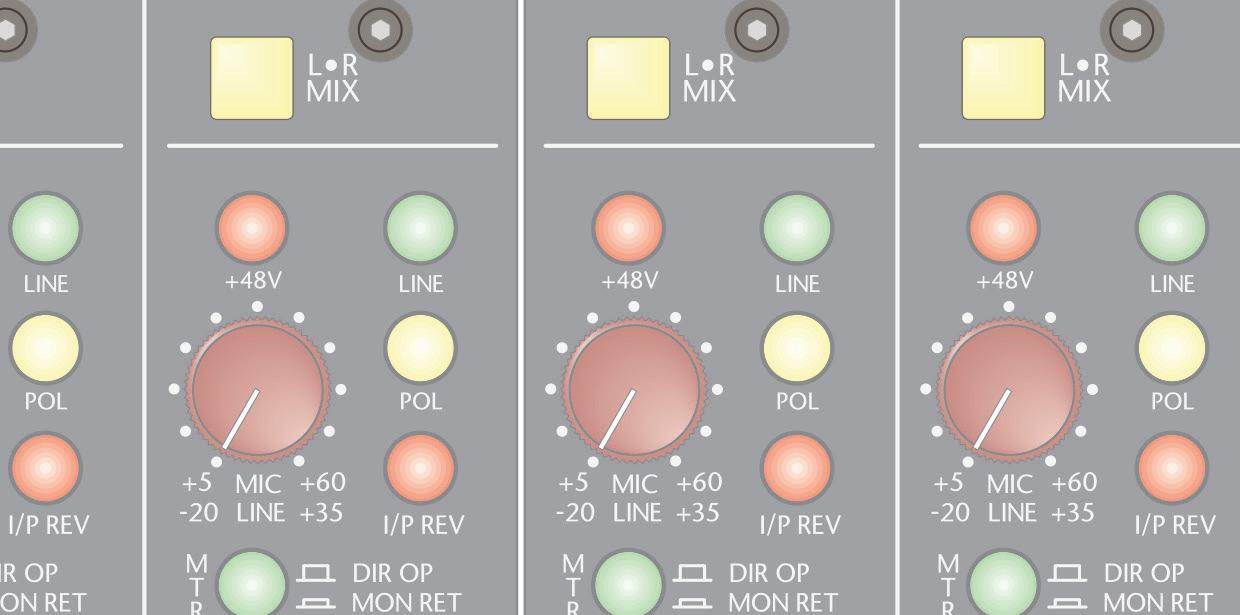

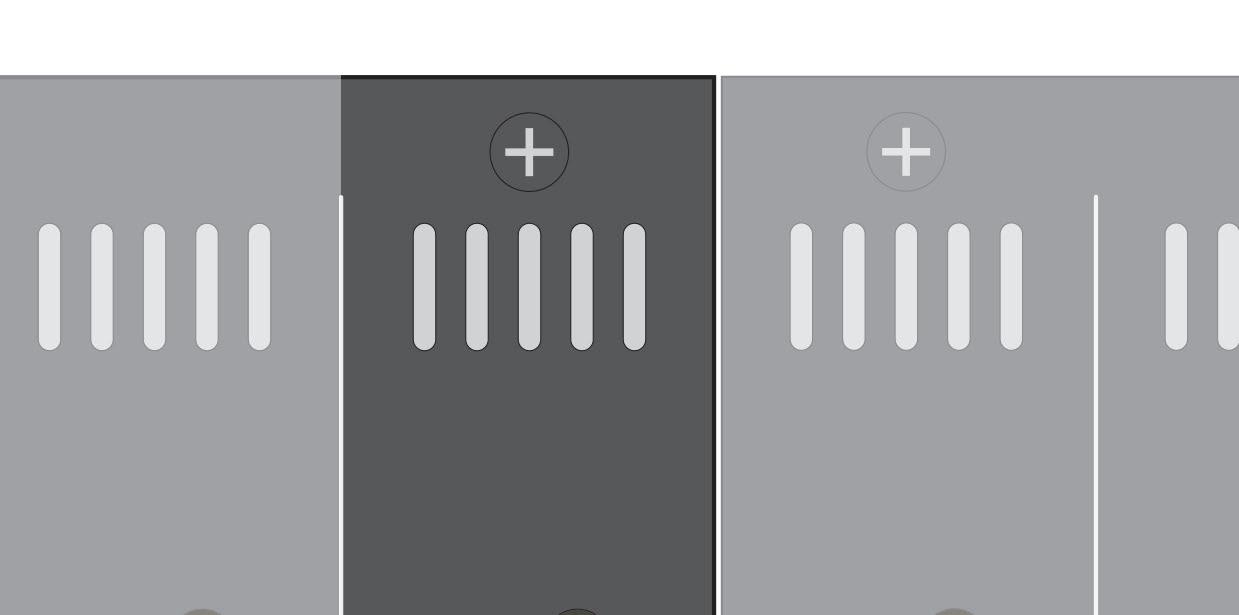
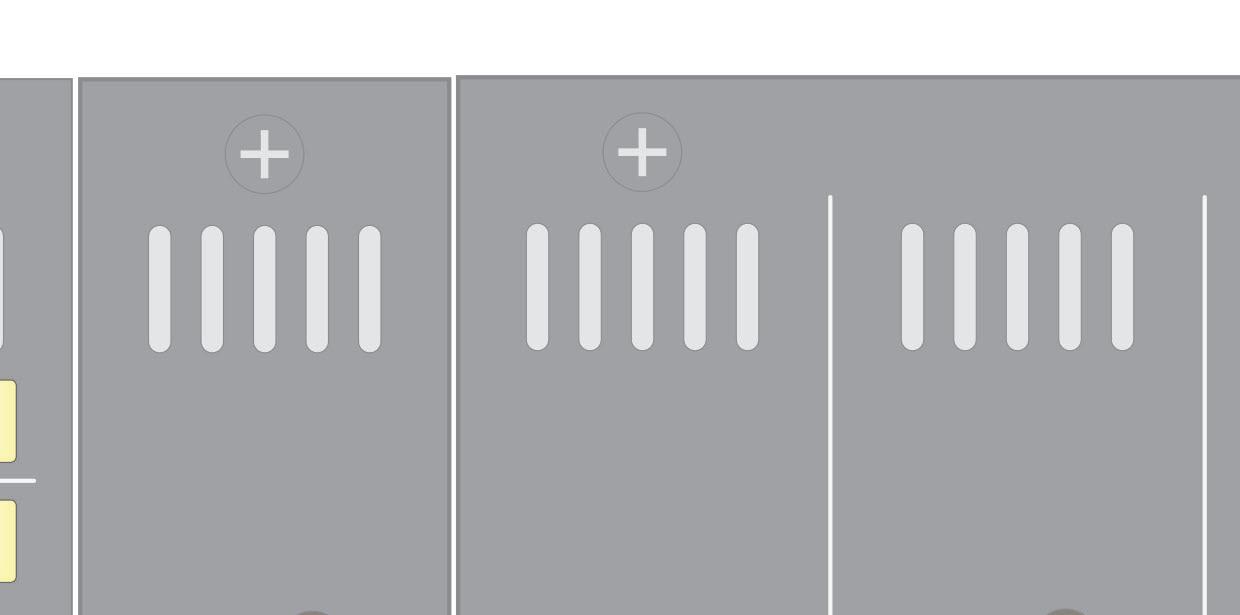
A separate facility on each Group channel is the inclusion of a stereo Effects Return Section. Individual inputs are provided on the DSUB located on Master Connector panel and are wired in stereo and these feed the Effects Return section on the associated Group channel. This adds the ability to send a signal (from the EFX Return Inputs) with level and pan control to the master Left/Right mix. Solo monitoring is provided on the EFX Inputs that provide a post Level post pan feed to the solo system.








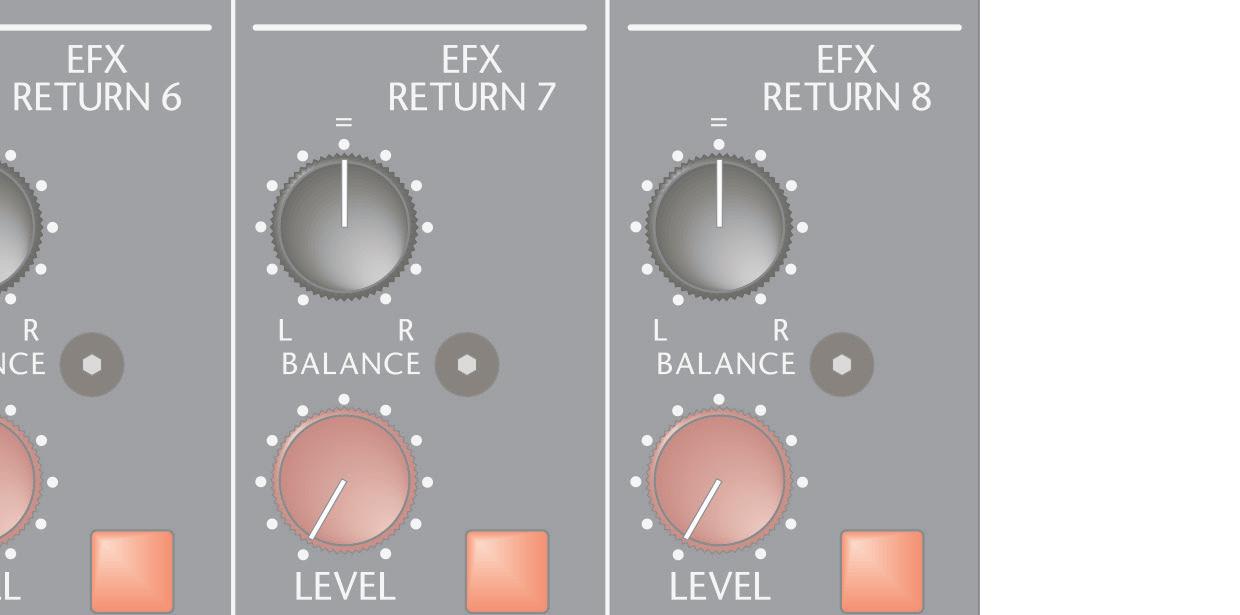
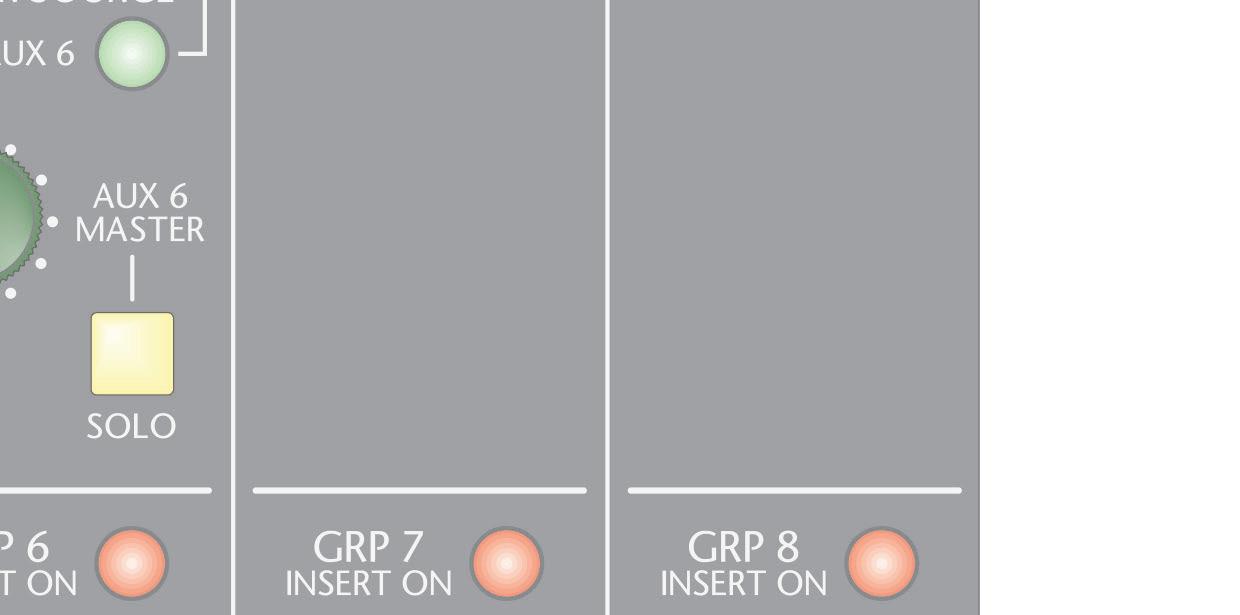
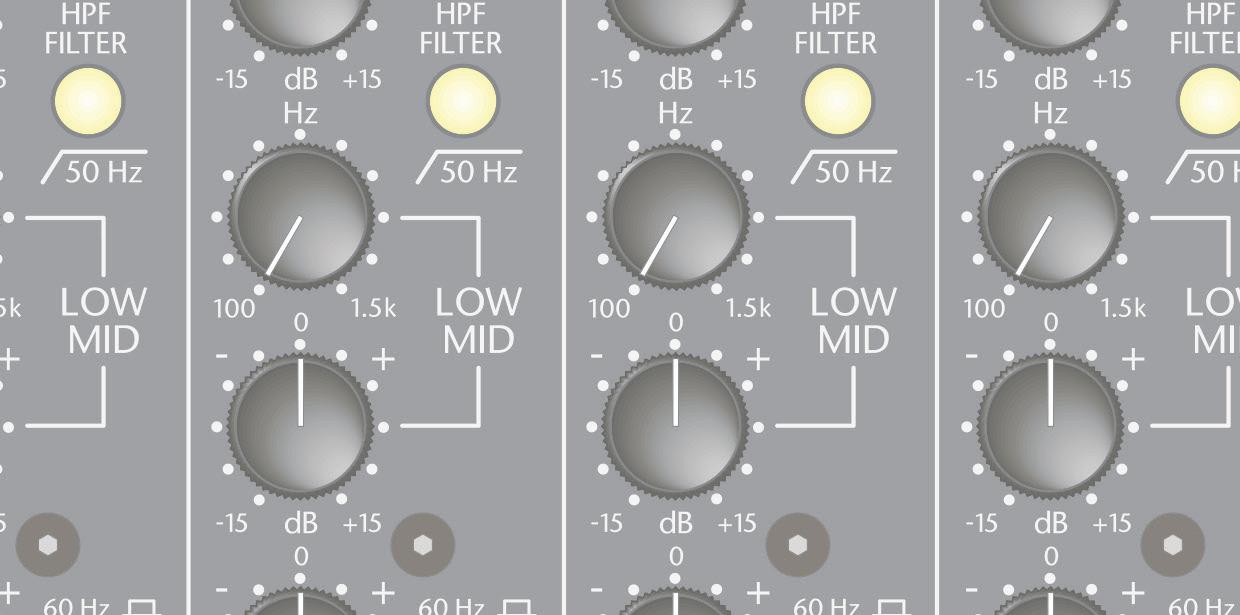


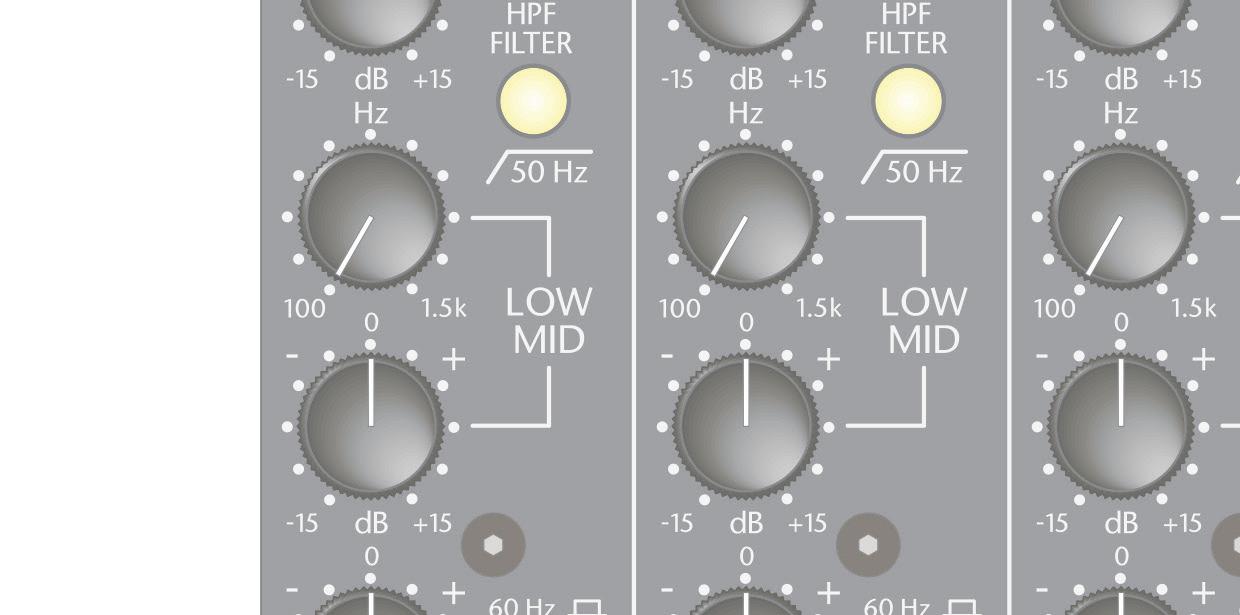


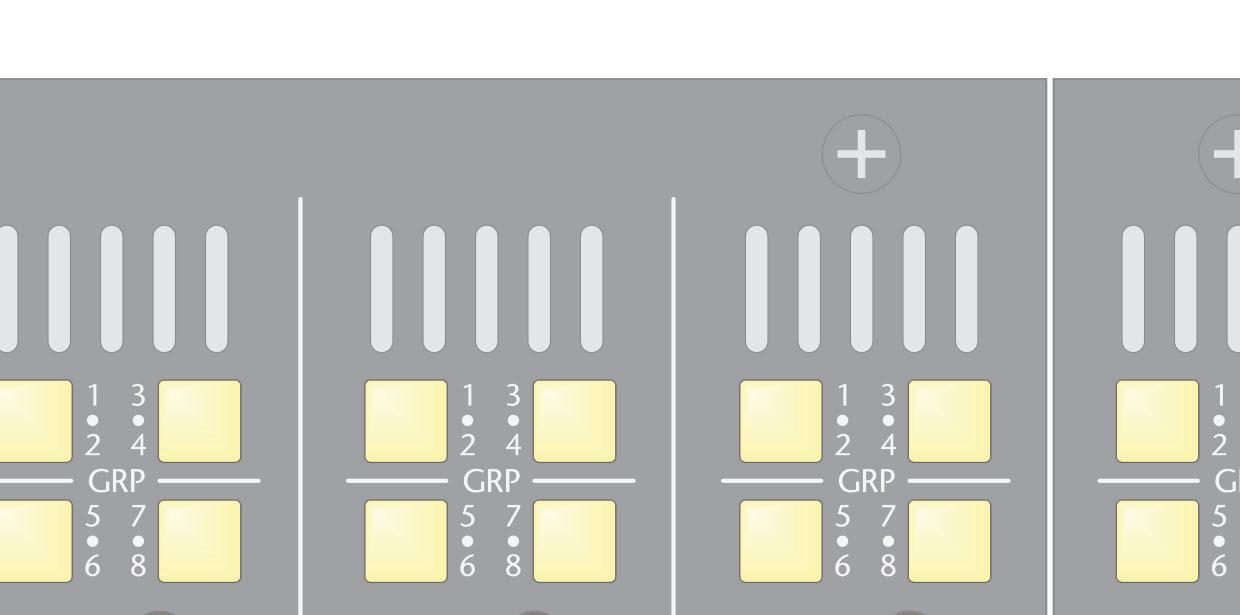

The following gives a brief description of the controls on the Group module.

Displays one of 3 sources as determined by the switches below (MON SOURCE and AUX TO MTR). The meter is a peak responding meter with a fast attack and slower release. It is very useful when used with complex dynamic waveforms and able to display sharp transient responses and greatly assist the engineer when it comes to avoiding distortion during recording.
This control adjusts the Aux 1 bus mix level that appears on the associated Aux Output pins of the DSUB on the rear panel.
NOTE: Since there are only Six Auxiliary sends on this console, this control is not available on Group strip 7 and 8.
When depressed, this switch places the rear panel Group insert path to the Insert Send and back from the Insert Return in line with the signal path. This insert is point directly after the Group mix stage and before the Group Fader and allows the user to connect an external device in series with the Group signal and to be able to switch it in/ out via the front panel.
When this LED is illuminated, the associated Group meter is being fed either the Group Output signal or the Group Monitor Input signal as determined by the MONITOR RETURN switch located at the bottom of the channel strip.
Pressing this switch assigns the associated Aux Output (post the Aux Master Level on the master module) to the bargraph meter above. This allows the user to check Auxiliary outputs signal levels from the console on the meter. Note: When this switch is pressed the Auxiliary signal sourced to the bargraph meter overrides any other signal to the bargraph selected by the MONITOR RETURN switch as described by the MON SOURCE LED above. Additionally pressing this switch will switch OFF the MON SOURCE LED above to indicate the bargraph meter is only being fed the associated AUX level.
NOTE: Since there are only Six Auxiliary sends on this console, this control is not available on Group strip 7 and 8. And the signals to the bargraph meters are always following the MONITOR RETURN switch on those two group channel strips.
Assigns the post Aux Master Level signal to the Solo system for display on the Master meters and into the monitor/headphone systems. This signal feed to the solo system in mono.
NOTE: Since there are only Six Auxiliary sends on this console, this control is not available on Group strip 7 and 8.
This control blends the EFX post-level/post mute signal between the Left and Right buses. When at the centre, detented position, both sides are fed equal amounts of signal (each down by 3dB).
Adjusts the Effects Return signal level to the Left/Right bus.
Adjusts the mix level of Monitor Input into the Aux 3 bus.
Adjusts the mix level of Monitor Input into the Aux 4 bus.
Adjusts the balance of the Monitor signal being fed to Aux 5 bus (CCW) and Aux 6 bus (CW). In the centre (=) position equal signal level is sent to both Aux 5 and Aux 6 buses.
Adjusts the mix level of Monitor Input into the Aux 5 and Aux 6 buses.
When pressed will Mute the Effects Return signal to the Left/Right bus. It is recommended when the EFX RTN section is not being used that it be muted.
This switch determines the signal source for Aux 3 bus, between Post (Up) or Pre (Down) Monitor level.
This switch determines the signal source for Aux 4 bus, between Post (Up) or Pre (Down) Monitor level.
This switch determines the signal source for Aux 5 and Aux 6 buses, between Post (Up) or Pre (Down) Monitor Level.
Adjusts the Monitor input signal level to the Left/Right bus.
This control blends the Monitor Input post-level/post mute signal between the Left and Right buses. When at the centre, detented position, both sides are fed equal amounts of signal (each down by 3dB).
This switch determines the signal source to the Group Monitor section; additionally it displays the signal shown on the bargraph meter above. (see also MONITOR SOURCE LED above) In the UP position the signal fed to the group Monitor section and bargraph meter is the Group output. When depressed (DOWN) the signal fed is derived from the associated rear MONITOR RETURN pins on the DSUB connector on the rear panel.
When pressed, routes the Monitor signal (post level and pan) signal to the Solo bus. Additionally this switches the Main Monitor Output (normally fed the Left/Right Mix) to source the signal from the AFL/PFL Master Level in the Master section as well as to trigger LED indicators in the Master section and Meter-Bridge stating a solo has been pressed.
When pressed will Mute the Monitor Input signal to the Left/Right bus. It is recommended when the Monitor section is not being used that it be muted.
The Master section of the TRIDENT 78 console contains all of the controls that affect the overall functionality of the console.
An accurately matched 100mm stereo fader controls the level of the master stereo balanced outputs. A key feature is the addition of a switchable transformer into the left/right monitor outs, which when fitted allows the user to put two high quality transformers into the monitor output path. These transformers are an optional add on and do not come standard.






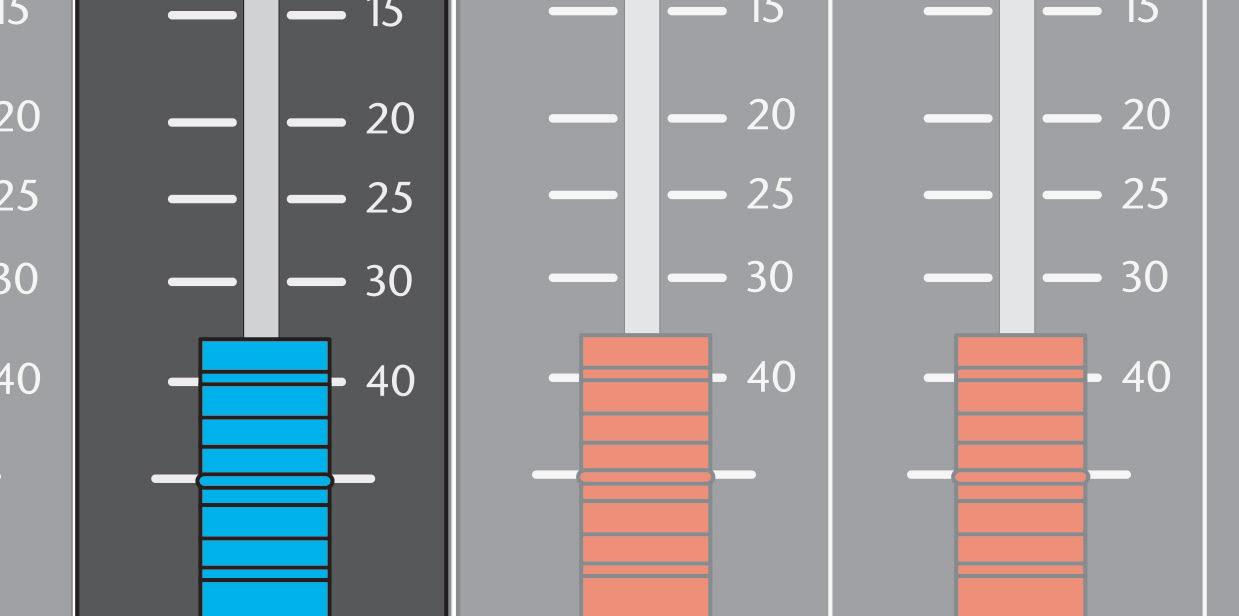







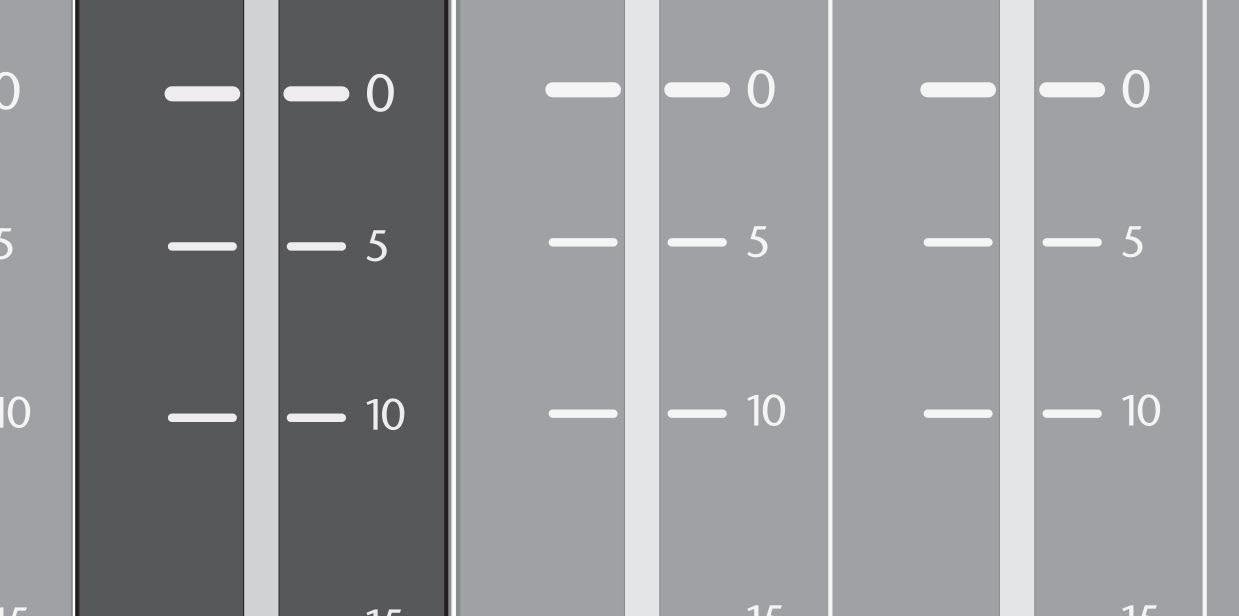







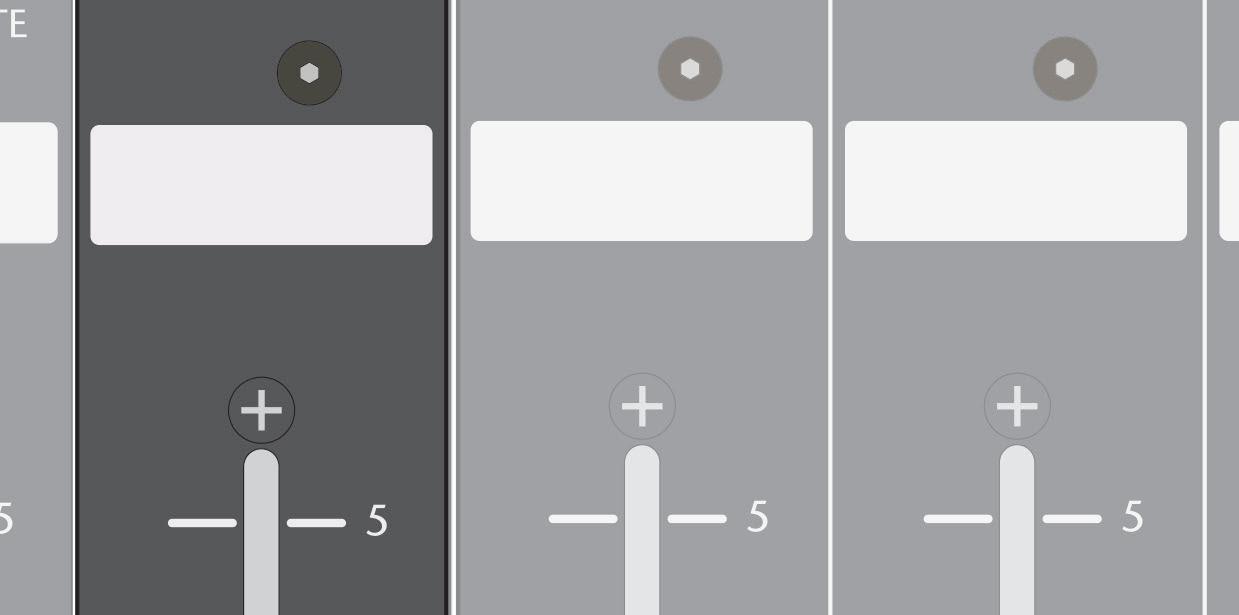



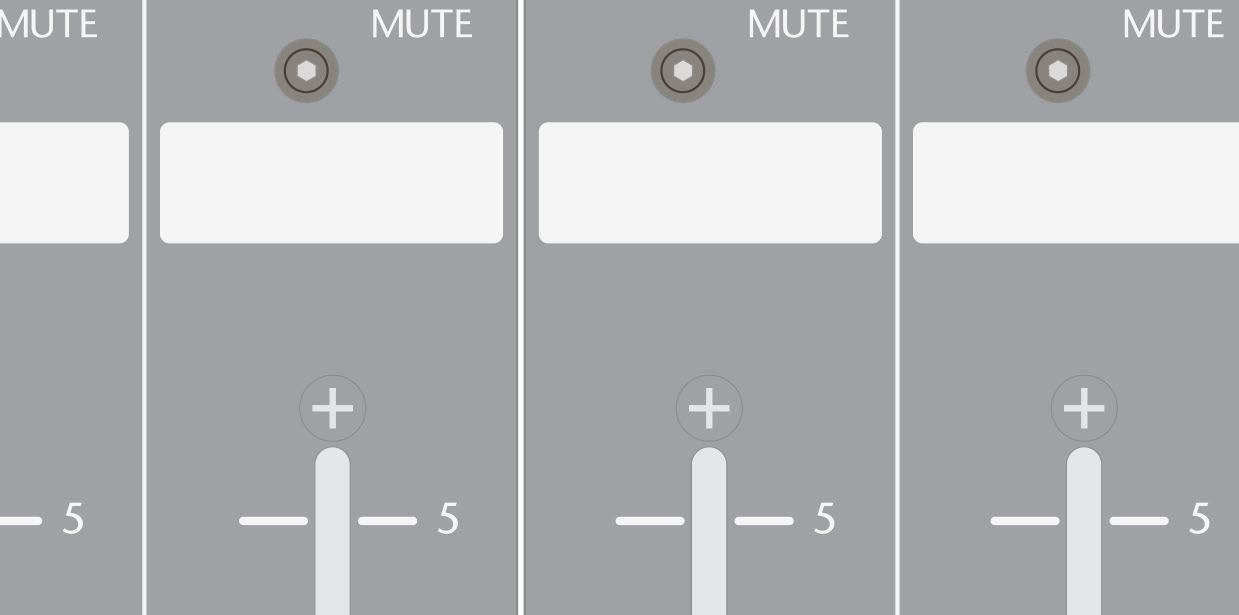






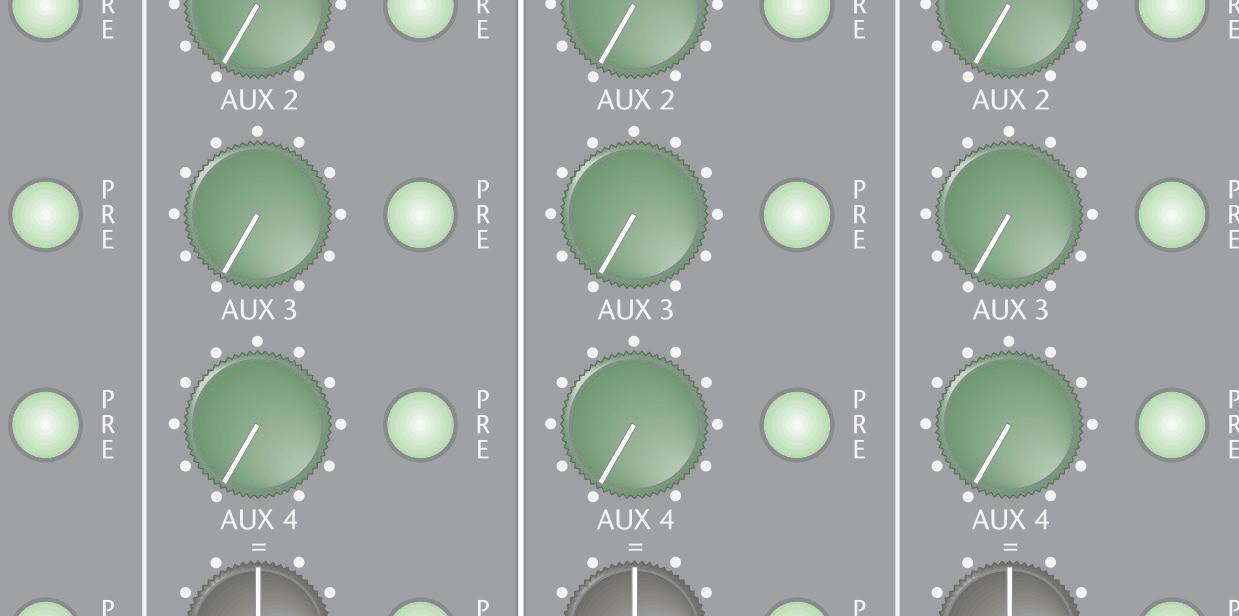





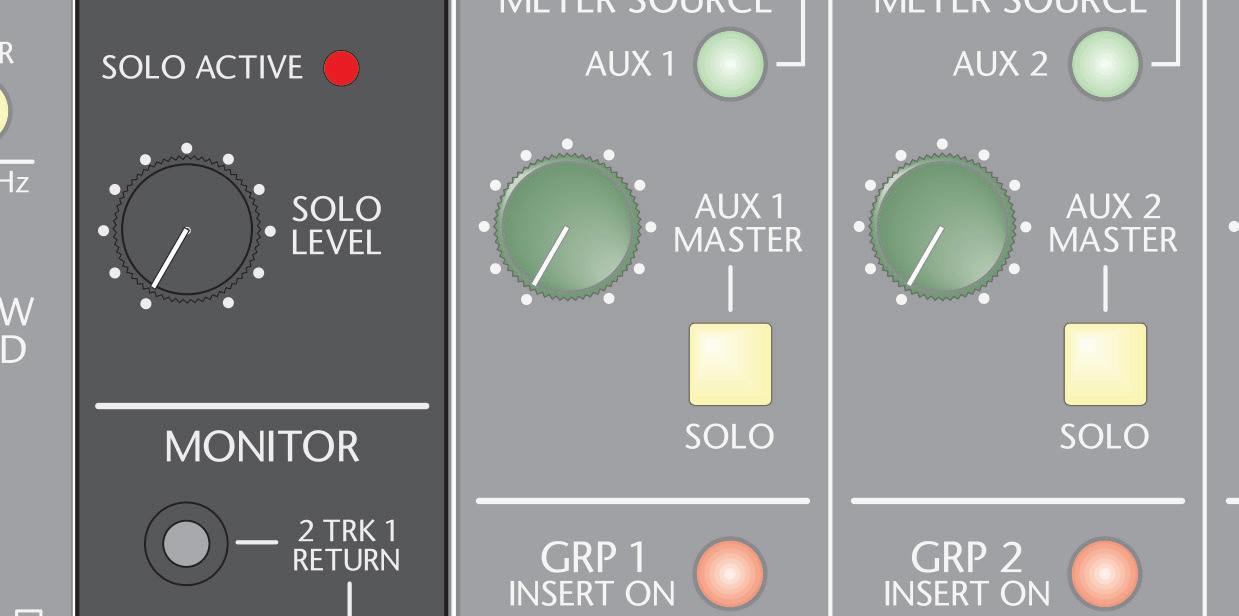



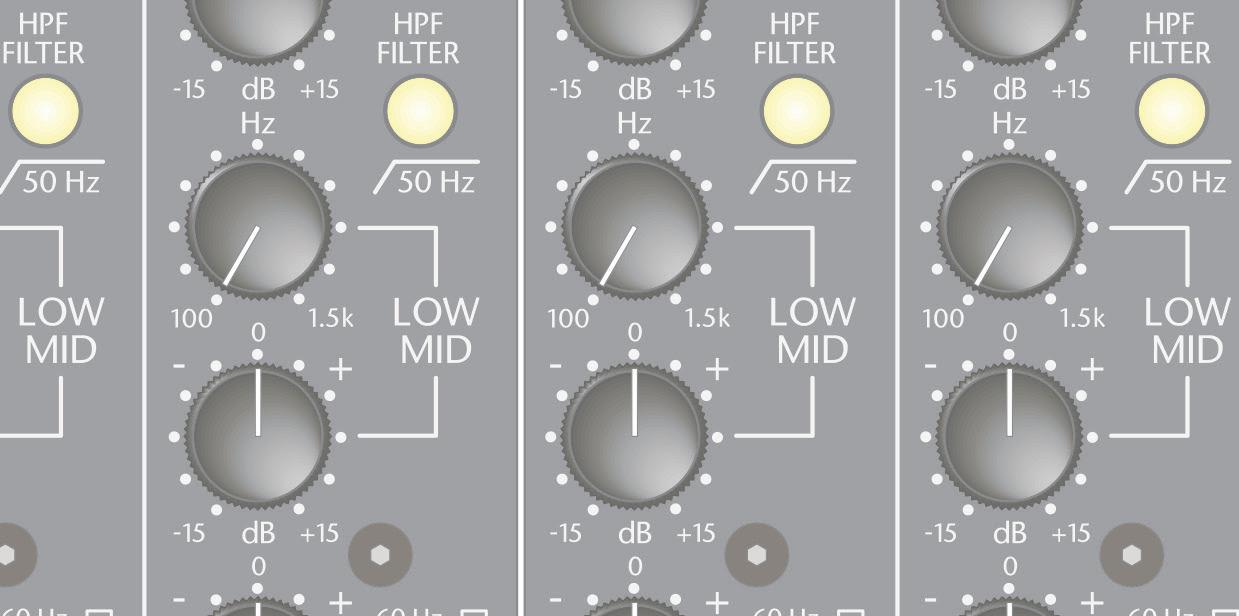








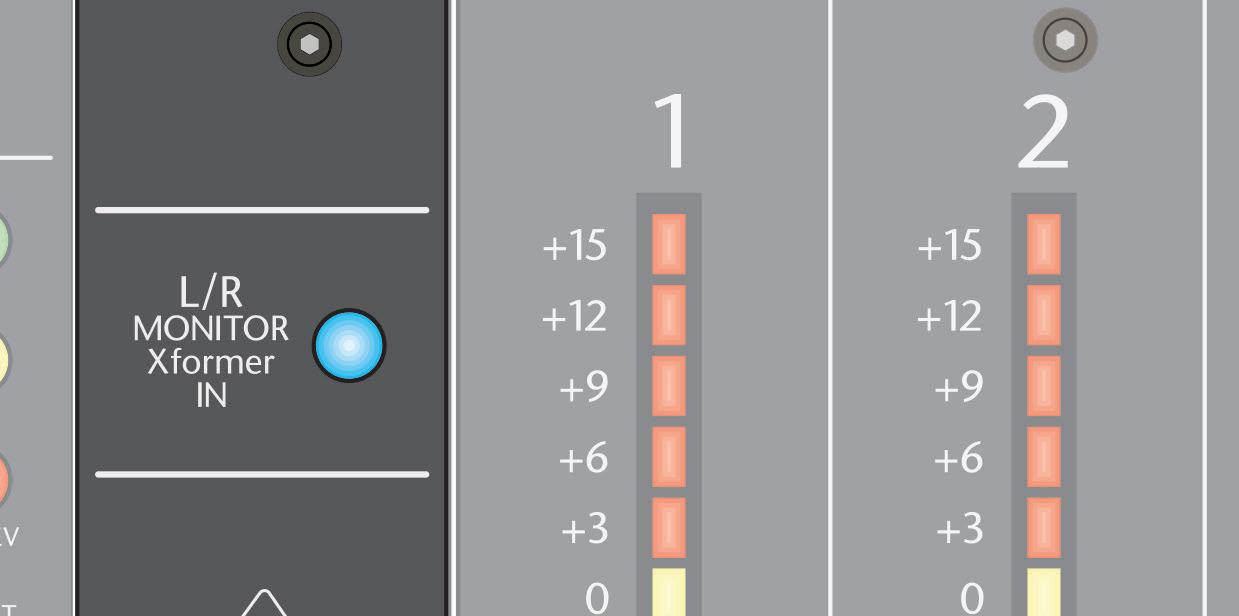


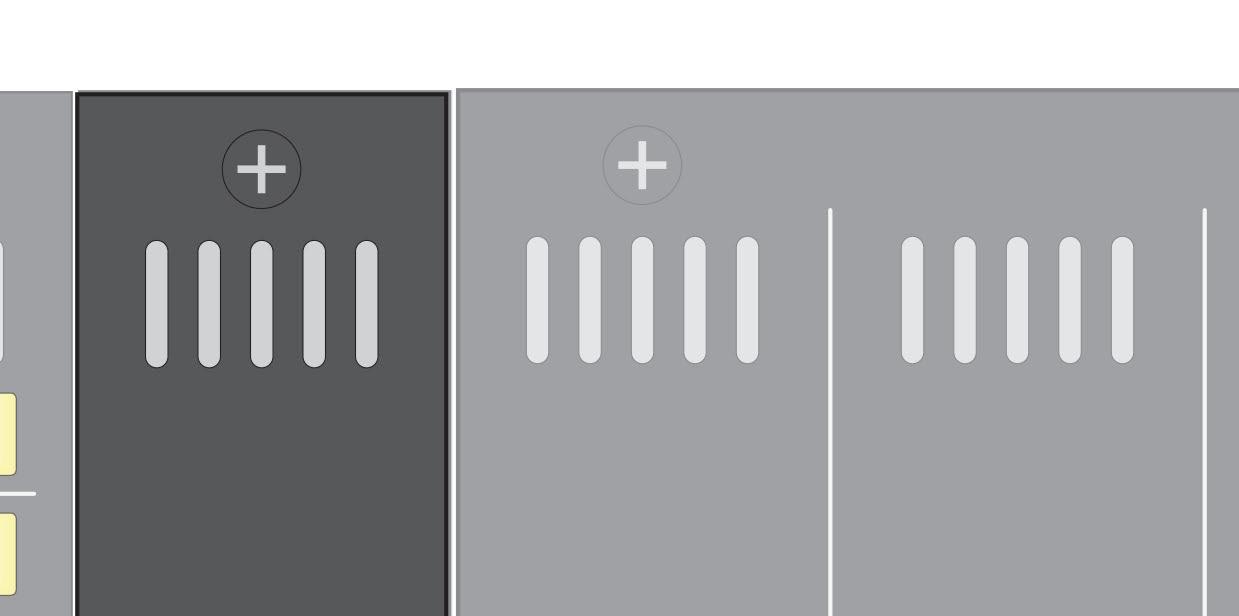



A talkback system is provided which incorporates an internal high quality electret microphone with an option to switch over to an external microphone, this is plugged into the rear of the console via the associated DSUB connector pins, +48V phantom volts are always available on these pins. The talkback signal can be routed to the auxiliary buses and the 8 subgroups. When the ‘TALK TO GROUPS’ button is used, the monitor signal is dimmed to avoid feedback in the control room monitor speakers.
The main monitor system is very comprehensive. The engineer can monitor anyone of three stereo playback devices. ‘2TK 1 RET’ and ‘2TK 2 RET’ are conventional analogue connections located on the master connector section so that the playback of a stereo device such as a cd player or output of a computer sound card can be selected to the control room monitor speakers and a 3.5mm TRS mini jack available on the module allows the user to plug in his external portable audio source too (e.g. Ipod). The monitor system is provided with a SUM MONO control



which combines the left/right monitor signals so that it is possible to check mono compatibility. It should be noted that the mono facility is purely a monitor function and does not affect the main stereo left/ right output which remains as a true stereo image.




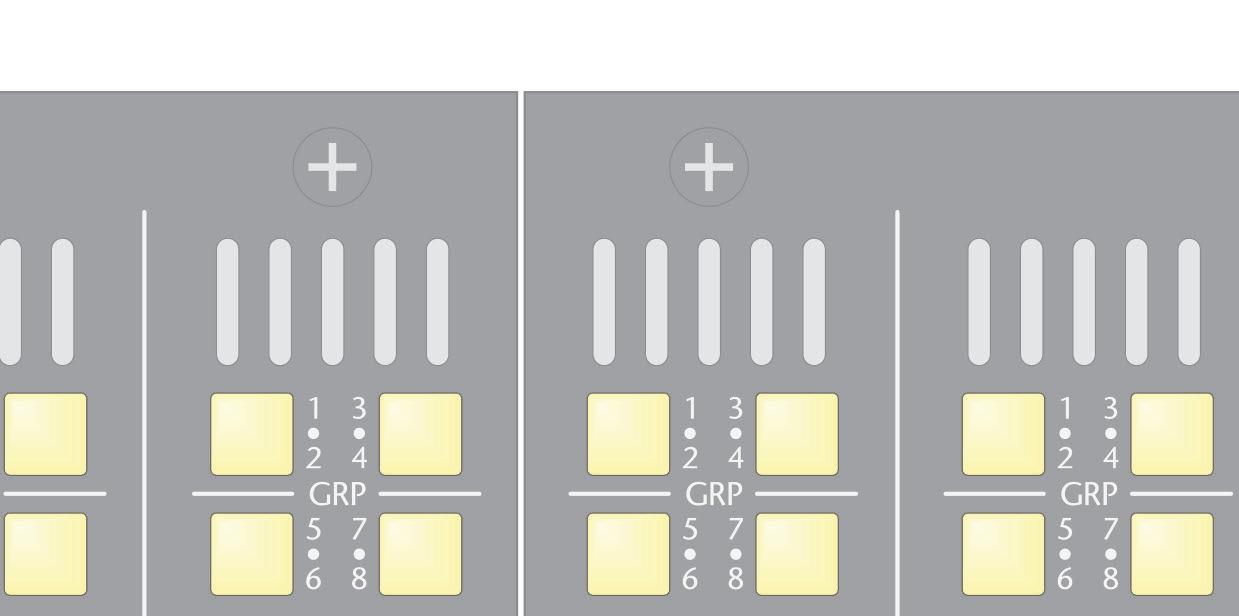
A very useful further facility in this section is the provision of an alternate monitor outputs (Alt MONITOR) which when switched ON routes the monitor signal to associated set of output pins on the rear of the master section so that an alternative monitor system can be set up. This makes it possible to listen to the signal on (for example), a different set of monitor speakers so that comparisons can be made.
A headphone jack with a high quality stereo amplifier is provided which allows the engineer to monitor the console only on headphones if required. A separate stereo volume control is provided so that the headphones can be adjusted independently from the main monitor control level.
A stereo master level control is also provided so that the volume of the AFL/PFL system can be adjusted into the control room monitor speakers. This comes combined with indicator LED that notifies the user that a console SOLO switch has been pressed and that the AFL/PFL signal is now being fed to the control room monitors.


The following gives a brief description of the controls on the Master module.


















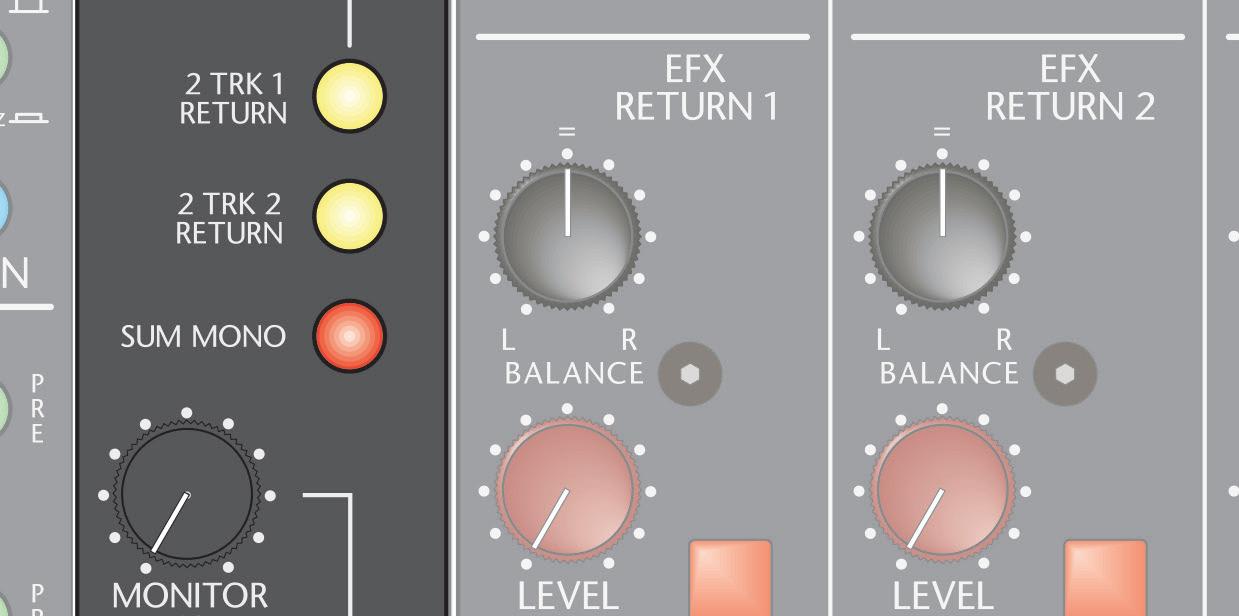








Inserts a transformer path into the Left/Right Monitor outputs. The transformer is an optional add on and does not get installed by default. Note: If the transformer is not fitted, then this switch will not do anything and will not illuminate.
When depressed, this switch places the rear panel Left and Right insert paths to the Insert Sends and back from the Insert Returns in line with the signal path. This insert point is directly after the Left/Right mix stage and before the Left/Right stereo Fader and allows the user to connect an external device in series with the Left/Right signal and to be able to switch it in/out from the front panel.
This control adjusts the level of the solo left/right mix fed to the control room monitors when one or more SOLO switches are selected on the console. This presets the SOLO signal level and enables the engineer to balance the signal levels to the control room monitors from the main mix and the solo mix. Note: Main Left Right meters always show the solo signal pre this level control (unaffected by this control).
When depressed this selects either the signal from the stereo 2-TRK 1 Return pins of the DSUB (on the rear master connector panel) or the stereo signal plugged in the STEREO IN JACK (above) and feeds it to the control room monitors. The stereo 2-TRK 1 return signal from the rear connector is normalled to the STEREO IN JACK signal and if a signal wire is plugged into the STEREO IN JACK it replaces the signal from the 2-TRK 1 Return from the rear panel and that is the signal that is switched to the main monitors. Note: When this switch is depressed, the main Left/Right mix is disconnected from the control room monitors, also if 2-TRK 2 switch is depressed (below) this kills the 2-TRK 1 signal to the control room monitors. For monitoring signals into control room monitors the Priority is SOLO mix 2-TRK 2 2-TRK 1 Main Left/Right mix.
When this LED is illuminated, it indicates that one or more SOLO switches have been pressed on the console. The console monitor output is now being fed from the solo left/right mix buses. Additionally the console main Left/Right meters are switched to monitor the solo left/right mix and an additional meter bridge indicator flashes to show the console is in a “SOLO” state.
This jack allows the engineer to plug in an external stereo signal via a standard 1/8” wire cable ( i.e IPOD) which can then be selected to the main Control Room Monitors. To assign this signal into the main monitors, the user has to depress the 2-TRK 1 switch.
2-TRK
When depressed this selects the signal from the stereo 2-TRK 2 Return pins of the DSUB (on the rear master connector panel) to the control room monitors. This switch has priority over 2-TRK 1 switch above. (see description 2 TRK 1)
Combines the Left and Right signals feeding the control room monitors to produce and summed (L+R) mono signal that feeds both Left and Right monitor outputs. Note: The SUM MONO facility is purely a monitor function and does NOT affect the main stereo Left/Right output which remains as a true stereo image.
This control adjusts the level of the stereo signal feeding the control room monitors.
This control adjusts the level of signal fed to the headphone jack below. The signal fed to the Control Room Monitors also feeds the headphone jack and this Headphone level control can be adjusted independently of the main MONITOR CONTROL LEVEL.
To monitor the console on headphones the engineer can plug them into this jack. The headphones jack is driven by a dedicated high quality, high current stereo amplifier.
This control adjusts the level of the talkback microphone to the talkback destinations below.
When depressed switches the talkback microphone source from the internal electrets above or the external microphone plugged into the appropriated pins of the DSUB situated on the rear master connector panel. Note: the rear panel talkback microphone connector is supplied with +48V phantom voltage and feeds into an internal high quality preamp stage.
Momentary switch, which when depressed assigns the talkback signal (post the talkback LEVEL Control) to all AUX mix busses.
When depressed this switch kills the signal being fed to the Control Room Monitors. DIM
When depressed, this reduces the level of the main monitor outputs by approx 30 dB. Note: this has no effect on the main Left/Right outputs of the console.
When this switch is depressed the main Left/Right Monitor feed is diverted to the ALT MONITOR output pins of the associated DSUB on the rear connector panel.. In doing so, the console main Left /Right signal is switched OFF. This allows the engineer to set up a separate monitor feed (say to another set of monitor speakers) and be able to A/B the systems for comparison.
Directly behind this location is situated the internal high quality electrets microphone.
Momentary switch, which when depressed assigns the talkback signal (post the talkback LEVEL Control) to the all the group buses. Additionally when depressed the signal to the control room monitor is dimmed (attenuated) by approx 30 dB to avoid a feedback situation in the control room monitor speakers.
Outside of the balanced and unbalanced connections, it is highly recommended that the outputs of the main multitrack connections are wired in a mult, so that you can have the output feeding both the Monitor input and Line input at the same time. This will allow for the following, pre fader level metering while mixing through the Line input on the Channel path. Do note, however, that once you patch via the patch bay into the Monitor patch while mixing for extra returns at mix down, this will be defeated and the patched in signal will then show up on the meters.
Hooking up the Trident 88 to a patch bay allows for extra flexibility. To take advantage of this, we’ve provided a patch bay layout in the description below. A wiring diagram is also provided showing Non, Half and Fully Normalled connections.
Top Jack Tip Ring Sleeve Tip Ring Sleeve
Top Jack Tip Ring Sleeve
Top Jack Tip Ring Sleeve
Bottom Jack
Normal Path
Bottom Jack Tip Ring Sleeve
Half Normalled Bay Non Normalled Bay
Normal Path
Bottom Jack Tip Ring Sleeve
Full Normalled Bay
The patchbay layout for a console would be as follows
Half normal Connections:
Full normal connections:
The last 2 patchbays of the Master section will be a combination of the three Normal types.
The Trident 88 uses a combination of XLR and 1/4” jack connections. This provides plenty of flexibility when connecting the console to either an existing or new studio setup.
The following are balanced connections
7. Sub Group Outputs 8. Auxiliary Outputs 9. Main Outputs 10. Studio Playback 11. Main Monitor Output
Provided, are a combination of balanced and unbalanced connections. All connections are wired, pin 2 hot. For convenience, wiring diagrams can be seen for each of the connectors on the console rear connector panels. 1. Mic Input 2. Mic Insert 3. Line Input 4. Monitor Input 5. Direct Output 6. Monitor Returns (Sub groups)
The following are unbalanced connections’. Per the heading above.
1. Channel Inserts (+4dBu)
2. Stereo EFX Returns (+4dBu)
3. Stereo 2 Track Returns (+4dBU)
4. Alternate Speakers (+4dBu)
5. Group Inserts (-2dBu)
6. Stereo Buss / Main Insert (-2dBu)
The balanced & Unbalanced connections are wired per the following diagrams below:
Ring Sleeve
use of stereo 1/4” jack plugs
Tip = hot (+ve)
Ring = cold (-ve)
Sleeve = Ground / Shield
1
2
Tip Ring
Sleeve Strain relief clamp
For connection of balanced and unbalanced sockets, ring and sleeve have to be bridged at the stereo jack.
1 = Ground / Shield
2 = Hot (+ve)
For unbalanced, use pin 1 and pin 3 have to be bridged
Unbalanced Stereo Mini TRS to Pin 2 Hot XLR Male adapter for Walkman, DAT, CD or MD
1
The Trident 88 is supplied with a high quality switch mode D.C. power supply. The power supply should be connected to a suitable A.C. power source via the included earthed cable and connected to the 3 pin I.E.C. socket at the rear of the power supply. The power supply will accept both 230 and 110 volts A.C. It is recommended that the supply is placed in a well ventilated area on installation. Note the Trident 88 power supply is fitted with a silent running fan. Low voltage D.C. is supplied to the console via a circular locking connector. With the power supply switched off, this should be pushed firmly into the mating socket on the rear of the console Master connector (behind the Master section). A locking ring ensures that the cable cannot be accidently pulled from the console.
Once the power supply has been connected to the console, the power supply can be switched on. The power supply is fitted with four LED indicators which indicate that the +18, -18 and 48 volts are functioning. It should be noted that the Trident 88 power supply is fitted with a fourth, 24 volt power mode, as indicated on the front panel. Currently this is an unused feature and will be illuminated even though not in use. If for any reason, the +18, -18 or 48 volt LED indicators fail to illuminate, check the corresponding LED indicators on the console meter bridge, if they match, do not operate the console. Turn off the power supply immediately and contact Trident Audio Developments for qualified support.
The rear of the power supply provides for a Star Ground Link connection point and it is highly recommended that the console is set up using the Star Grounding method, as set out further on in the manual. This Link connection provides a direct connection to the consoles internal ‘ground central’ point within the console. Chassis and audio ground connections are provided on the Link connection, enabling the chassis to be lifted from the audio ground. This is not recommended, however, if the proper grounding rules are not adhered to it may be necessary to minimize ground loops lifting this connection.
The D.C. connections are as follows:
The following outlines the warranty periods for The Trident 78 Analogue console. All extended coverage is based on the timely registration of said products within the 30 days of purchase to the original purchaser from the date of Proof Of Purchase. Proof of purchase is the original Bill Of Sale or Sales Invoice from an authorized dealer.
Inquire about extended warranty.
Trident Audio Developments is covered by a limited warranty against defects in materials and workmanship (parts and labor) for a period of Two (2) Years from the date the unit is sold to the Dealer or original purchaser only.
Receive an additional free year warranty covering parts and labor with the registration of your console!
Acceptable registration is met by filling out online the warranty registration, along with a copy of the original sales receipt as proof of the original date of purchase. tridentaudiodevelopments.com/product-registration
The terms and conditions of this limited warranty are:
1. The warranty applies to Trident Audio Developments purchased from Trident Audio or authorized Trident Audio dealers. The authorized dealers of Trident Audio products are listed at each brands websites, or on the main page at tridentaudiodevelopments.com
2. The warranty covers any defects in materials and workmanship, and is limited to the repair or replacement of the original registered product. In its sole discretion, Trident Audio may either repair or replace the product with a product of the same model, or replace the product with a new model of a similar specification, when the same model is no longer available.
3. The warranty does not cover any of the following: damage caused by the user; spillages or moisture damage; neglect, abuse or misuse, including but not limited to the failure to use the products for its normal purpose in accordance with the manufacturer’s instructions for use, failure to properly maintain the product in accordance with the manufacturer’s instructions, and/or the failure to use the products in accordance with the manufacturer’s specifications; normal wear and tear; use of products with incompatible or faulty equipment; unauthorized modifications; repairs conducted by unauthorized persons or service center’s; the model and/or serial number being altered, removed or made illegible; accidents; or acts of God or any cause beyond the control of Trident Audio.
It does not cover damage caused by connecting to improper power voltage supply, cosmetic defects, such as paint finish, and general wear and tear. All consumables items such as fuses, meter bulbs and component shelf life on pots, faders and switches are covered by a 90 day limited warranty. Products sold in AS IN, B Stock, or DEMO model condition are not covered.
4. The warranty is applicable to the original purchaser throughout the warranty period as stated above or until original owner resells product. If a unit is received for warranty repair, and after complete examination and testing, no problem is found with the unit, customer will be charged for time, labor, and return shipping costs, presuming initial user error falsely caused the unit to be determined faulty, or no fault was found.
5. The warranty does not affect any statutory rights the original purchaser may have in accordance with the law applicable in the jurisdiction where the product was purchased, or any rights the original purchaser may have against the authorized dealer pursuant to their original purchase agreement.
6. Any claim pursuant to this warranty from the date of purchase of any Trident Audio Developments product must be returned, together with the original proof of purchase, to the authorized Trident Audio reseller that sold the product, or to the Trident Audio service center in either the USA or the UK. All returns to Trident Audio, Trident Audio UK or any Trident Audio Service Center must be in the original packing, accompanied by the
issued Repair Authorization, and must be shipped to the address specified on the Return Authorization via insured freight at the customer’s own expense. Factory original packaging can be ordered from Trident Audio if the original has been thrown away. Customer will be charged for new factory original packaging if customer fails to ship product to Trident Audio in the original factory packaging. Trident Audio will not pay for express or overnight or other special service delivery.
7. Once the product has been received, the authorized Trident Audio service center will assess the warranty claim and arrange to either repair or replace in accordance with the warranty procedure prescribed by Trident Audio for their authorized service center network. The warranty replacement will be conducted by the authorized Trident Audio service center as promptly as possible and within a reasonable time from the date of submission of the warranty claim pending pandemic conditions. In all circumstances, a claimant under this warranty will be liable for all costs in delivering their Trident Audio brand product to the authorized service center for warranty replacement, and for all costs in collecting the repaired/replacement Trident Audio product from that authorized Trident Audio service center no matter what the distance may be. Trident Audio service center may waive the cost of return shipping after full inspection to determine cause of warranty.
8. Trident Audio will not accept any warranty replacement without the original proof or purchase of the Trident Audio product, and without the registration of the Trident Audio product within 30 days of purchase by mail, or online. It is the original purchaser’s responsibility to keep the original proof or purchase safe at all times, as Trident Audio is not obliged to provide a replacement of the original proof or purchase.
9. The warrantor assumes no liability for property damage, lost income, or any other incidental or consequential damage whatsoever which may result from failure of this product and it’s use.
10. A Trident Audio product that was not purchased through an authorized and legitimate sales channel is considered “Grey Market”. Warranties for Trident Audio Products purchased outside the USA will be covered by Trident Audio UK for that specific country or region, or by local Trident Audio distributors. Trident Audio product originally sold to the USA market and consequently resold overseas forfeits its warranty. American Trident Audio Dealers are forbidden to export Trident Audio Products. Non-American dealers are forbidden to export to the USA. “Grey Market” purchases are not covered by any warranty. In the case that a Trident Audio Product must be returned, it should be returned to the original place of purchase, or the Trident Audio factory, with proper return authorization. Returns from outside the USA, customer shall adhere to specific shipping, customs, and commercial invoicing instructions given with the Return Authorization. Trident Audio will not be responsible for transportation costs, Duties or customs fees related to any importation or re-exportation charges whatsoever.
11. Trident Audio shall not be liable for damages of the Trident Audio product arising out of the use or inability to use the Trident Audio product insofar as allowed to be disclaimed by law in the jurisdiction where the Trident Audio product was purchased.
Any dispute, controversy or claim arising out of or relating to this Agreement shall be decided by arbitration in Los Angeles, California, in accordance with the rules of the American Arbitration Association(the “Association) then in effect. Any award rendered by the Association shall be final, binding and not subject to appeal, and may be enforced by any court of competent jurisdiction.
For Tech Support and Repair Authorisation, please contact:
US Service & Sales 1845 W. 169th Street Gardena, CA 90247 +1 (310) 323-9050
support@tridentaudiodevelopments.com
CAUTION: TO REDUCE THE RISK OF ELECTRICAL SHOCK, DO NOT REMOVE COVER. NO-USER SERVICEABLE.
The lightning flash with arrowhead symbol, within equilateral triangle, is intended to alert the user to the presence of uninsulated “dangerous voltage” within the product’s enclosure that may be of sufficient magnitude to constitute a risk of electric shock to persons.
The exclamation point within an equilateral triangle is intended to alert the user to the presence of important, operating and maintenance (servicing) instructions in the literature accompanying the appliance accordance with manufacturers’ instructions.
NOTE: This apparatus doe snot exceed the Class A/Class B (whichever is applicable) limits for radio noise emissions from digital apparatus as set ou tin the radio interference regulations of the Canadian Department of Communications.
ATTENTION: Le présent apparell numérique n’émet pas de bruits radioélectriques dépassant las limites applicables aux appareils numériques de class A/de class B (selon le cas) prescrites dans le réglement sue le brouillage radioélectrique édicté par les ministere des communications du Canada.
These limits are designed to provide reasonable protection against harmful interference in a commercial/residential installation respectively. This equipment generates, uses, and can reduce radio frequency energy, and, if not installed and use din accordance with the instruction manual, may cause harmful interference to radio communications. There is no guarantee that interference will not occur in a particular installation.
If this equipment does not cause interference to radio or television equipment reception, which can be determined by turning the equipment off and on, the user is encouraged to try to correct the interference by any combination of the following measures,: (1) Relocate or reorient the receiving antenna, (2) Increase the separation between the equipment and the receiver, (3) Plug the equipment into an outlet on a technician for additional assistance.
CAUTION: Changes or modifications to this eqipment not expressly approved by the party responsible for compliance could void the user’s authority to operate this equipment.
STATEMENT OF COMPLIANCE RoHS COMPLIANCE: Trident Audio Developments manufactures complete electronic products which are covered by the European Union’s “Removal of Hazardous Substances” directive 2002/95/EC (roHS). This directive seeks to eliminate toxic substances from the manufacturing process, such that when equipment is disposed of at the end of its life cycle, the materials it contains do not contaminate the environment and pose health risks. Banned substances are lead, mercury, cadmium, hexavalent chromium, polybrominated biphenyls (PBB) and polybrominated diphenyl ethers (PBDE). Lead is used together with tin in solder connections to reduce the melting point of solder. Lead-free solder requires higher soldering temperatures which in turn places greater thermal stress on components.
Trident Audio Developments takes seriously its obligations under the RoHS directive and insists that its factories use only components that are certified RoHS compliant, as well as lead-free solder. In a very few cases the necessary components may not yet be available to the world market but we work continuously to eliminate any such exceptions at the earliest opportunity. Our printed circuit boards (PCB’s) and all soldered joints have been lead-free since 2005.
STATEMENT OF WEEE POLICY: Trident Audio Developments manufactures many complete electronic products which are covered by the European Union’s “Waste Electric and Electronic Equipment” directive 2002/95/EC (WEEE). This directive seeks to ensure that attest electric and electronic equipment is disposed of in an environmentally responsible manner, at the end of its life cycle. Trident Audio Developments take seriously its obligations under this directive to take back WEEE-affected products and, from 13th August 2005, will mark all such products with the crossed-out wheeled bin symbol.
Business to business products: Trident Audio Developments will cost neutrally take back WEEE-affected electric and electronic equipment in this category, from 1st January 2006. Trident Audio Developments will work with disposal and recycling partners working within the EU. The waste electric and electronic equipment can be turned over to a disposal and recycling companies in the countries concerned.
Business to customer products: emerging electric and electronic equipment will be disposed of by local authorities’ collection systems. Dual use products: this equipment will be disposed of by local authorities’ collection systems.
STATEMENT OF UKCA COMPLIANCE: Trident Audio Developments hereby declares its commitment to complying with the United Kingdom Conformity Assessment (UKCA) marking requirements for the electronic products we manufacture. As of January 1, 2021, the UKCA marking has become a mandatory requirement for products placed on the market in Great Britain. We have undertaken a thorough assessment of our products to ensure they conform to the relevant UKCA standards and regulations, and we are committed to maintaining this compliance.

The first step is to use compressed air to blow as much dirt as possible out of the fader.
Figure 1: Start by blowing one end, and then the other. There is usually dust or debris in the fader that will come out easily, and this usually would be all that is needed in terms of cleaning. Move the fader carriage to one end and blow air into the slot aiming away from the carriage so that dust can escape through the slot. Then move the carriage to the opposite end and blow air aiming the opposite way.


Using off the shelf cleaner/lube spray on the fader can actually worsen its condition, and it’s likely that the dust and debris will be matted down and stick in the corners. This is not recommended for service. A fader might seem to work better for a while using a cleaner/lube spray, but this won’t last and might lead to the need for a more substantial (and time consuming) cleaning effort.
Note: Compressed air must be clean and dry. If an air compressor isn’t available, cans of aero-duster will work, but they don’t last long
If the initial “blowing out” process didn’t offer the desired results, it’s time to move on to use of chemical contact cleaner. Some faders have lubricating grease applied by the manufacturer, while others employ a self-lubricating Teflon-type of plastic. If used sparingly, chemical contact cleaner shouldn’t impact the self-lubricating type, but it will invariably wash away lubricating grease. The goal is to avoid adding any more lubrication than is absolutely necessary - dust tends to fall away from dry surfaces, but it sticks to oily surfaces.
After spraying contact cleaner, exercise the fader and then quickly blow out the excess cleaner. This helps to spread the cleaner over the entire fader surface, while the excess cleaner carries away additional loosened dirt.
The fader is still feeling a little rough?

Time to try a little lubrication. The key word is “little” – use as little as possible. Depending on the type of fader, use a precision dropper to place just a few drops of lubrication in the fader, or give it just a quick squirt. Exercise the fader and then blow away the excess with compressed air.
Some oils react with plastic, causing it to break down. If there’s any doubt, test it out on a spare fader first before applying. Be careful not to damage the wiper, which can ruin the fader.
Certain faders use thicker grease that results in a “smoother” feel, and these may actually feel too loose after lubrication. If this proves bothersome, use silicon or petroleum grease. Proper maintenance will keep faders performing well for years and is essential to their longevity. faders performing well for years and is essential to their longevity.

Date: Engineer:
Artist: Project: Session Notes
Date: Engineer:
Artist: Project:
Date: Engineer:
Artist: Project: Session Notes
Date: Engineer:
Artist: Project:
Session Notes
Date: Engineer:
Artist: Project:
